Forums
- Forums
- Axis And Allies Forum
- General Discussion
- Aviation News
Aviation News
Post a reply
- Go to Next topic
- Go to Welcome
- Go to Introduce Yourself
- Go to General Discussion
- Go to Screenshots, Images and Videos
- Go to Off topic
- Go to Works in Progress
- Go to Skinning Tips / Tutorials
- Go to Skin Requests
- Go to IJAAF Library
- Go to Luftwaffe Library
- Go to RAF Library
- Go to USAAF / USN Library
- Go to Misc Library
- Go to The Ops Room
- Go to Made in Germany
- Go to Campaigns and Missions
- Go to Works in Progress
- Go to Juri's Air-Raid Shelter
- Go to Campaigns and Missions
- Go to Works in Progress
- Go to Skinpacks
- Go to External Projects Discussion
- Go to Books & Resources
-
 Main AdminFRANKFURT, HE, GERMANY
Main AdminFRANKFURT, HE, GERMANY
11.21.2016
Dozens of Germans and Americans gather for the reopening ceremony of the Berlin Airlift Memorial at Frankfurt International Airport, Germany, Nov. 22, 2016. The memorial, which features a corresponding tower in Berlin, Germany, commemorates the two launchpads for the humanitarian airlift conducted by the U.S. and British air forces to deliver food and supplies to the blockaded citizens of West Berlin between June 1948 and September 1949. (U.S. Air Force photo by Staff Sgt. Joe W. McFadden)
The amount of times I drove past there
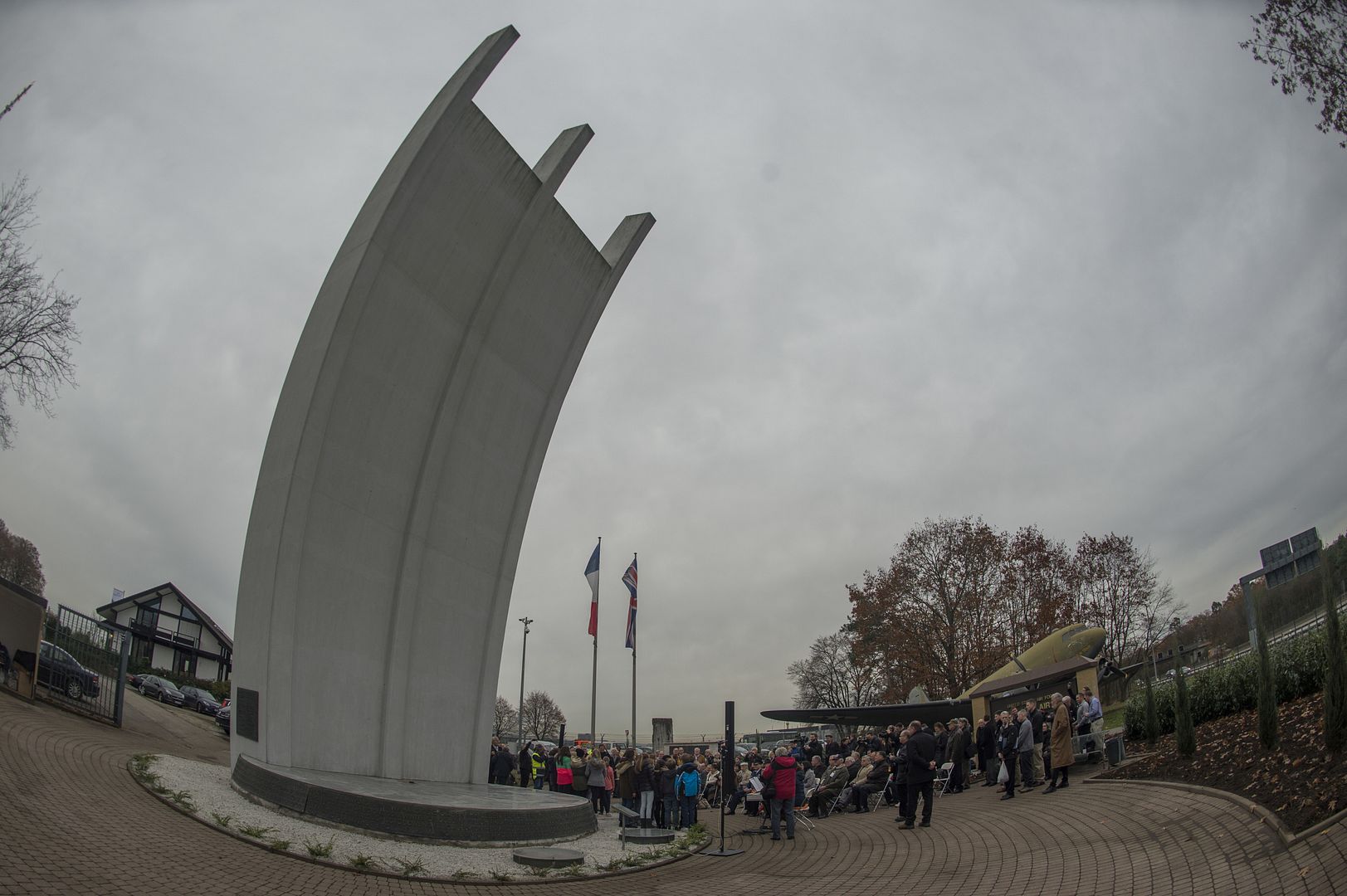
Retired U.S. Air Force Col. Gail Halvorsen, a C-52 Skymaster pilot also known as the Candy Bomber, gives a thumbs up gesture after the reopening ceremony of the Berlin Airlift Memorial outside Frankfurt International Airport, Germany, Nov. 22, 2016. Halvorsen and his fellow pilots dropped 23 tons of candy with makeshift parachutes from his C-54 as part of the Berlin Airlift, which delivered more than two million tons of food to the blockaded citizens of West Berlin between June 1948 and September 1949. (U.S. Air Force photo by Staff Sgt. Joe W. McFadden)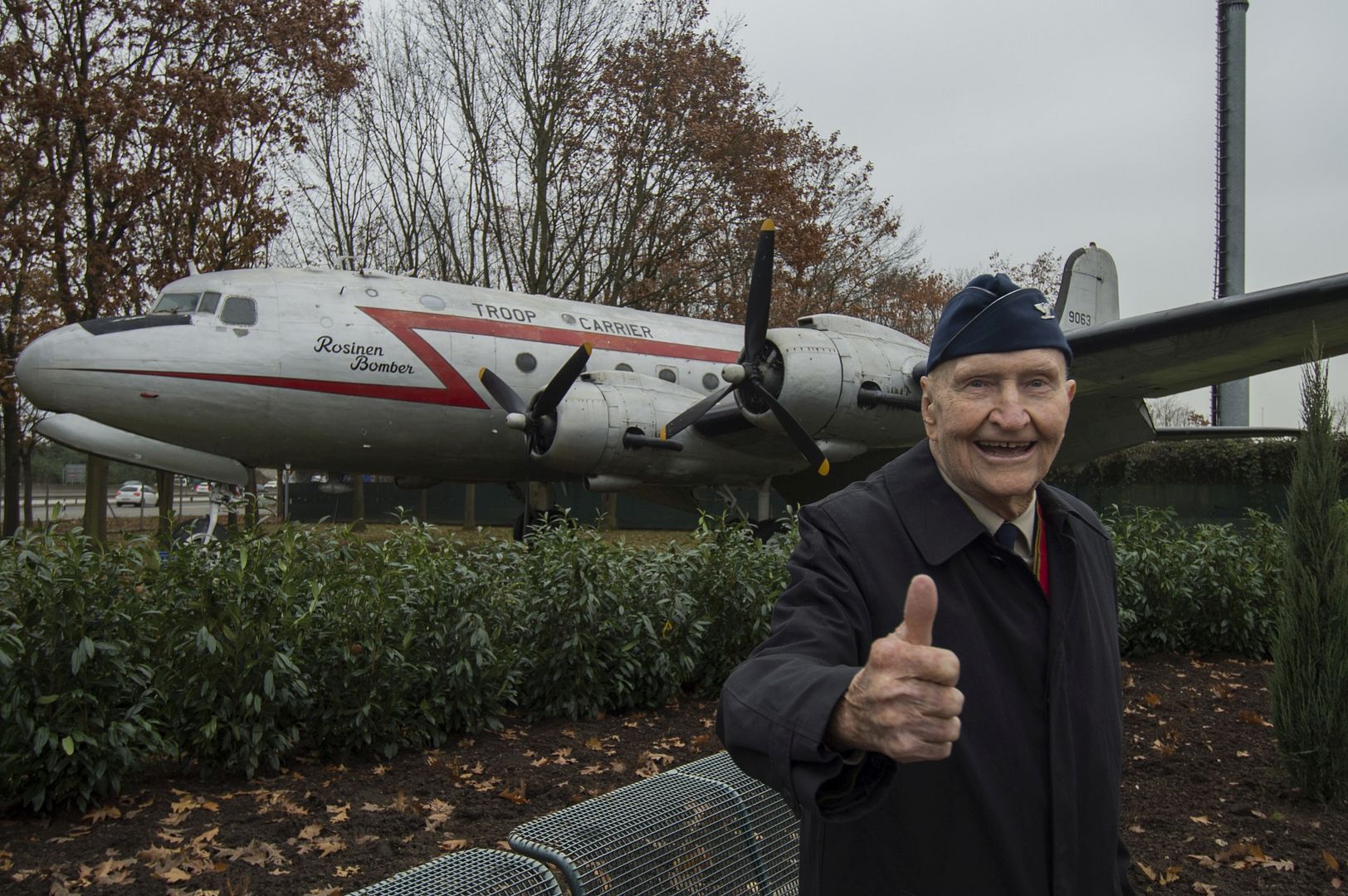
PACIFIC OCEAN (Nov. 19, 2016)
Four F-35B Lightning II aircraft perform a flyover above the amphibious assault ship USS America (LHA 6) during the Lightning Carrier Proof of Concept Demonstration. The F-35B will eventually replace three Marine Corps aircraft; the AV-8B Harrier, F/A-18 Hornet and the EA-6B Prowler. U.S. Navy photo by Andy Wolfe (Released)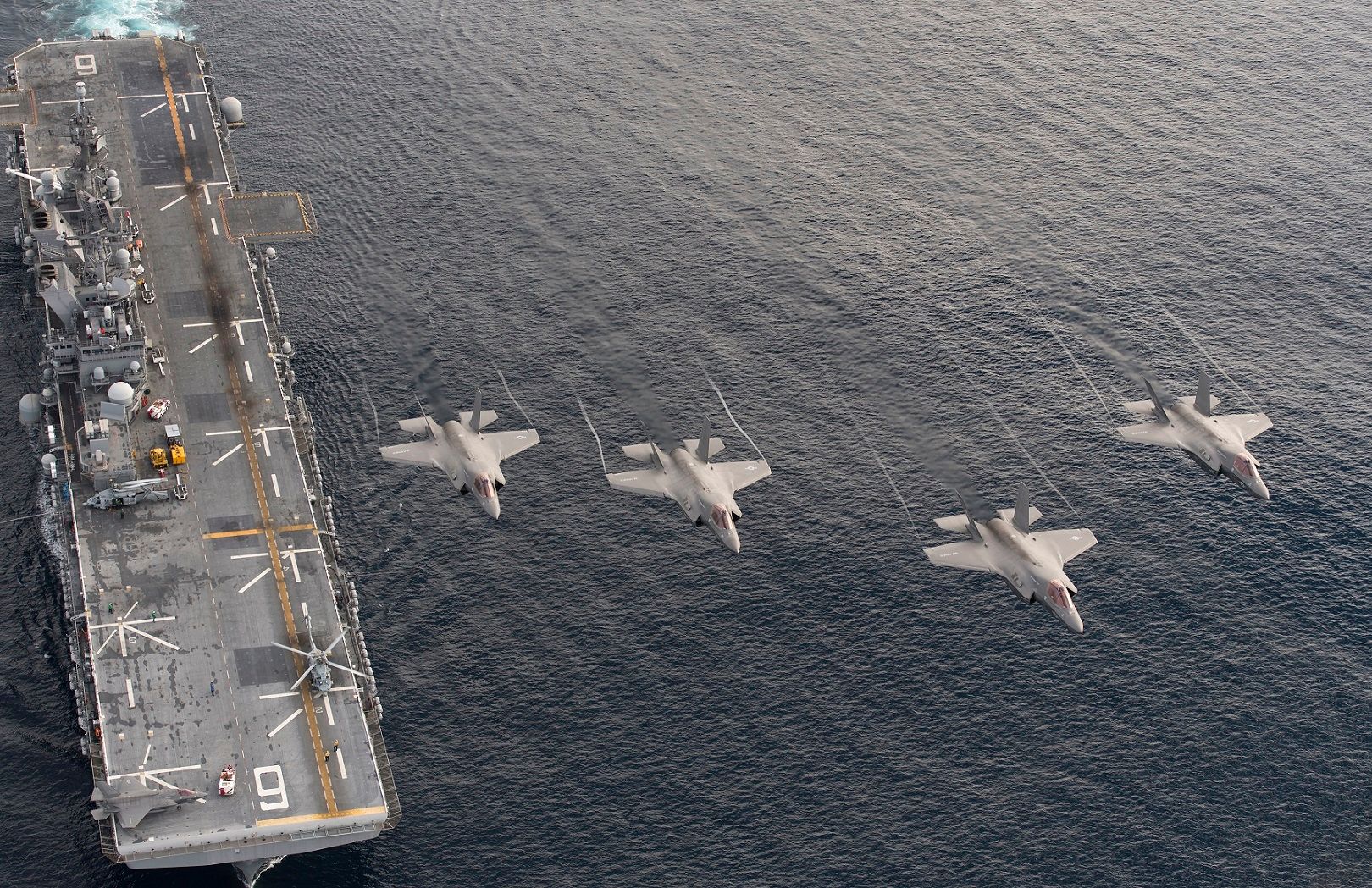
PACIFIC OCEAN (Nov. 21, 2016)
Sailors assigned to the aircraft carrier USS Carl Vinson (CVN 70) and Strike Fighter Squadron (VFA) 137 "Kestrels", direct the pilot of an F/A-18E Super Hornet on the flight deck. The Carl Vinson Strike Group recently completed Composite Training Unit Exercise in preparation for an upcoming deployment. U.S. Navy Photo by Petty Officer 3rd Class Sean M. Castellano (Released)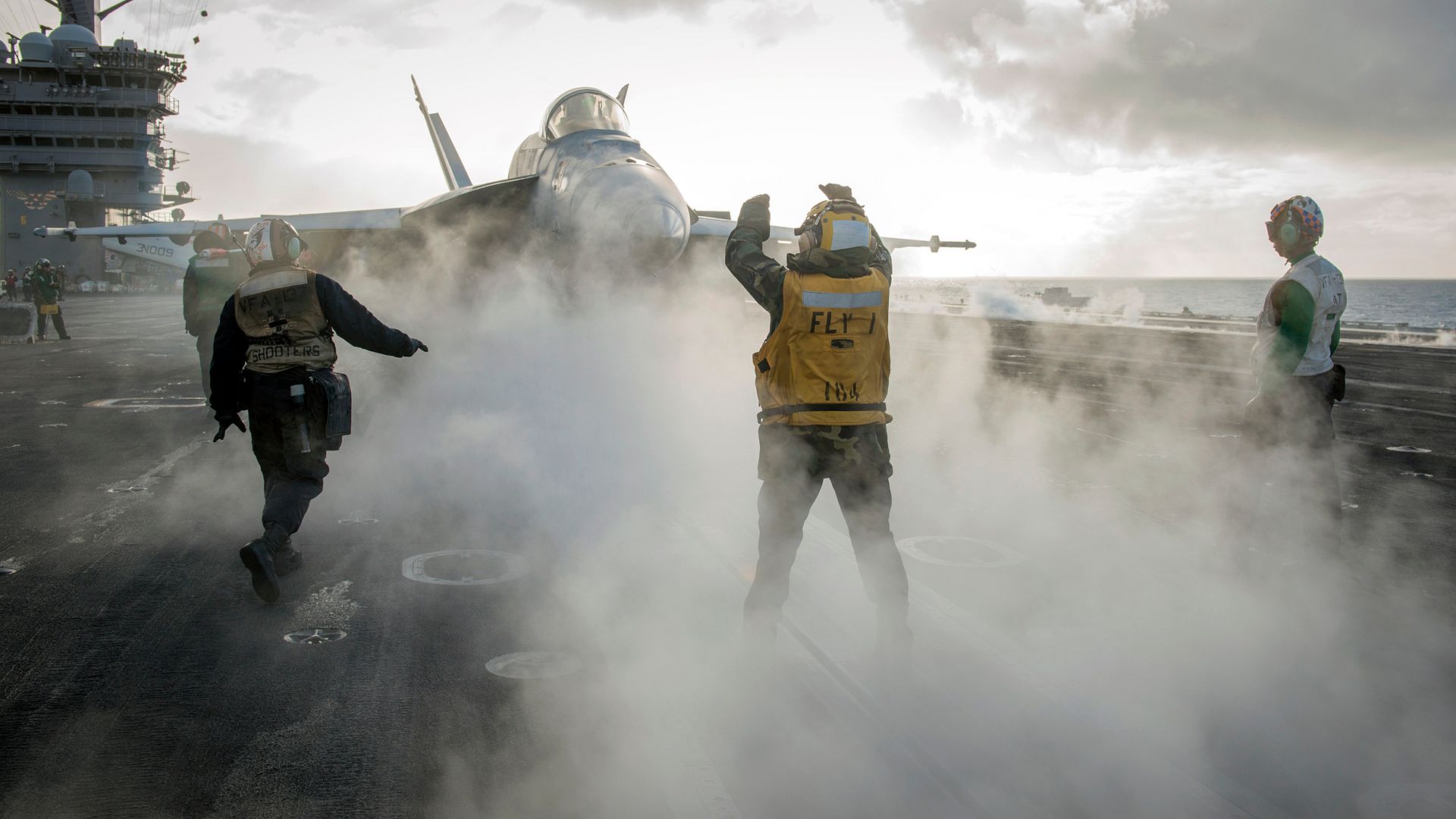
SUVA, Fiji, Nov. 22, 2016 /PRNewswire/ -- Boeing [NYSE: BA] is pleased that Fiji Airways has announced its commitment to purchase five 737 MAX 8s.
"Boeing is honored that Fiji Airways has selected the 737 MAX for its fleet renewal plan and we look forward to welcoming Fiji Airways as our newest 737 MAX customer," said Dinesh Keskar, senior vice president, Asia Pacific & India Sales, Boeing Commercial Airplanes. "The 737 MAX, with its superior economics and capability, is the ideal airplane for Fiji Airways, allowing them to expand into new markets throughout Oceania and Southeast Asia."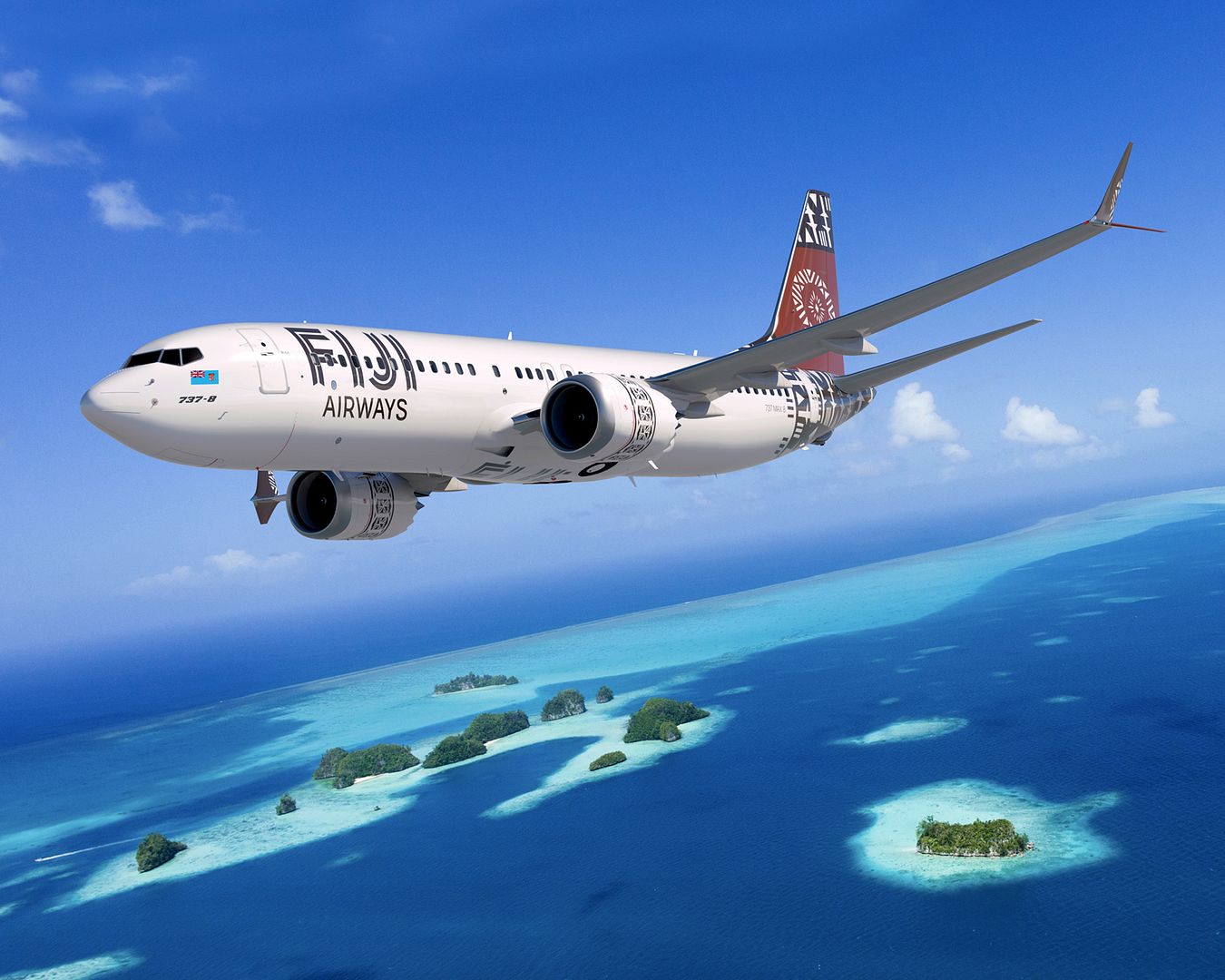
S?o Paulo, Brazil, November 22, 2016 ? Defence and security company Saab and Embraer Defense & Security have today inaugurated the Gripen Design and Development Network (GDDN) in Gavi?o Peixoto, in the state of S?o Paulo. The GDDN will be the hub for the Gripen NG technology development in Brazil for Saab and Embraer together with the Brazilian partner industries and institutions, AEL Sistemas, Atech, Akaer and the Brazilian Air Force, through its research department DCTA.
The GDDN includes the development environment and simulators required to undertake the fighter development work. In addition, the GDDN is connected to Saab in Sweden and the industrial partners in Brazil, securing both technology transfer and efficient development.
?We have a long-term commitment to Brazil. The launch of the GDDN is a key milestone in the Brazilian Gripen programme as it will be the basis for the technology transfer and fighter development in the country,? said H?kan Buskhe, CEO and president of Saab.
?Embraer and Saab have a long and proven record in the development and application of innovative technologies in the aeronautical industry. This co-operation is key to assure the best support for the Brazilian Air Force in the coming years? said Jackson Schneider, president and CEO of Embraer Defense & Security.
The GDDN facility is located at Embraer premises in Gavi?o Peixoto, where also the Gripen Flight Test Center and the Gripen Final Assembly will be based.
Facts about the transfer of technology programme
Between 2019 and 2024, 36 Gripen NG fighters will be delivered to the Brazilian Air Force. To accomplish the deliveries Saab has a strong collaborative partnership with Brazilian industry, such as; Embraer, AEL Sistemas, Akaer, Atech, Mectron, Inbra, and Atmos.
The technology transfer programme for Brazil covers four areas aiming to provide the Brazilian aerospace industry with the technology and knowledge needed to maintain and develop Gripen in Brazil:
?? Theoretical training
? Research & Technology programmes
? ? On-the-job-training in Sweden
? Development and production work
Between October 2015 and 2024, more than 350 professionals, engineers, operators, technicians and pilots from Saab?s partner companies and the air force in Brazil, will go to Sweden to participate in courses and on-the-job training. Skills and knowledge will be gained by Brazilian industry enabling extensive Gripen development and production work, including final assembly, in Brazil. As of today, about 100 Brazilian secondees have been in Sweden and started to return to Brazil earlier this month. The technology transfer programme is divided into 60 key projects, lasting up to 24 months.
Embraer will undertake a large share of work in the production and delivery of both the single and two-seat versions of the Gripen NG. The company will also be responsible for extensive work packages in systems development, integration, flight test, final assembly and aircraft deliveries. Furthermore, Embraer and Saab will be jointly responsible for the complete development of the two-seat version of the Gripen NG.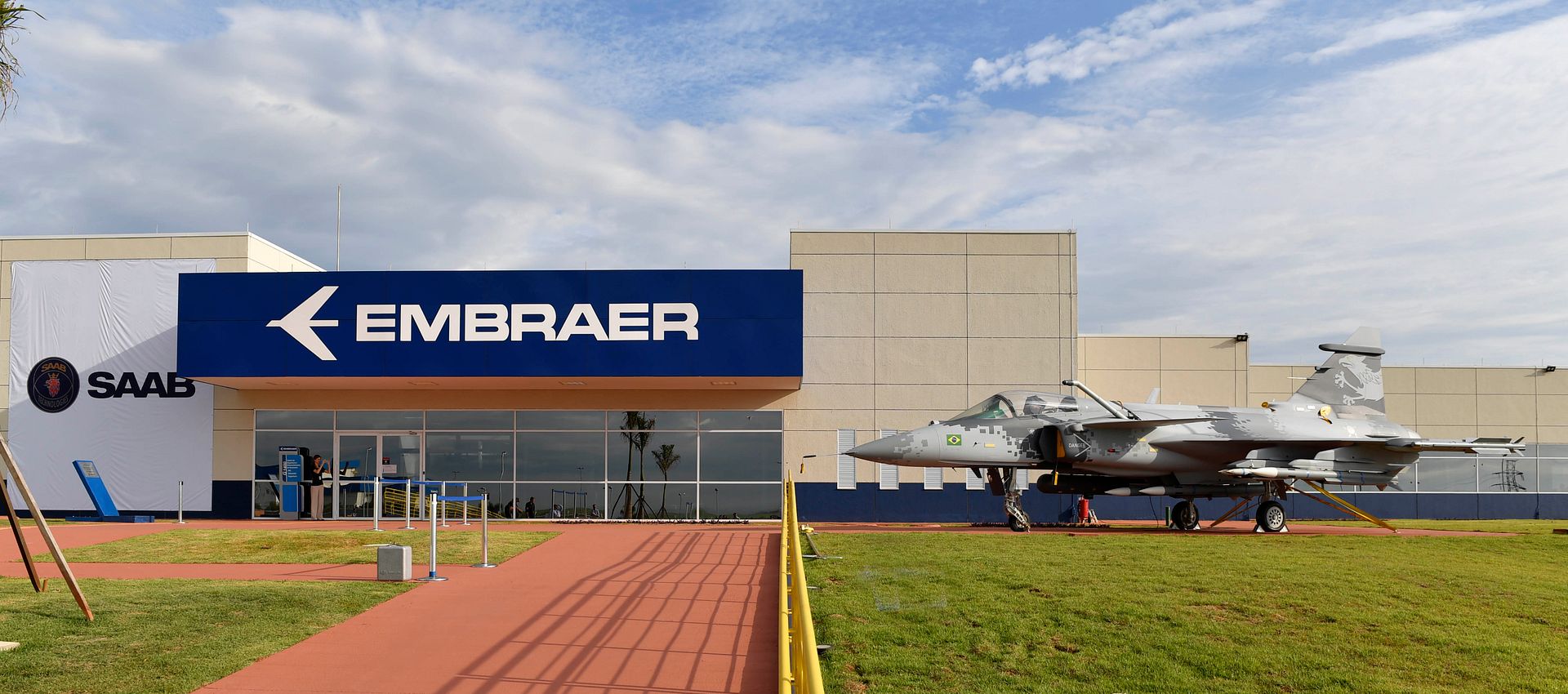
Rome 21/11/2016
Leonardo-Finmeccanica announced today the first AgustaWestland AW101 Merlin Mk4 successfully completed its maiden flight on 24th October 2016 at its Yeovil facility in southwest England. Leonardo is upgrading 25 Royal Navy Merlin Mk3/3A aircraft to Merlin Mk4/4A standard as part of the Merlin Life Sustainment Programme (MLSP) contract. The MLSP contract is valued at ?330 million and was awarded in January 2014 by the UK Ministry of Defence (MoD). Deliveries of aircraft will start in 2017 and continue through to 2020 with the work being performed at Leonardo?s Yeovil facility.
The AW101 Merlin Mk4/4A aircraft are fully optimised for ship operations and includes automatic main rotor blade folding and tail fold. The aircraft are also fitted with the same cockpit as the Royal Navy?s Merlin Mk2 aircraft, giving the Merlin fleet a common cockpit featuring five 10? x 8? integrated display units, two touch screen units for controlling the aircraft?s systems and mission equipment, as well as two cursor control devices for cursor control of the tactical displays. The AW101 Merlin Mk4 will deliver enhanced capability for the Royal Navy?s Commando Helicopter Force. The Merlin Mk4 and Mk4A aircraft will be supported through the existing Integrated Merlin Operational Support (IMOS) contract, which has been in place since 2006 with Leonardo as prime contractor.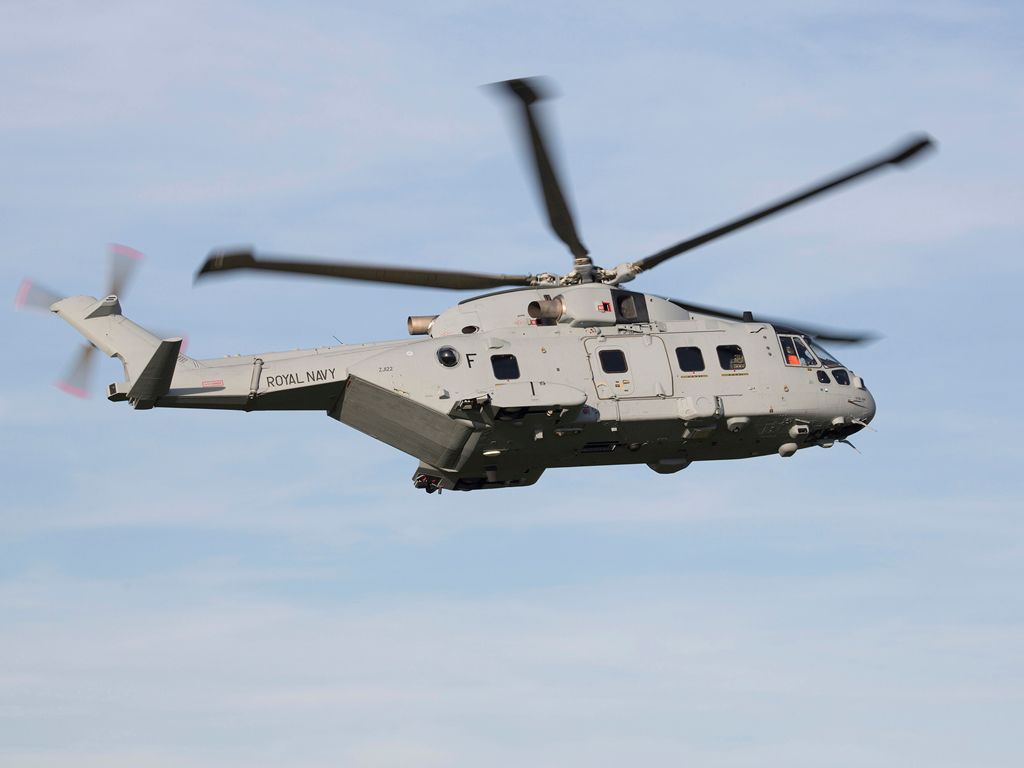
Royal Navy Captain Kieran O?Brien, the Defence Equipment & Support (DE&S) Merlin Helicopter Project Team Leader, said: ?This is a great day and a most significant achievement in the Merlin Life Sustainment Programme. The conversion of the Mk3/3a Merlin to Mk4/4a has been a real success story so far against demanding timelines and this first flight is excellent news for our Royal Navy ?Junglie? customers. The work that goes into preparing for the first flight of a new mark of aircraft is never trivial and this milestone is only made possible due to an excellent team effort led by DE&S and Leonardo Helicopters. We still have a lot of work to do but when the programme is complete the Commando Helicopter Force (CHF) will have a very capable Commando Helicopter aircraft ready to fully operate in its maritime environment.?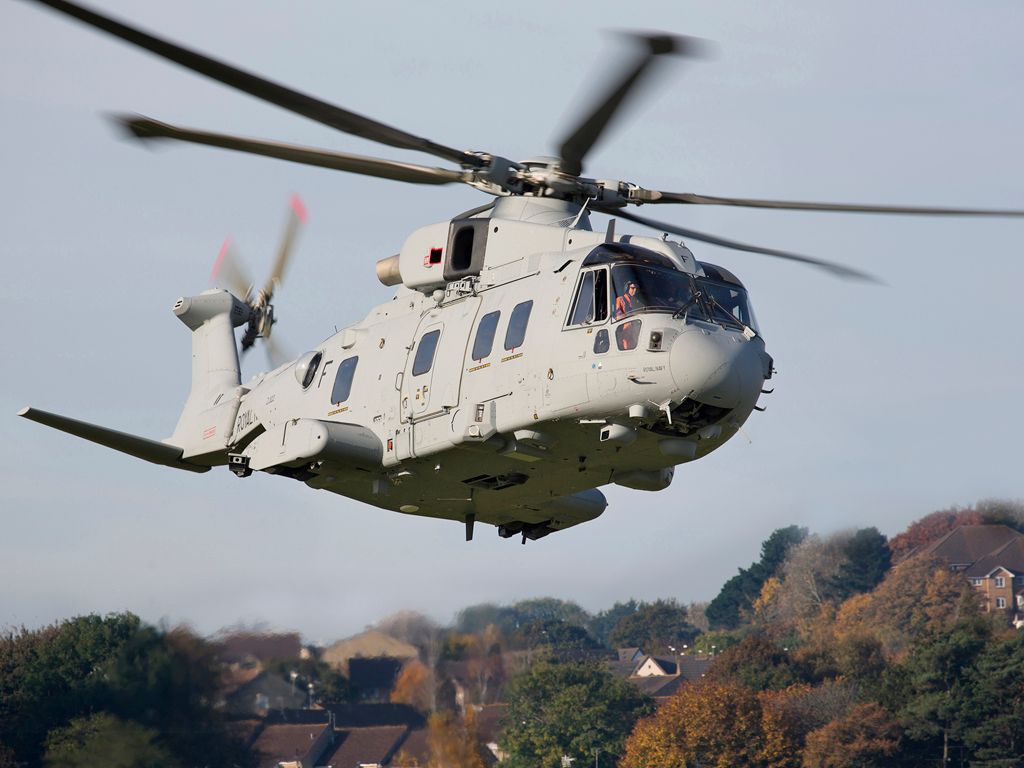
November 22, 2016 ? Ottawa ? The Government of Canada
A modern fighter jet fleet is essential for defending Canada and Canadian sovereignty ? especially in our northern skies. It is a vital contribution to our partnership with our most important ally, the United States (U.S.), and for the protection of the continent that we share.
Today, the Government of Canada has announced that it will launch, within its current mandate, an open and transparent competition to replace the legacy fleet of CF-18 fighter aircraft. This competition will ensure that the Government gets the right aircraft for our women and men in uniform ? at the right price ? while maximizing economic benefits to Canadians.
In addition, Canada will immediately explore the acquisition of 18 new Super Hornet aircraft to supplement the CF-18s until the permanent replacement arrives. The Government will enter into discussions with the U.S. Government and Boeing regarding use of these jets for an interim period of time.
Before proceeding, the Government reserves the right to decide if they can provide the interim fleet at a cost, time, level of capability, and economic value that is acceptable to Canada.
Canada?s current fleet is now more than 30 years old and is down from 138 aircraft to 77. As a result, the Royal Canadian Air Force (RCAF) faces a capability gap. We have an obligation to NORAD to have a certain number of fighter jets mission-ready at all times, as well as an obligation to NATO. The number of mission-ready planes we can put in the air today is fewer than our NORAD and NATO obligations combined. The RCAF does a good job risk-managing that gap, and has been doing so for a number of years.
Taken together, these measures will ensure that our women and men in uniform have the equipment and support they need to do the important job we ask of them every day.
Quotes
?Every Government has to decide the level of risk they are willing to accept to Canada, and our women and men in uniform. Having to manage our commitments to NORAD, NATO, and our ability to respond to unforeseen events is not a risk this Government is willing to accept. The interim fleet provides the most effective way forward to help ensure Canada remains a credible and dependable ally.?
Defence Minister Harjit S. Sajjan
?As we promised, our Government will be conducting an open and transparent competition to replace the long-serving CF-18 jets. We will also begin discussions with Boeing for the purchase of an interim fleet to deal with the capability gap. This is about getting our women and men in uniform the equipment they need to do their jobs and protect Canadians in the most effective way possible while maximizing economic benefits for the middle class and those working hard to join it.?
Public Services and Procurement Minister Judy Foote
?Today?s announcement demonstrates how our Government is working to generate strong and sustained economic benefits for Canadian companies. The replacement of Canada?s CF-18 fleet will help grow Canada?s aerospace sector, create high-value jobs, and support Canadian innovation.?
Innovation, Science and Economic Development Minister Navdeep Bains
?History and a future fraught with risk demands that the Canadian Armed Forces be ready and capable to respond to threats to Canada and North America, and support our allies and those in need. Our women and men in uniform are the guarantors of Canadian sovereignty, and protectors of Canadian values and interests abroad. I am delighted that our women and men in the RCAF are embarking on a journey that assures our defence for the long-term.?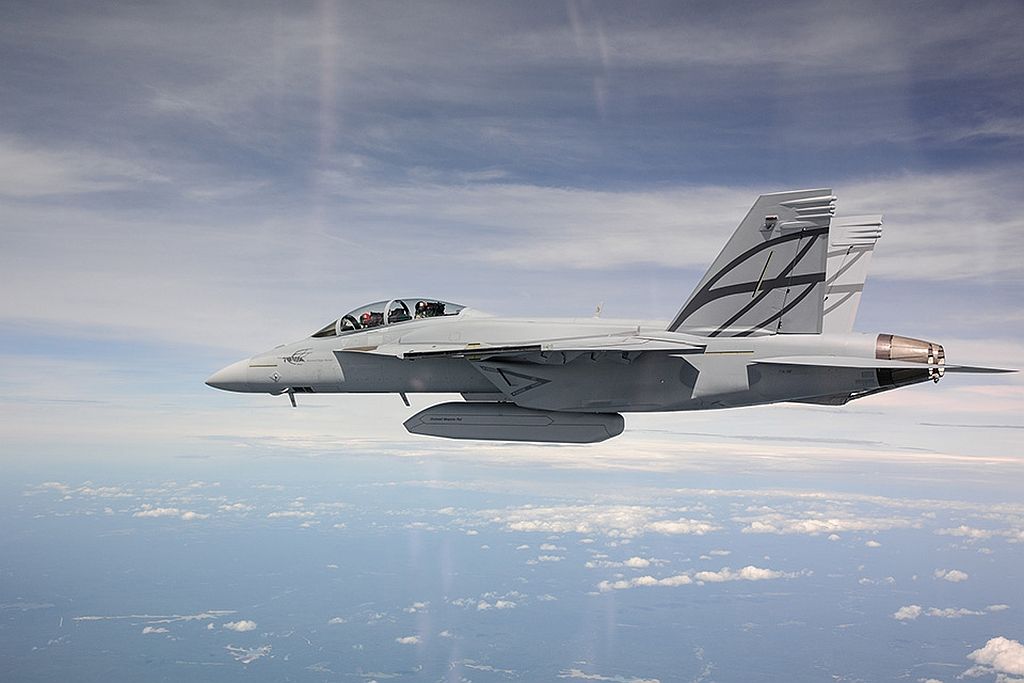
General Jonathan Vance, Chief of the Defence Staff
-
 Main AdminA U.S. Air Force C-17 Globemaster III, assigned to the 517th Airlift Squadron, prepares to drop a heavy equipment pallet over Malemute drop zone, Joint Base Elmendorf-Richardson, Alaska, Nov. 22, 2016. After dropping two heavy equipment pallets, each holding a 105 mm howitzer, paratroopers assigned to A Battery, 2nd Battalion, 377th Parachute Field Artillery Regiment, 4th Infantry Brigade Combat Team (Airborne), 25th Infantry Division, U.S. Army Alaska, conducted a training airborne assault. (U.S. Air Force photo/Alejandro Pena)
Main AdminA U.S. Air Force C-17 Globemaster III, assigned to the 517th Airlift Squadron, prepares to drop a heavy equipment pallet over Malemute drop zone, Joint Base Elmendorf-Richardson, Alaska, Nov. 22, 2016. After dropping two heavy equipment pallets, each holding a 105 mm howitzer, paratroopers assigned to A Battery, 2nd Battalion, 377th Parachute Field Artillery Regiment, 4th Infantry Brigade Combat Team (Airborne), 25th Infantry Division, U.S. Army Alaska, conducted a training airborne assault. (U.S. Air Force photo/Alejandro Pena)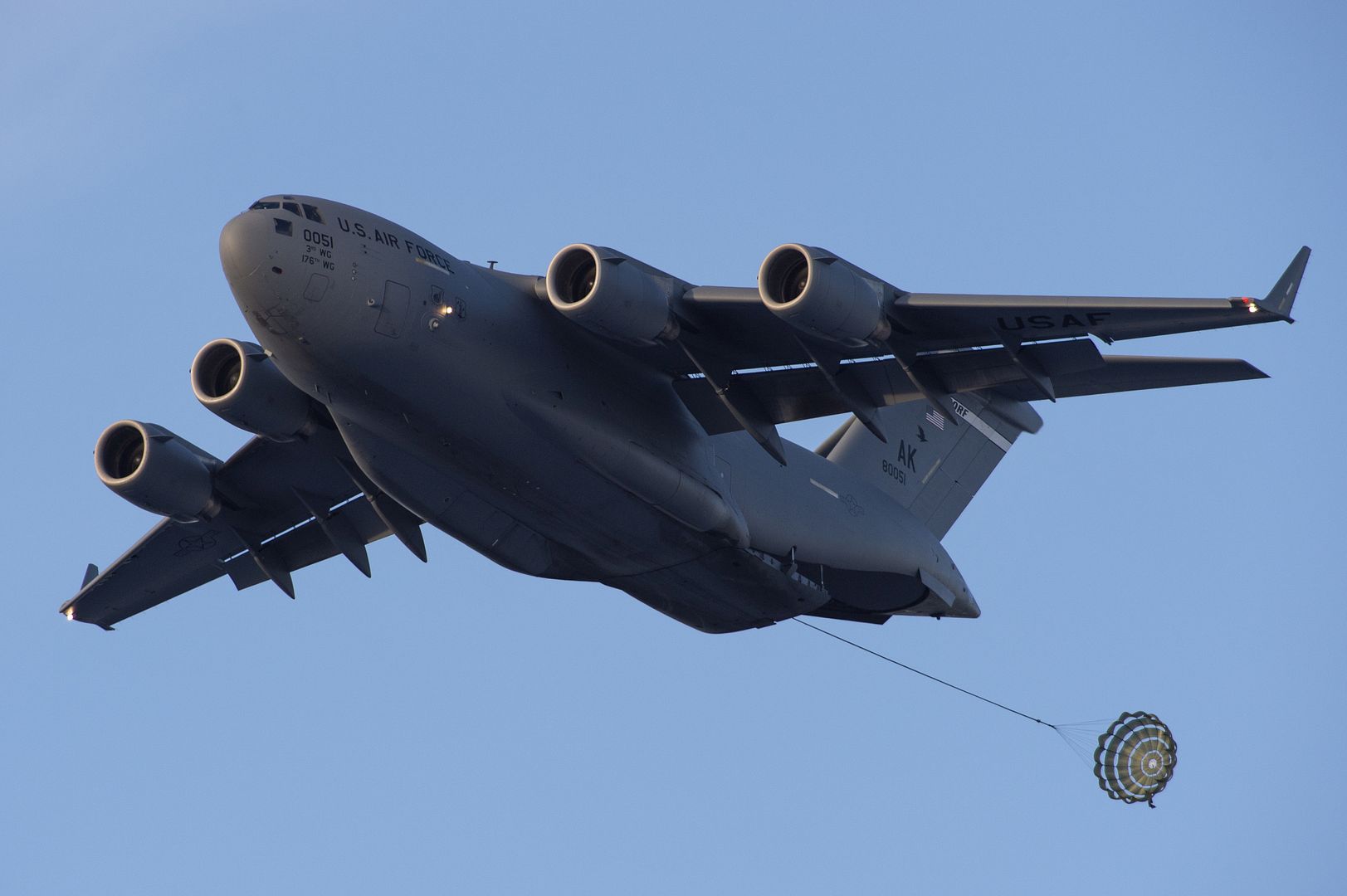
A U.S. Air Force C-17 Globemaster III, assigned to the 517th Airlift Squadron, drops a heavy equipment pallet over Malemute drop zone, Joint Base Elmendorf-Richardson, Alaska, Nov. 22, 2016. After dropping two heavy equipment pallets, each holding a 105 mm howitzer, paratroopers assigned to A Battery, 2nd Battalion, 377th Parachute Field Artillery Regiment, 4th Infantry Brigade Combat Team (Airborne), 25th Infantry Division, U.S. Army Alaska, conducted a training airborne assault. (U.S. Air Force photo/Alejandro Pena)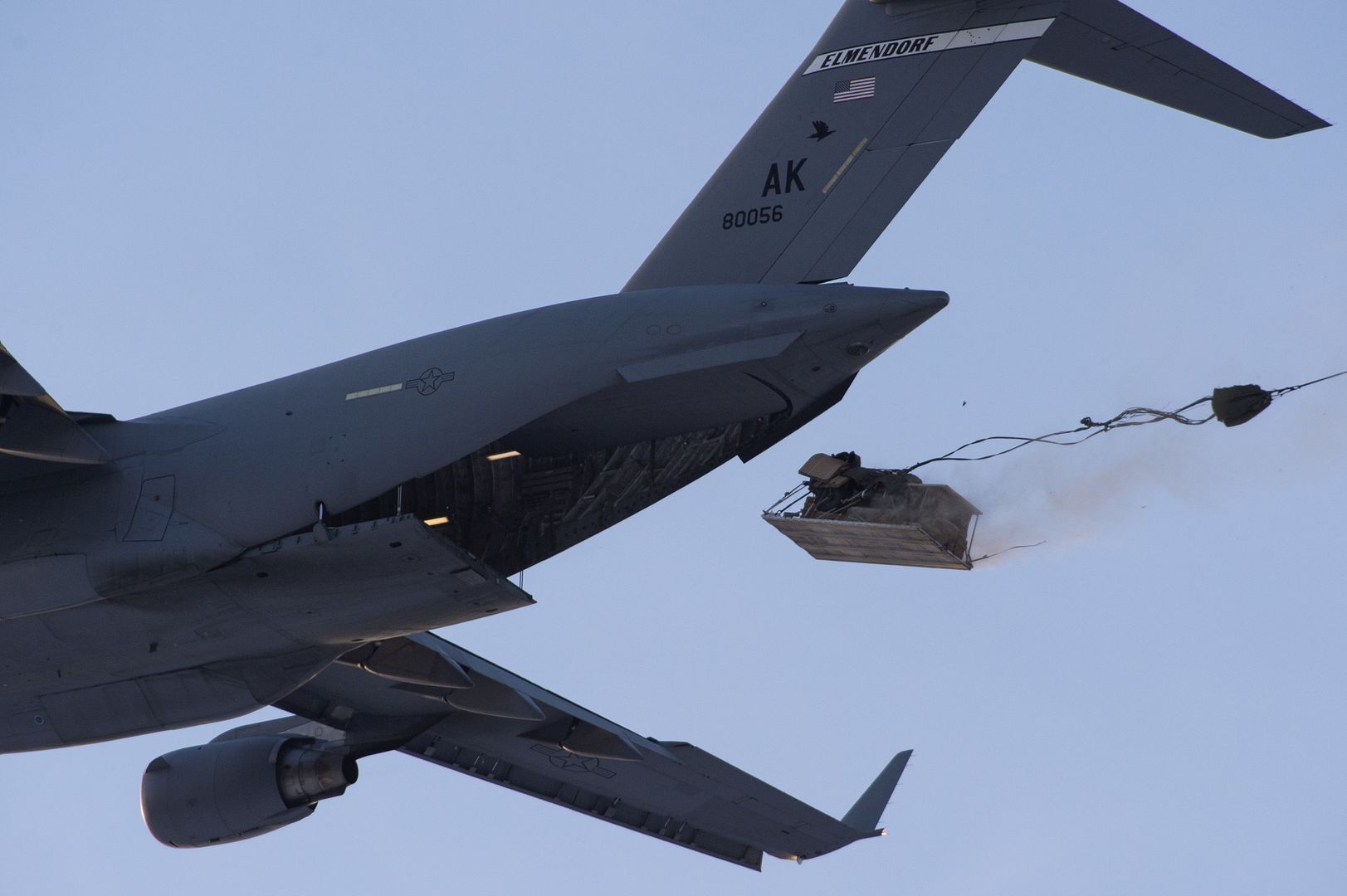
24 November 2016 Press Release
The first A350-1000 took off this morning for its maiden flight at Blagnac in Toulouse, France at 10.42 hrs local time. The A350-1000 is Airbus? largest and most powerful twin-engined airliner ever ? and the world?s most fuel efficient large widebody. Equipped with specially developed Rolls-Royce Trent XWB-97 turbofans, the A350-1000?s first flight is taking place over south-western France.
The crew in the cockpit on board this flight comprise: Hugues van der Stichel, Experimental Test Pilot; Frank Chapman, Experimental Test Pilot and G?rard Maisonneuve, Test-Flight Engineer. Furthermore, monitoring all the test parameters at the Flight-Test-Instrumentation (FTI) station behind the cockpit are: Patrick du Ch?, Head of Flight & Integration Tests; Emanuele Costanzo, Head of A350 Development Flight Tests; and St?phane Vaux, Flight-Test Engineer.
Benefitting from the experience of the original A350-900 test campaign (accomplished in 2014), the A350-1000?s development programme will be shorter ? under one year for the three aircraft. The overall campaign will culminate in the type?s certification followed by its entry into airline service scheduled for the second half of 2017.
The A350-1000 is the latest member of the Airbus leading widebody family, together with the A330neo, offering unprecedented levels of operating efficiency, low noise and true long-range capability. As well as having a longer fuselage to accommodate 40 more passengers than the A350-900, the A350-1000 also features a modified wing trailing-edge, new six-wheel main landing gears and more powerful Rolls-Royce Trent XWB-97 engines. The A350-1000 embodies all of the fuel efficiency and ?Airspace? cabin comfort of the original A350-900 ? but with extra size perfectly tailored for our customers on some of their busiest long-haul routes. To date 11 customers from five continents have placed orders for a total of 195 A350-1000s.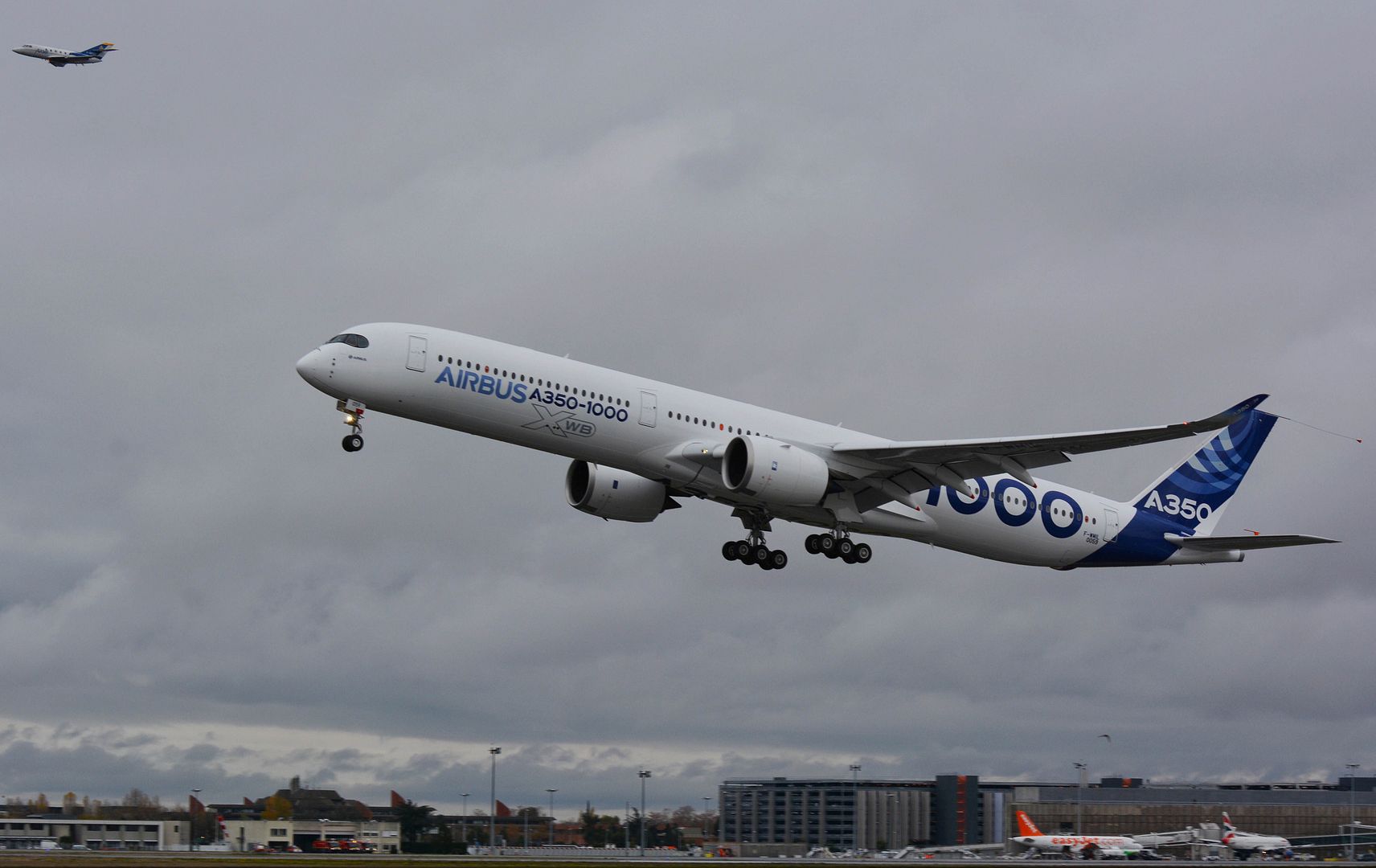
November 23, 2016 Montr?al Commercial Aircraft, Press Release
Bombardier Commercial Aircraft announced today that Transport Canada and the European Aviation Safety Agency (EASA) have awarded the CS100 and CS300 airliners with the Same Type Rating (STR) which provides operators with significant cost-saving opportunities.
?The Same Type Rating is a reflection of the high commonality between the CS100 and CS300 aircraft. This is great news for customers that operate both aircraft as they will benefit from the cost-effective, minimal training required to transition pilots from one model to the other. The commonality also extends to spare parts, maintenance procedures and ground handling, which altogether represent significant financial advantages to customers,? said Todd Young, Vice President and General Manager, Customer Services, Bombardier Commercial Aircraft.
The CS100 and CS300 aircraft feature over 99 per cent parts commonality ? the highest level of parts commonality achieved by a manufacturer in the industry. The models are not stretched or shrunken versions of each other, but were designed side by side with only the center section being longer on the larger CS300 aircraft. The aircraft are therefore both specifically optimized for their size, without any compromise on weight, performance or economics.
?I would also like to applaud airBaltic?s six core pilots who recently completed their differences training and are now qualified to fly the CS300 aircraft,? added Mr. Young.
About C Series Aircraft
The C Series is the only aircraft optimized for the 100- to 150-seat market segment, which drives the aircraft?s phenomenal economic proposition and performance, opening up new opportunities for single-aisle aircraft operation. The C Series aircraft is manufactured by the C Series Aircraft Limited Partnership, an affiliate of the Bombardier Commercial Aircraft segment of Bombardier Inc.
Comprised of the CS100 and the larger CS300 aircraft, the C Series family represents the fusion of performance and technology. The result is aircraft that deliver unmatched performance and economics in the 100- to 150-seat market segment and an 18 per cent lower cost per passenger, making them the ideal candidates to complement larger single-aisle aircraft. Airlines can now operate routes that were previously not profitable or even possible. An improvement in range in excess of 20 per cent out of hot-and-high airports such as Denver, Mexico City or Lhasa has been confirmed.
Bombardier has created a new standard in cabin design and flexibility to ensure an unrivalled passenger experience. The aircraft?s larger seats, overhead bins and windows deliver a wide body feel that offers passengers unparalleled comfort in a single-aisle cabin.
The CS100 and the CS300 aircraft have over 99 per cent parts commonality as well as Same Type Rating. The groundbreaking Pratt & Whitney PurePower? PW1500G engine, combined with the aircraft?s advanced aerodynamics, delivers reduced fuel burn, noise, and emissions ? making the C Series the most community-friendly aircraft.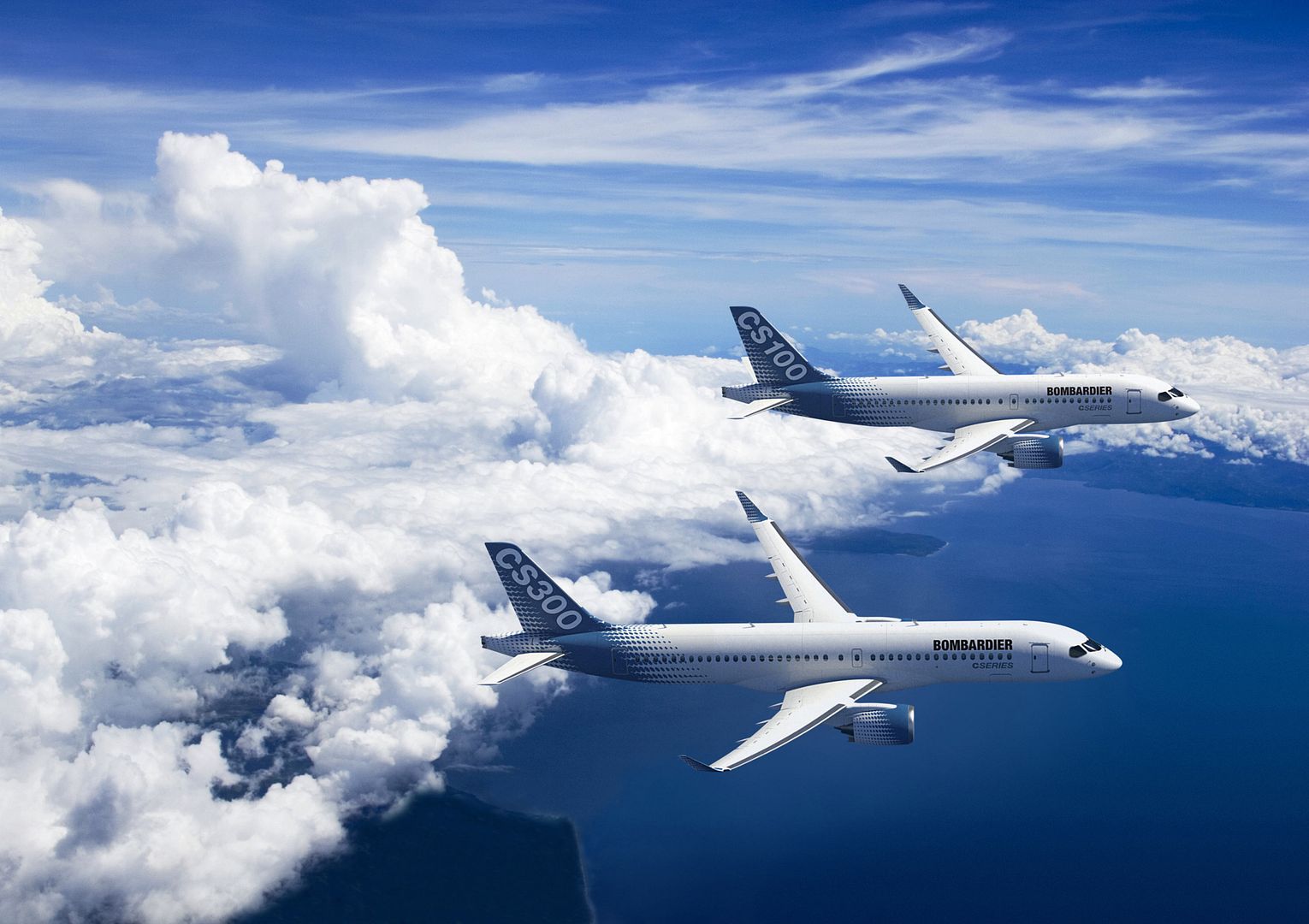
Alpha Jetman ? Human Flight And Beyond 4K
-
 Main AdminARABIAN GULF (Nov. 22, 2016) An F/A-18F Super Hornet assigned to the Fighting Swordsmen of Strike Fighter Squadron (VFA 32) undergoes pre-flight checks on the flight deck of the aircraft carrier USS Dwight D. Eisenhower (CVN 69) (Ike). Ike and its carrier strike group are deployed in support of Operation Inherent Resolve, maritime security operations and theater security cooperation efforts in the U.S. 5th Fleet area of operations. (U.S. Navy photo by Petty Officer 3rd Class Robert J. Baldock)
Main AdminARABIAN GULF (Nov. 22, 2016) An F/A-18F Super Hornet assigned to the Fighting Swordsmen of Strike Fighter Squadron (VFA 32) undergoes pre-flight checks on the flight deck of the aircraft carrier USS Dwight D. Eisenhower (CVN 69) (Ike). Ike and its carrier strike group are deployed in support of Operation Inherent Resolve, maritime security operations and theater security cooperation efforts in the U.S. 5th Fleet area of operations. (U.S. Navy photo by Petty Officer 3rd Class Robert J. Baldock)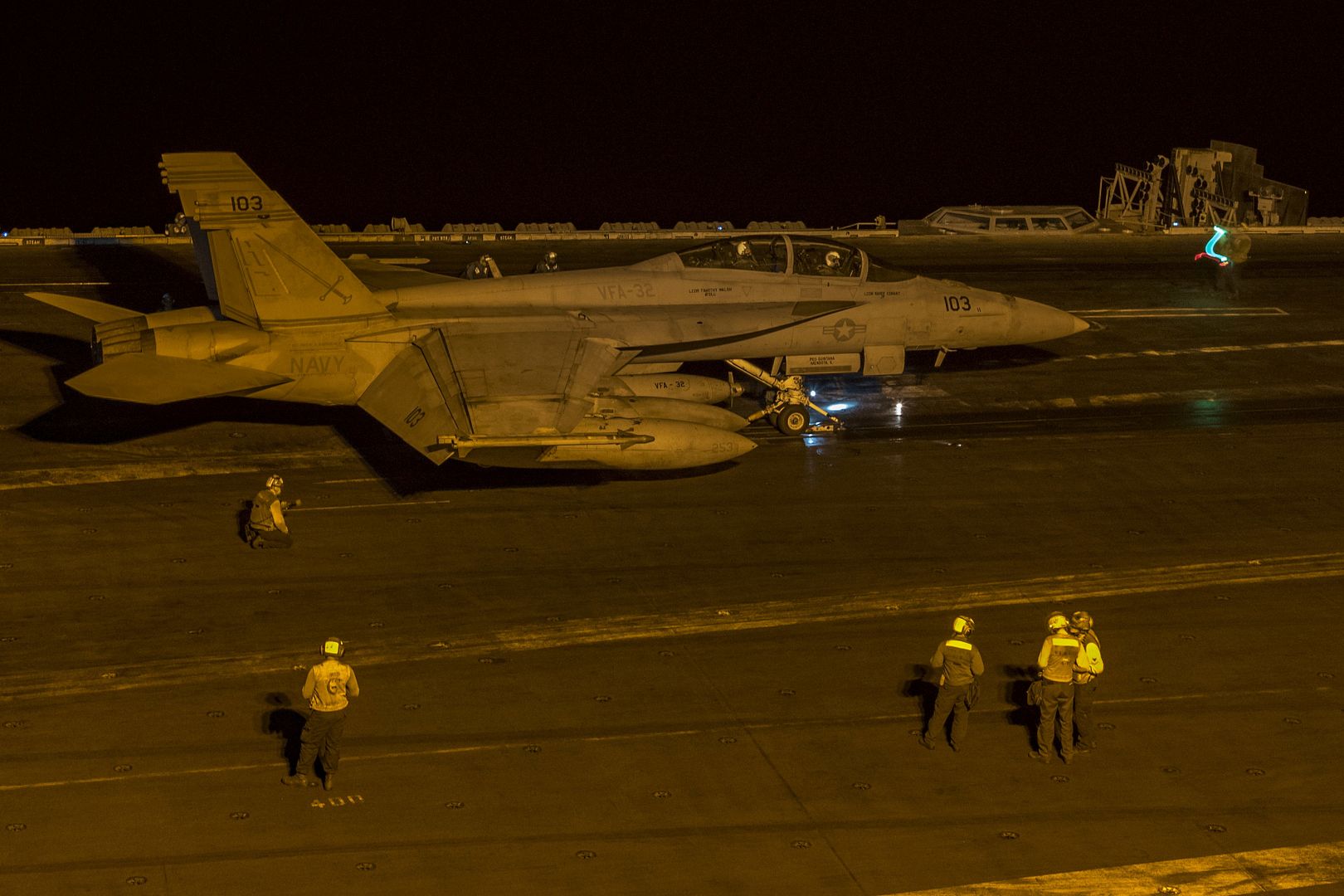
U.S. Air Force Airmen inspect the engines of a C-17 Globemaster III with flashlights on Joint Base Elmendorf-Richardson, Alaska, in the early morning hours of Nov. 23, 2016. Aircraft maintenance Airmen ensure JBER planes are ready to fly whenever, and wherever they are needed. (U.S. Air Force photo by Justin Connaher)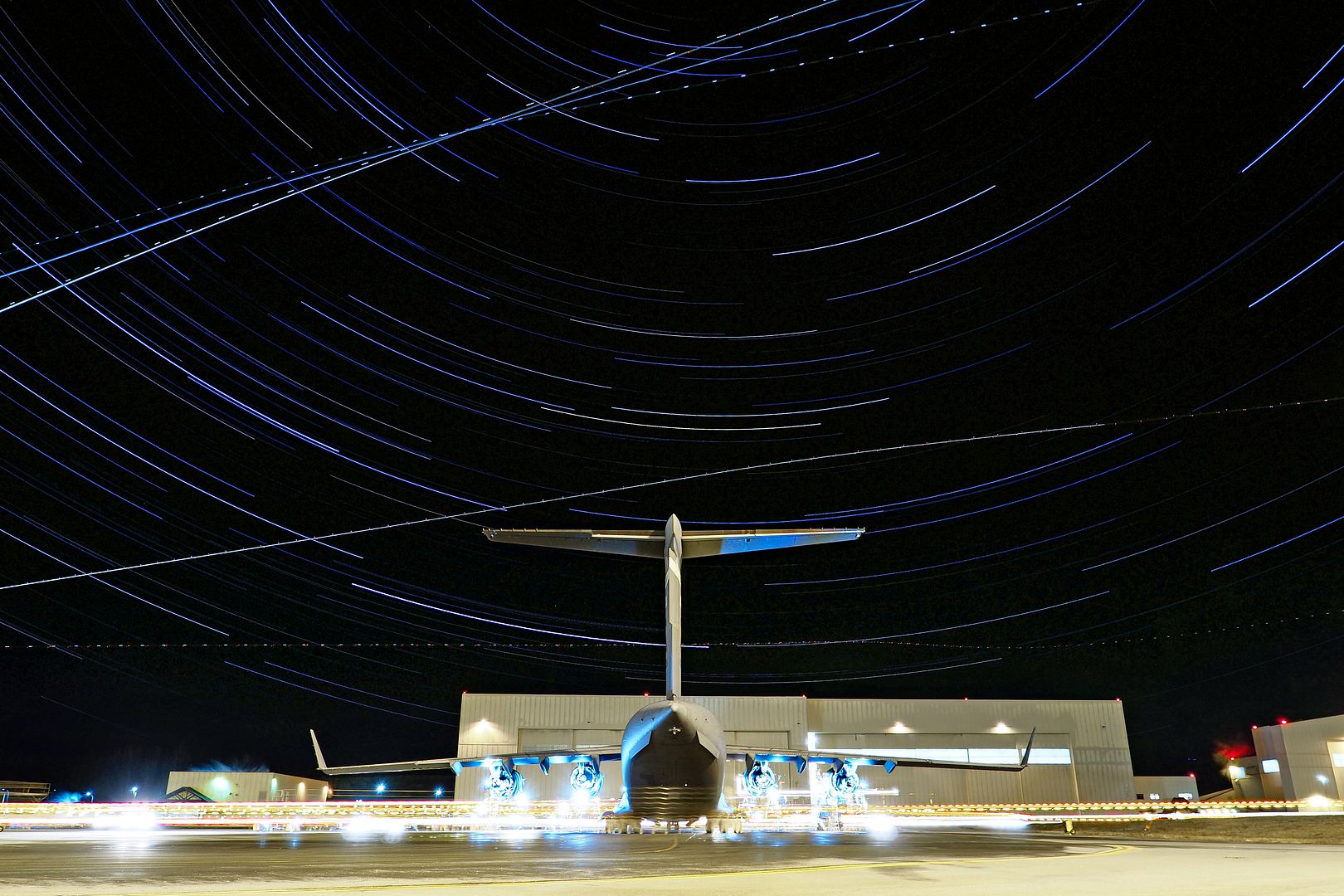
24 November 2016 Headline news
The maiden flight of Airbus? A350-1000 ? the latest member of the all-new A350 XWB widebody family that is shaping the future of long-haul airline operations ? has initiated a fast-paced test and certification programme leading to the jetliner?s service entry next year.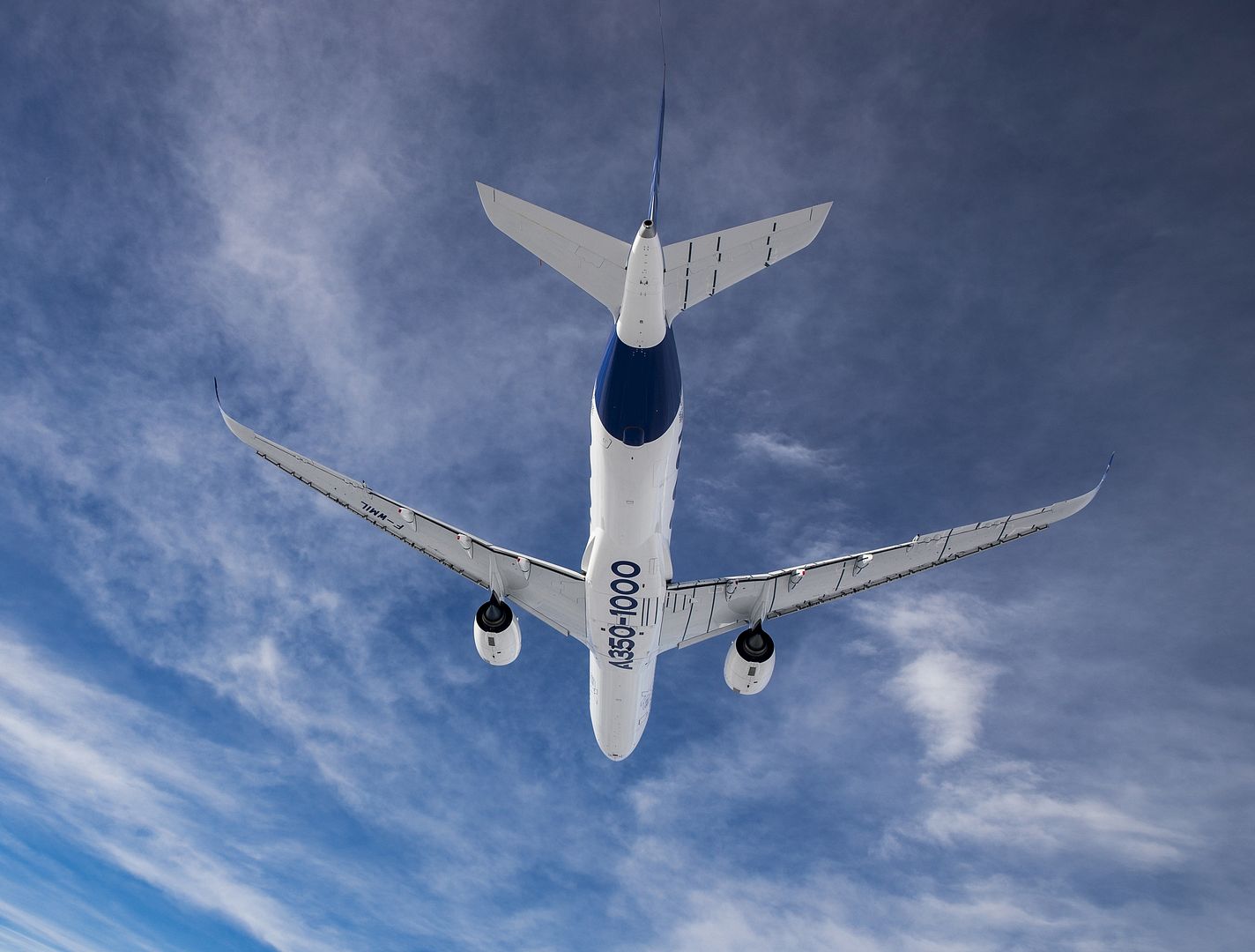
During more than 4 hours aloft today, this longest-fuselage version of the A350 XWB demonstrated the performance and efficiency that will be appreciated by airline and aircraft leasing customers worldwide ? 11 of which already have ordered 195 A350-1000s from the Middle East, North America, Asia, Europe, Latin America and the Caribbean.
Performing today?s initial in-flight evaluation from Toulouse-Blagnac Airport in southwestern France was the aircraft bearing the Manufacturing Serial Number 59 (MSN059) ? one of three jetliners that will participate in the A350-1000 flight test and certification campaign.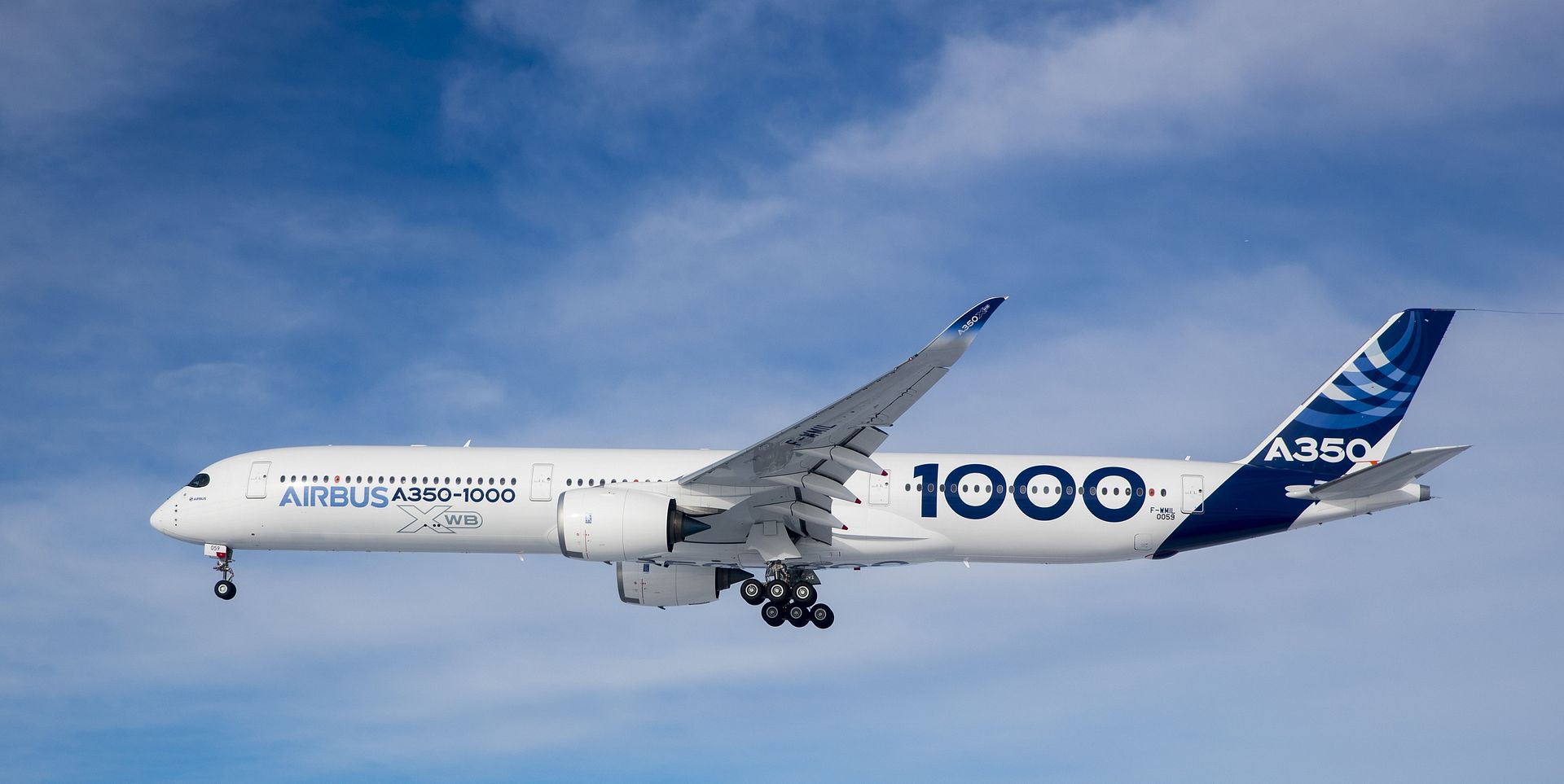
Range, comfort, capacity and efficiency combined
Measuring nearly 74 metres from nose to tail, the A350-1000 is offering a maximum range of 7,950 nautical miles. It is designed for high efficiency, maximum reliability and optimised performance while offering passengers best-in-class comfort with its ?Airspace by Airbus? cabin.
The A350-1000?s longer fuselage translates to greater capacity, seating 366 passengers (+40 seats compared to the A350-900) in a typical three-class configuration, and answers market needs with a larger premium area to accommodate first class and business class travellers.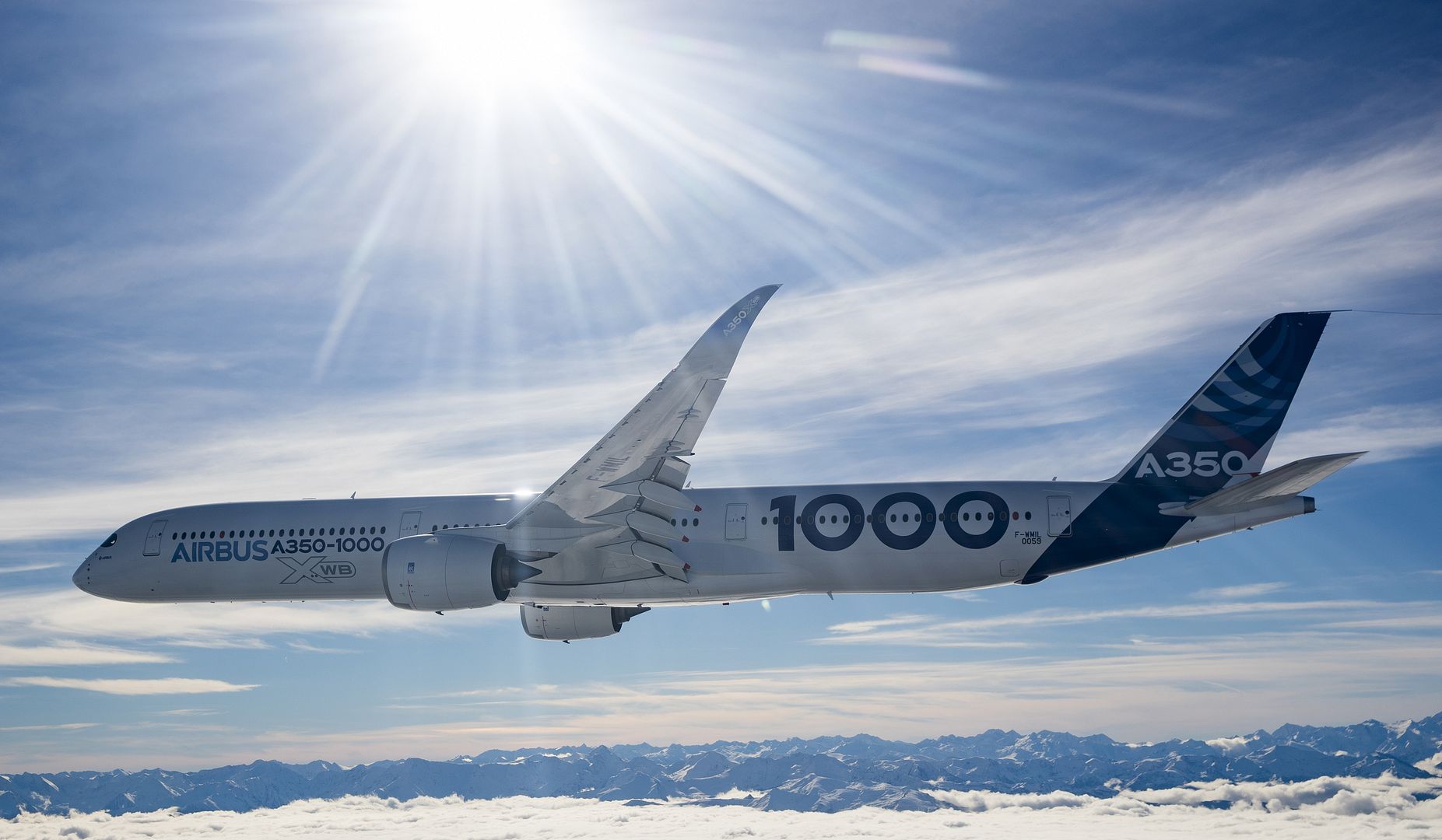
Further enhancing the A350-1000?s efficiency are its latest-generation Rolls-Royce Trent XWB-97 turbofan jet powerplants ? the world?s most efficient large aero engines flying today.
Deliveries of the A350-1000 are planned to begin in the second half of 2017 with launch customer Qatar Airways (which has ordered 37 aircraft). Other carriers that have booked A350-1000s are United Airlines (with 35 on order), Cathay Pacific (26), Etihad (22) British Airways (18), LATAM (14), Japan Airlines (13), Asiana Airlines (10), Air Lease Corporation (9), Virgin Atlantic (8), and Air Cara?bes (3).
The A350-1000 and A350-900: shared family traits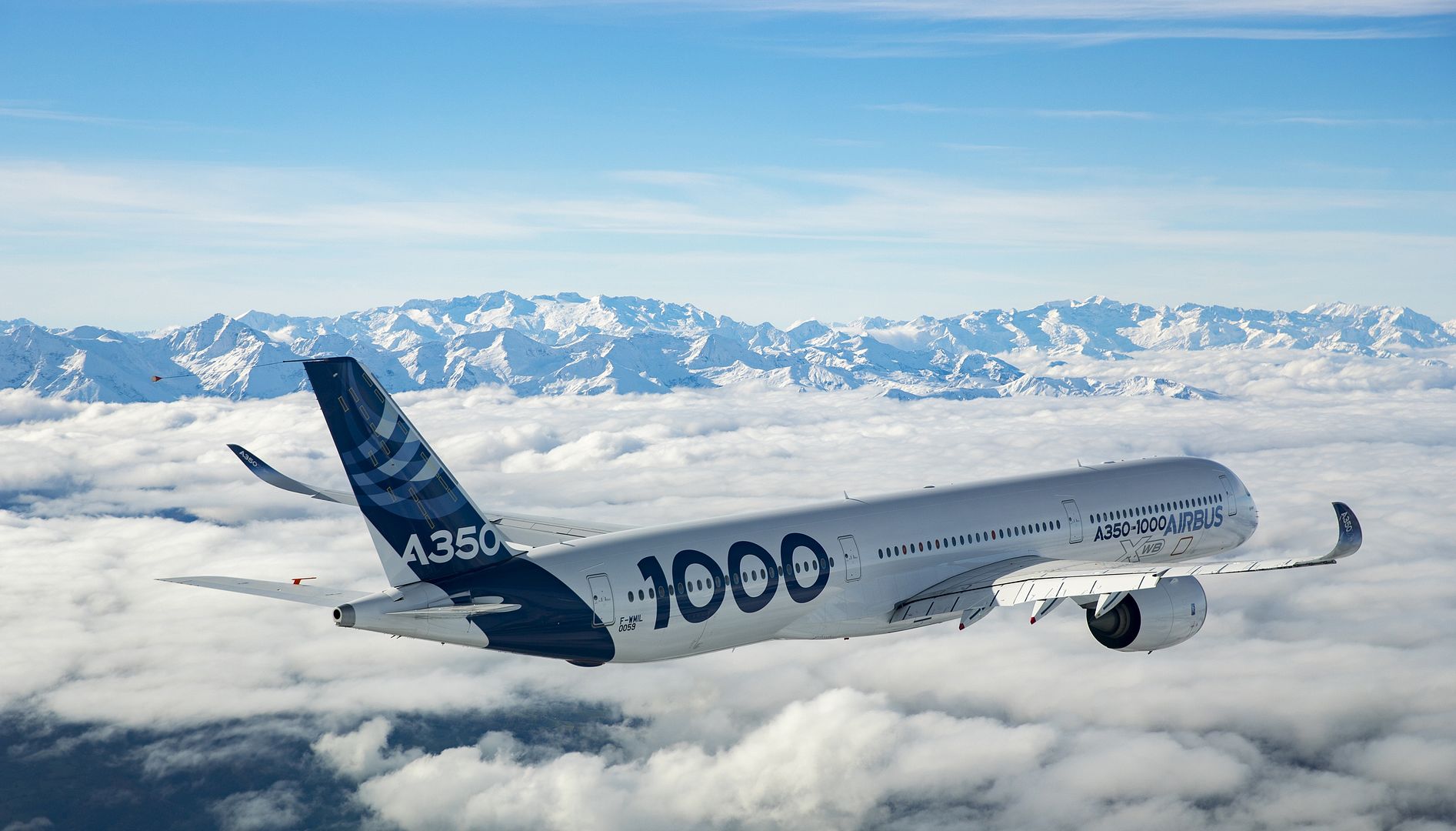
The A350-1000 builds on the success of Airbus? shorter-fuselage A350-900 that entered service in January 2015 and is operated today by nine airlines, which are flying nearly 50 of these jetliners on routes around the globe.
Both A350 XWB versions benefit from an all-new fuselage ? built with carbon-fibre reinforced plastic (CFRP) and sized at a 221-inch cross-section for more personal space and exclusive in-flight experience in all classes of service ? and they share an unprecedented level of commonality, with 95 per cent common systems part numbers and the same type rating for pilots.
The A350-1000 and A350-900 bring together the very latest in aerodynamics ? such as their unique morphing wings designed to reduce drag and lower fuel burn ? and advanced technologies for a 25 per cent step change in operating cost compared to its current long-range competitor, underscoring that it is the ?Xtra? that makes the difference.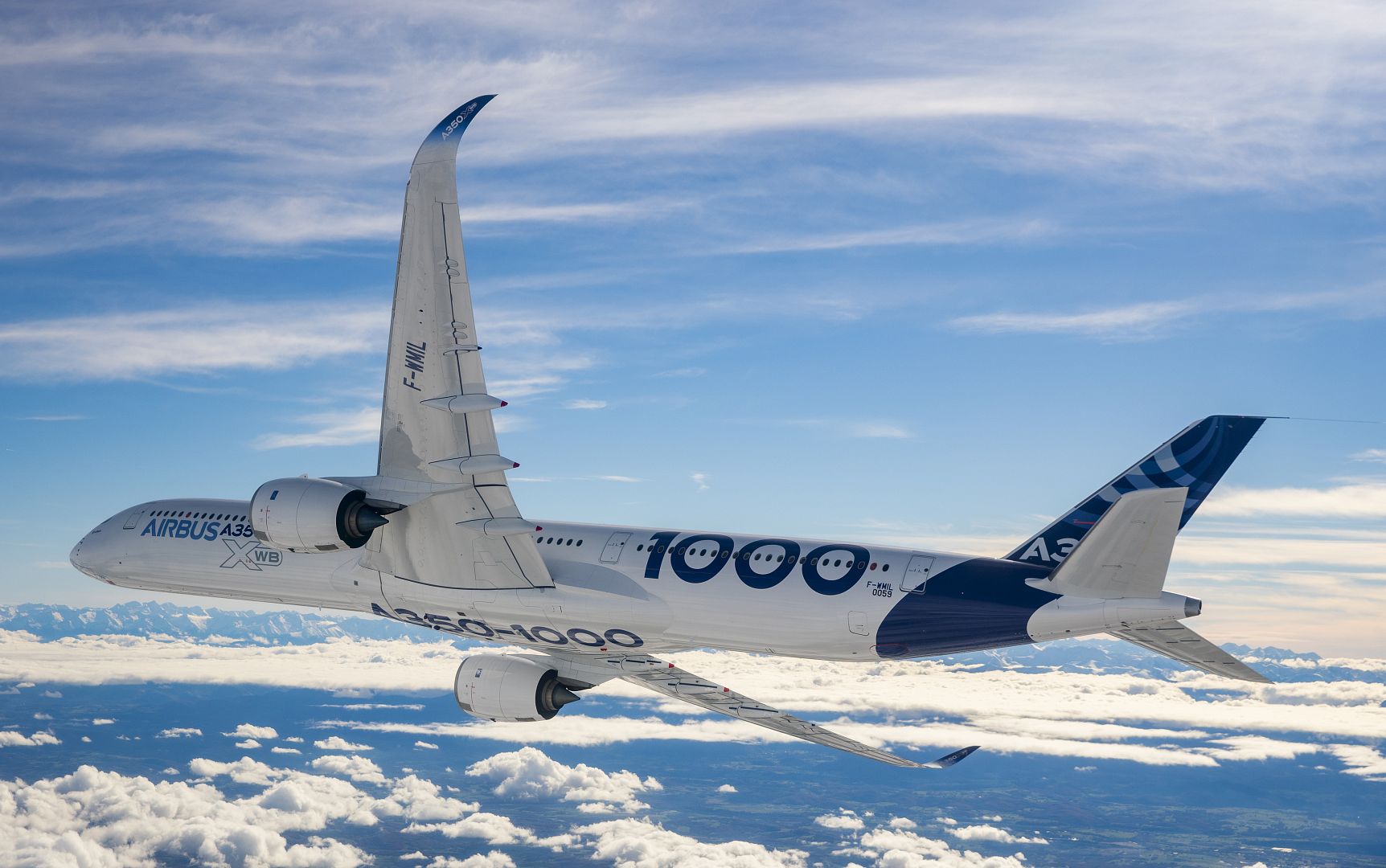
News Article / November 23, 2016
The Royal Canadian Air Force?s Golden Hawks aerobatic team will receive the 2017 ?Belt of Orion Award for Excellence? from Canada?s Aviation Hall of Fame (CAHF).
The RCAF?s Golden Hawks aerobatic team was formed in March 1959 to celebrate the 50th anniversary of flight in Canada and the 35th anniversary of the Royal Canadian Air Force. It was the first official Canadian national aerobatic team and its mandate was to showcase RCAF capabilities to the Canadian public. The Golden Hawks were to operate Canadair F-86 Sabre Mk 5 aircraft from RCAF Station Chatham, New Brunswick, and to exist for one year. Under the leadership of Squadron Leader Fern Villeneuve (who was inducted into the CAHF in 2006), the team developed a brilliant program featuring new formations and routines not previously used and had an extremely successful 1959 airshow season. Though stood down at the end of the season, popular demand resulted in the team's reinstatement and it embarked on an unparalleled record of success until it was disbanded in 1964 after 317 shows, a 100 per cent serviceability rate and an estimated 15 million spectators. The legendary team became a symbol of the professionalism, skill and daring needed to be a fighter pilot in the RCAF and its legacy lives on 50 years later in the form of names of sports teams, trophies, films and aircraft on display in the trademark metallic gold and red livery of the Golden Hawks Sabres.
Brief history of Canada?s Aviation Hall of Fame
Canada?s Aviation Hall of Fame office is located at the Reynolds-Alberta Museum in Wetaskiwin, Alberta, south of Edmonton and the Hall?s displays are located in the museum?s hangar. The Hall was founded in 1973, and its inductees have come from all across Canada, having led extraordinary lives as military and civilian pilots, doctors, scientists, inventors, engineers, astronauts and administrators.
The Hall strives to increase the public?s understanding and interest in aviation history by making its displays, archives, records and artifacts accessible to current and future generations. The heroism and courage embodied in the members of the Hall serves to kindle the spirit of adventure in Canada?s youth.
-
 Main AdminARABIAN GULF (Nov. 24, 2016) An F/A-18F Super Hornet assigned to the Fighting Swordsmen of Strike Fighter Squadron (VFA) 32 launches from the flight deck of the aircraft carrier USS Dwight D. Eisenhower (CVN 69) (Ike). Ike and its Carrier Strike Group are deployed in support of Operation Inherent Resolve, maritime security operations and theater security cooperation efforts in the U.S. 5th Fleet area of operations. (U.S. Navy photo by Petty Officer 3rd Class Nathan T. Beard)
Main AdminARABIAN GULF (Nov. 24, 2016) An F/A-18F Super Hornet assigned to the Fighting Swordsmen of Strike Fighter Squadron (VFA) 32 launches from the flight deck of the aircraft carrier USS Dwight D. Eisenhower (CVN 69) (Ike). Ike and its Carrier Strike Group are deployed in support of Operation Inherent Resolve, maritime security operations and theater security cooperation efforts in the U.S. 5th Fleet area of operations. (U.S. Navy photo by Petty Officer 3rd Class Nathan T. Beard)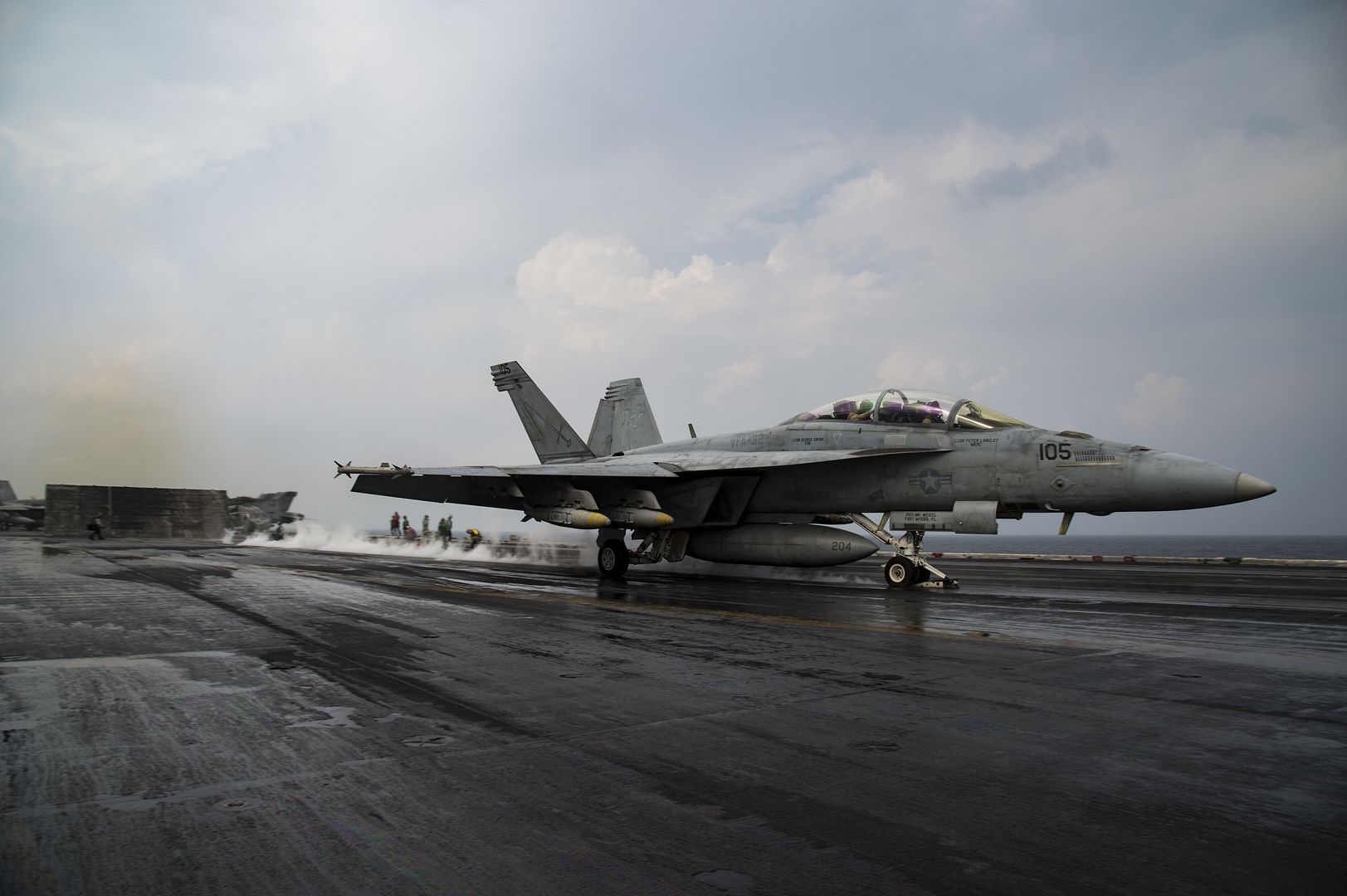
ARABIAN GULF (Nov. 25, 2016) The aircraft carrier USS Dwight D. Eisenhower (CVN 69) (Ike) approaches the Royal Navy ship HMS Ocean (L12). Ike and its carrier strike group are deployed in support of Operation Inherent Resolve, maritime security operations and theater security cooperation efforts in the U.S. 5th Fleet area of operations. (U.S. Navy photo by Petty Officer 3rd Class Anderson W. Branch)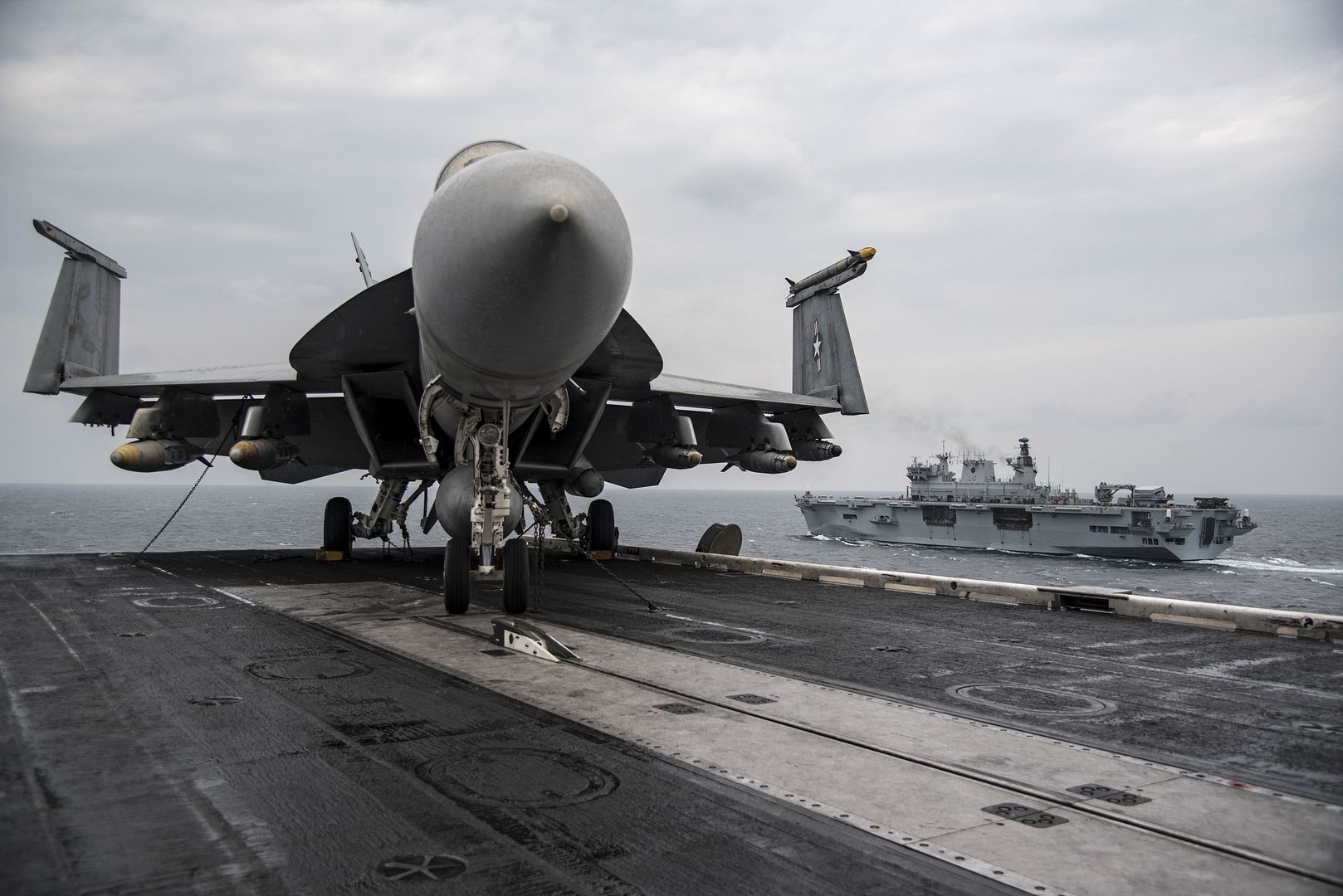
NORTH CHARLESTON, S.C., Nov. 25, 2016 /PRNewswire/ -- Boeing [NYSE: BA] and Vietnam Airlines celebrated the delivery of the flag carrier's 10th 787-9 Dreamliner today.
"Vietnam Airlines is proud to welcome our 10th Boeing 787 Dreamliner on behalf of Vietnam Airlines, only 16 months after we took delivery of the first of these state-of-the-art new aircraft," said Phan Xuan Duc, Executive Vice President of Vietnam Airlines. "The 787 is one of the keys to our fleet expansion plans, and plays a vital role in enabling us to offer customers four-star quality of service and establish Vietnam Airlines among the leading carriers in Asia."
The airline took delivery of its first 787 Dreamliner in July 2015 and has nine more 787s on order.
"We are honored to deliver the 10th 787 Dreamliner to Vietnam Airlines, building on our more than 20 years of partnership to advance Vietnam's aviation industry," said Dinesh Keskar, senior vice president, Asia Pacific & India Sales, Boeing Commercial Airplanes. "The 787 Dreamliner has enabled Vietnam Airlines to profitably operate key routes such as Hanoi to Heathrow and Ho Chi Minh City to Sydney, while providing their customers with the best passenger experience available."
The Boeing 787 Dreamliner is an all-new, super-efficient family of commercial airplanes that brings big-jet ranges and speed to the middle of the market. Boeing designed the 787 family with superior efficiency, allowing airlines to open new routes profitably and fly directly where passengers wish in exceptional comfort. The 787 family uses 20 to 25 percent less fuel with 20 to 25 percent fewer emissions than the airplanes they replace.
Since entering service in 2011, the 787 has flown more than 125 million passengers on more than 530 routes around the world, including more than 120 new nonstop routes made possible through its efficiency.
To track Vietnam Airlines' 787 Dreamliners in real-time, visit: http://www.boeing.com/commercial/flight-tracker/#/787/HVN
About Vietnam Airlines
As the national flag carrier of Vietnam, headquartered in Hanoi, Vietnam Airlines operates 92 routes to 20 domestic and 29 international destinations with average 400 daily flights. Vietnam Airlines is certified as a 4-Star Airline by the international air transport rating organization SKYTRAX. The airline became an official member of SkyTeam Alliance in 2010 and was the first representative of the alliance in the Southeast Asia region.
The airline operates 787 Dreamliners on the domestic Hanoi ? Ho Chi Minh City route and international routes to/from London, Frankfurt, Narita and Beijing.
To date, Vietnam Airlines' fleet of Boeing 787s has operated over 7,600 flights with 35,500 flight hours, and has flown approximately 1.79 million passengers.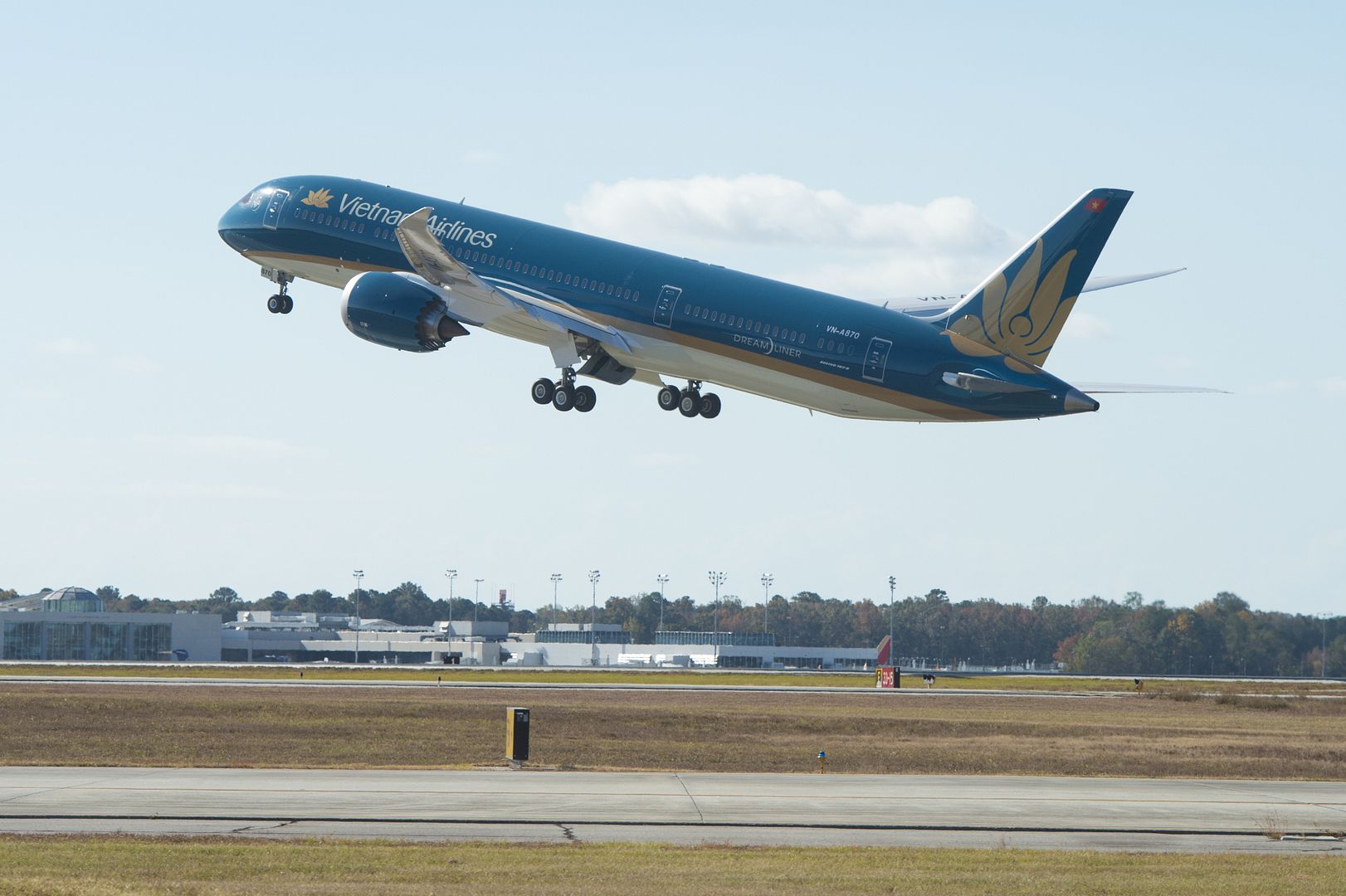
-
 Main AdminPACIFIC OCEAN (Nov. 25, 2016) An F/A-18F Super Hornet assigned to the Black Aces of Strike Fighter Squadron (VFA) 41 lands on USS John C. Stennis' (CVN 74) flight deck during carrier qualifications. John C. Stennis is underway to conduct routine training and participate in National Pearl Harbor Remembrance Day events in Hawaii. (U.S. Navy photo by Petty Officer 2nd Class Jackson G. Brown / Released)
Main AdminPACIFIC OCEAN (Nov. 25, 2016) An F/A-18F Super Hornet assigned to the Black Aces of Strike Fighter Squadron (VFA) 41 lands on USS John C. Stennis' (CVN 74) flight deck during carrier qualifications. John C. Stennis is underway to conduct routine training and participate in National Pearl Harbor Remembrance Day events in Hawaii. (U.S. Navy photo by Petty Officer 2nd Class Jackson G. Brown / Released)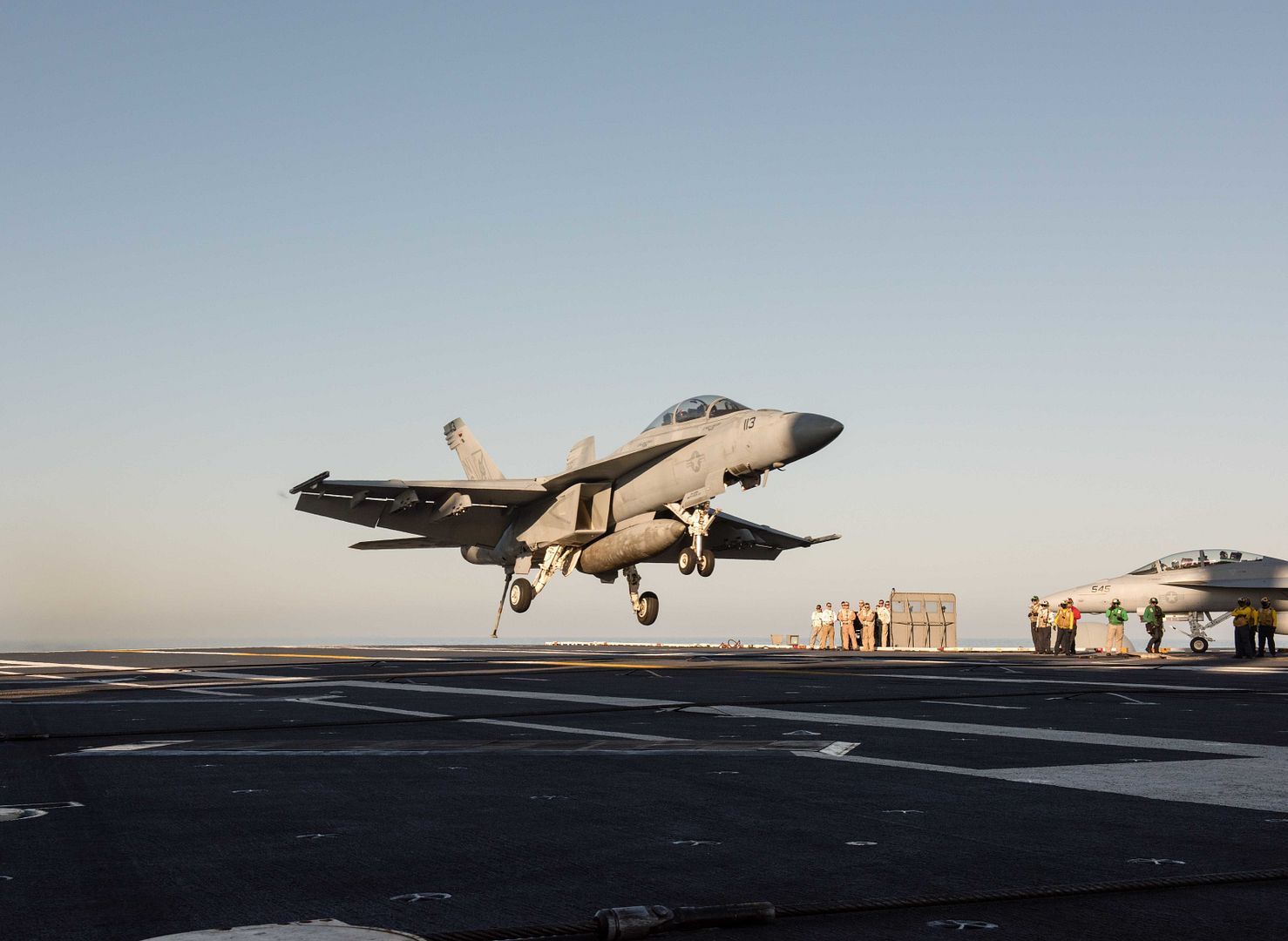
PACIFIC OCEAN (Nov. 26, 2016) An F/A-18E Super Hornet assigned to the Vigilantes of Strike fighter Squadron (VFA) 151 performs a touch and go on the flight deck of USS John C. Stennis (CVN 74) during carrier qualifications. John C. Stennis is underway to conduct routine training and participate in National Pearl Harbor Remembrance Day events in Hawaii. (U.S. Navy photo by Petty Officer 3rd Class Andre T. Richard/ Released)
PACIFIC OCEAN (Nov. 27, 2016) An F/A-18E Super Hornet, from the Argonauts of Strike Fighter Squadron (VFA) 147, lands on the flight deck of the aircraft carrier USS Nimitz (CVN 68). Nimitz is currently underway conducting Tailored Ship's Training Availability and Final Evaluation Problem (TSTA/FEP), which evaluates the crew on their performance during training drills and real-world scenarios. Once Nimitz completes TSTA/FEP they will begin Board of Inspection and Survey (INSURV) and Composite Training Unit Exercise (COMPTUEX) in preparation for an upcoming 2017 deployment. (U.S. Navy photo by Petty Officer 3rd Class Weston A. Mohr/Released)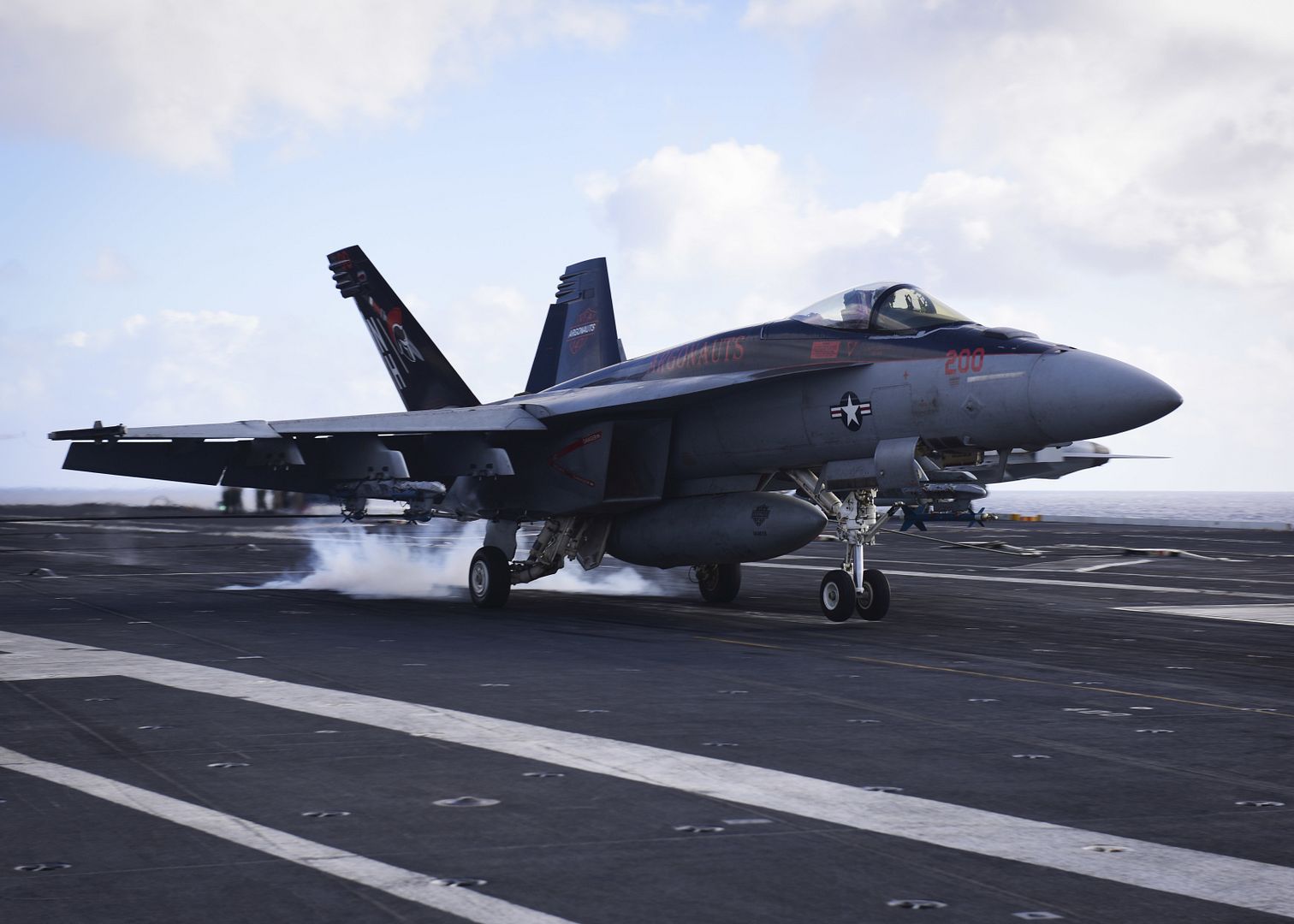
LUKE AIR FORCE BASE --
In October, pilots of the 56th Fighter Wing began flying integrated direct support practice sorties in the F-35 Lightning II and the F-16 Fighting Falcon for the first time as a regular component of the training curriculum at Luke Air Force Base, Ariz.
The integrated training comes as part of the next step in the development of F-35 training and tactics, and helps pilots become efficient in conducting futuristic mission sets and aerial combat scenarios involving both fourth and fifth-generation fighter jets.
?The F-35 has reached a point where we can do both our continuation and upgrade training to a level where integration will benefit both fourth and fifth-generation pilots,? said Col. David Shoemaker, 56th Fighter Wing vice commander. ?We are now flying dedicated sorties every day to train in F-16 and F-35 integrated direct support.?
The integrated training accomplishes two major training goals, first in exposing F-35 pilots to air-to-air combat scenarios against fourth-generation aircraft capable of mimicking adversaries that pilots would realistically face on today?s battlefields, and second in providing F-35 and F-16 pilots with experience in carrying out joint strike missions.
?The difference in the way of thinking between flying a fourth-generation and a fifth-generation fighter is tremendous,? Shoemaker said. ?The ability to get out there and see the capabilities of the fifth-generation F-35 versus a fourth-generation airframe, and then to teach fourth-generation pilots how to integrate the tactical and technological advances of the fifth generation, is a great opportunity for us.?
While the F-35 will eventually phase out the four-decade-old F-16, both jets will operate together for some time, requiring pilots to be proficient in the development and usage of integrated tactics designed to maximize the utility of both aircraft.
?It?s important not only for our F-35 pilots to see integration, but also for our F-16 instructor pilots, who after their time here at Luke will eventually go back into combat Air Force assignments where having that knowledge of how to work with fifth-generation aircraft is going to be vital to their warfighting capability,? Shoemaker said.
Through integration, Luke?s F-16 pilots are learning how to accomplish missions by complementing their toolset with the numerous, new capabilities of the F-35, including stealth and advanced sensors.
?The F-35 maintains many new and advanced capabilities in its platform that inherently exist without the need to be attached as an add-on or external accessory like in the F-16, F-15, or any fourth-generation fighter,? said Maj. David Bennett, 309th Fighter Squadron director of operations and F-16 pilot. ?The F-35 is really a force multiplier for any ally in its airspace. The more exposure our F-16 pilots have flying with the F-35, the better they will be in the future.?
Luke?s mission as the largest F-35 and F-16 training base keeps it at the forefront of the effort to build the future of airpower, both in the United States and around the world. As training development continues, Luke is scheduled to eventually host 144 F-35s between six F-35 fighter squadrons.
?For as long as the F-16 is here, we will continue to work, train with, and support the F-35 mission, which will ultimately benefit us all,? Bennett said.
SAN DIEGO ? Nov. 28, 2016 ? A future with highly autonomous unmanned aircraft conducting intelligence, surveillance and reconnaissance (ISR), targeting and strike missions from small-deck U.S. Navy and U.S. Marine Corps ships gained momentum recently when Northrop Grumman Corporation (NYSE: NOC) successfully passed two key milestones for the Tern program.
The company is developing this potentially revolutionary system ? designed for multiple medium altitude, long endurance missions ? in partnership with the Defense Advanced Research Projects Agency (DARPA) and the Office of Naval Research.
In mid-October, the Tern team completed a critical design review (CDR) of the air vehicle?s General Electric engine, a derivative of a proven turboshaft family. The reviewers approved an engine configuration that will allow Tern, with its unique tail-sitter design, to fly both vertically and horizontally. The CDR builds on a series of development and test efforts executed during Phases 2 and 3 of the Tern program.
The engine CDR was followed by a successful CDR of Tern?s vehicle management system. The review produced an approval of the hardware and software architecture that will allow the air vehicle to launch and recover vertically from small-deck ships and transition to horizontal flight.
?Tern?s unique combination of speed, long endurance, range, and altitude would give the Navy and Marine Corps a cost-effective, transformational capability to conduct ISR, light strike, and other missions from the sea at ranges exceeding 600 nautical miles,? said Bob August, program manager, Tern, Northrop Grumman. ?These successful milestones add confidence to our plan to demonstrate this new vehicle capability in 2018.?
According to August, Tern addresses the services? growing demand for ships to be able to deliver intelligence and decisive offensive and defensive capabilities, even in the absence of traditional carrier air wings or land-based patrol aircraft.
The Navy?s emerging concept of distributed lethality allows the surface fleet to conduct ISR and targeting missions around the clock at operationally relevant ranges. Tern would also support emerging U.S. Marine expeditionary mission requirements for large ship-based, long-range, long-endurance unmanned air systems.
DARPA awarded Northrop Grumman the Tern Phase 3 contract in December 2015. Phase 3 goals include completion of detailed aircraft design, development of two full-scale demonstrator aircraft, land-based testing and at-sea demonstrations of air vehicle launch and recovery.
29 November 2016 Press Release
Aircalin, the Noumea based carrier in the French territory of New Caledonia has signed an agreement (MoU) for two A320neo single-aisle and two A330-900 wide-body aircraft. The agreement was finalised and signed at a ceremony in the capital Noumea attended by airline officials and Airbus executives.
The A320neo engine choice will be made at a later date as will the cabin configuration of both aircraft types. The A320neo will be deployed on existing regional routes to Australia, New Zealand and the Pacific Islands. With the A330neo, Aircalin will boost services to Japan for onward connections and the possible opening of new routes such as to China.
?As part of our plan to boost tourism to New Caledonia, Aircalin has made a strategic decision to renew its complete fleet with the A320neo and the A330neo to grow routes and connect New Caledonia to the region,? said Didier Tappero, Aircalin CEO. ?The NEO aircraft with its state-of-the-art technology will burn less fuel, lower our operational costs and offer our loyal passengers the highest standards in cabin comfort.?
Bernard Deladri?re, Chairman of the Board and Member of New Caledonia Government asserted, ?Aircalin is taking on an even more strategic step for its future, as it is about its profitability and its competitiveness.?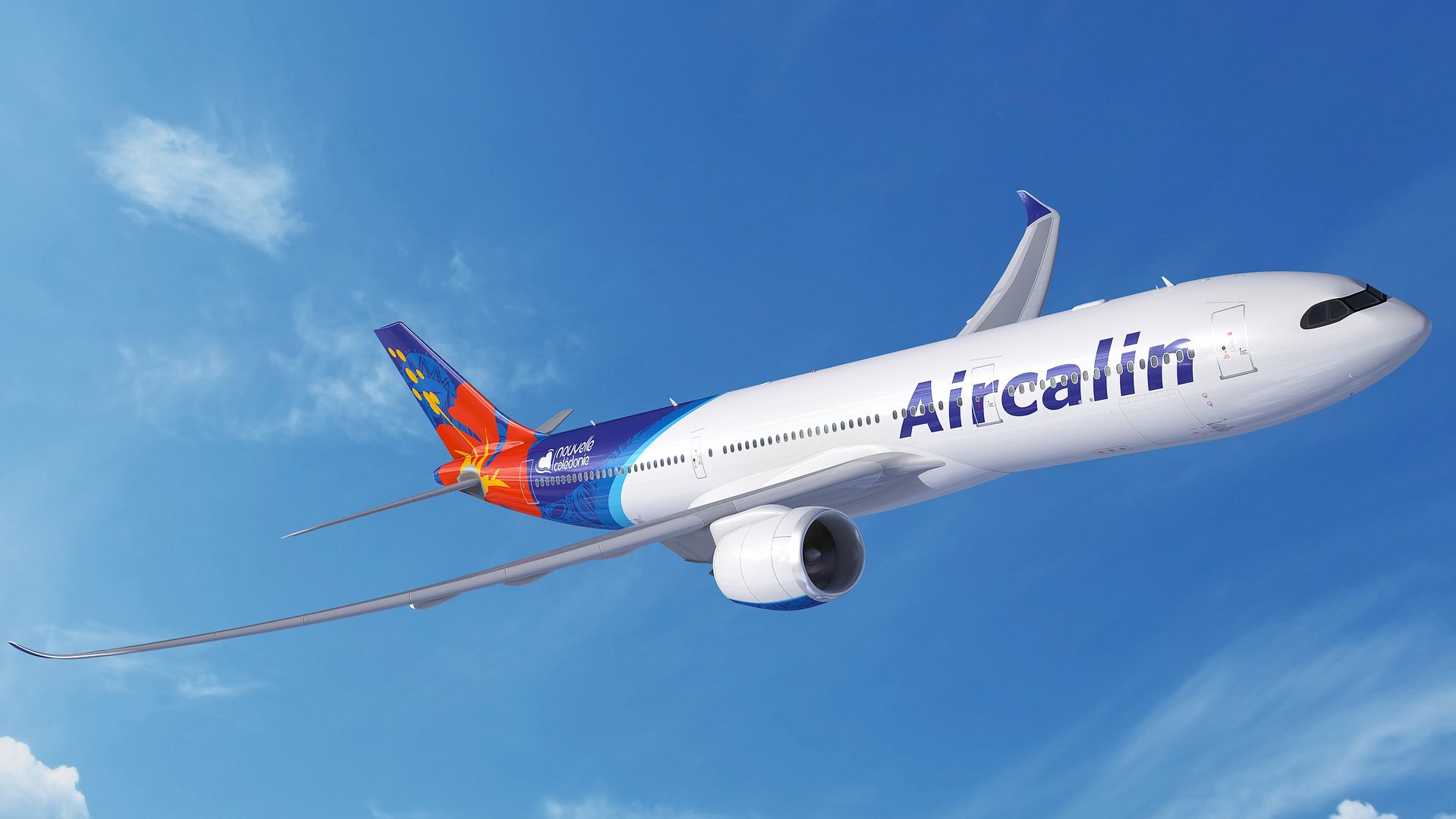
?We are delighted that Aircalin has embraced our best-selling A330neo and A320neo Family aircraft to secure a successful, profitable future, and to grow tourist traffic to New Caledonia,? said Christopher Buckley, Airbus Executive Vice President, Europe Africa and Pacific. ?Thanks to the unique commonality between all variants of the A320 and the A330, Aircalin will benefit from a seamless and cost effective transition to these exciting new aircraft, continuing with all the efficiencies they currently enjoy with their existing fleet.
The A330neo is the most cost-efficient in its size category, offering a reduction in fuel burn of 14 percent per seat, an increase in non-stop flying range of up to 4000 nautical miles and the lowest maintenance costs of any aircraft.
The A320 Family is the world?s best-selling single aisle product line with over 12,500 orders since launch and more than 7,000 aircraft delivered to some 400 customers and operators worldwide. Thanks to their widest cabin, all members of the A320 Family offer unmatched comfort in all classes and Airbus? 18? wide seats in economy as standard.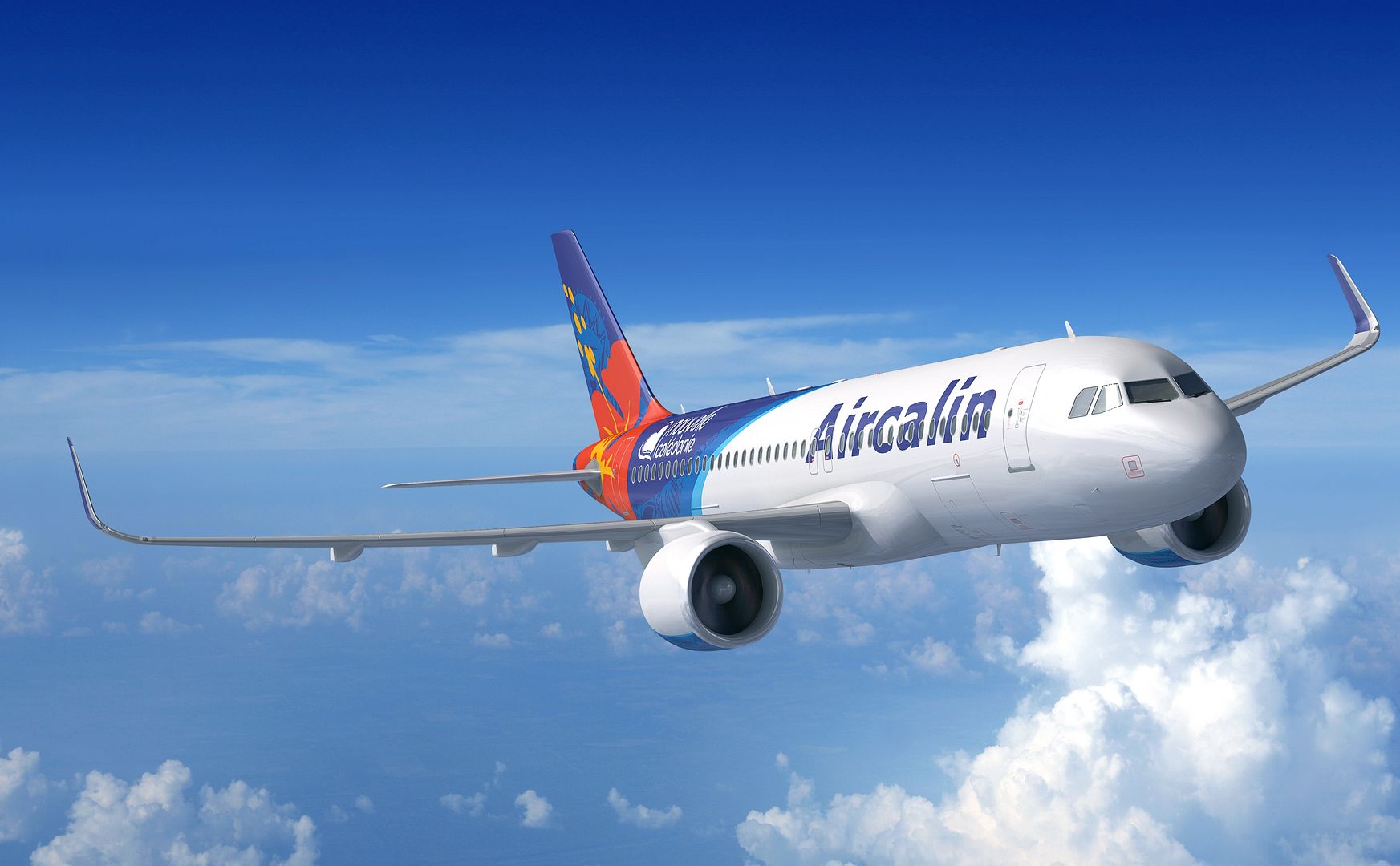
November 28, 2016 Montr?al Commercial Aircraft, Press Release
Bombardier Commercial Aircraft today announced the delivery of the first CS300 aircraft to launch operator Air Baltic Corporation AS (airBaltic), the flag carrier of Latvia. The CS300 is the larger variant of Bombardier?s all new C Series aircraft, which is designed to carry between 130 and 150 passengers. The handover to airBaltic comes just five months after the successful entry into service of the CS100 variant of the C Series.
?We are thrilled to be taking home the first CS300 aircraft ? the newest member of the most innovative and technologically advanced family of airliners in the world,? said Martin Gauss, Chief Executive Officer, airBaltic. ?With its longer range capabilities, lower fuel burn and reduced noise emissions compared to other airliners in its segment, the CS300 aircraft will enable airBaltic to open new routes and connect people all across Europe, while offering passengers an unparalleled in-flight experience.
?I would like to congratulate the entire Bombardier team; we are proud to collaborate with you on this great achievement,? added Mr. Gauss.
?We congratulate airBaltic, the first airline in the world to operate the CS300 aircraft, for its forward-thinking vision. We thank them for their partnership and long-standing support and wish them continued success? said Fred Cromer, President, Bombardier Commercial Aircraft. ?Wherever the C Series aircraft takes to the skies, it will be an ambassador for Bombardier and a symbol of Canadian innovation and achievement as the most technologically advanced aircraft for the 100- to 150-seat market segment.?
?The delivery of the first CS300 aircraft is a major milestone and is the culmination of dedicated hard work and collaboration by thousands of employees, partners and suppliers. I congratulate the entire team for their commitment to the C Series aircraft program and for their perseverance in making this day possible,? said Rob Dewar, Vice President, C Series Aircraft Program, Bombardier Commercial Aircraft.
''It is with pride that I acknowledge this significant, symbolic delivery, which once again confirms Qu?bec?s judicious decision to act as Bombardier?s partner in the development and the industrialization of C Series aircraft. Indeed, Bombardier, which contributes $8.5 billion to Qu?bec?s gross domestic product, equivalent to 2% of the province?s economy, is not only a key stakeholder in the Qu?bec aerospace industry but is also generating substantial spinoff for the Qu?bec economy overall,? Minister of Economy, Science and Innovation and Minister responsible for the Digital Strategy Dominique Anglade noted.
The maiden commercial flight of airBaltic?s first CS300 aircraft, which will take passengers from Riga to Amsterdam, is scheduled for December 14, 2016.
About C Series Aircraft
The C Series is the only aircraft optimized for the 100- to 150-seat market segment, which drives the aircraft?s phenomenal economic proposition and performance, opening up new opportunities for single-aisle aircraft operation. The C Series aircraft is manufactured by the C Series Aircraft Limited Partnership, an affiliate of the Bombardier Commercial Aircraft segment of Bombardier Inc.
Comprised of the CS100 and the larger CS300 aircraft, the C Series family represents the fusion of performance and technology. The result is aircraft that deliver unmatched performance and economics in the 100- to 150-seat market segment and an 18 per cent lower cost per passenger, making them the ideal candidates to complement larger single-aisle aircraft. Airlines can now operate routes that were previously not profitable or even possible. An improvement in range in excess of 20 per cent out of hot-and-high airports such as Denver, Mexico City or Lhasa has been confirmed.
Bombardier has created a new standard in cabin design and flexibility to ensure an unrivalled passenger experience. The aircraft?s larger seats, overhead bins and windows deliver a wide body feel that offers passengers unparalleled comfort in a single-aisle cabin.
The CS100 and the CS300 aircraft have over 99 per cent parts commonality as well as Same Type Rating. The groundbreaking Pratt & Whitney PurePower? PW1500G engine, combined with the aircraft?s advanced aerodynamics, delivers reduced fuel burn, noise, and emissions ? making the
C Series the most community-friendly aircraft.
About airBaltic
Established in 1995, airBaltic (AIR BALTIC CORPORATION) is the world?s most punctual airline connecting the Baltic region with 60 destinations in Europe, the Middle East, and the CIS. airBaltic is a joint stock company that was established in 1995. Its primary shareholder is the Latvian state.
The airBaltic fleet consists of 24 aircraft ? 12 Boeing 737 and 12 Bombardier Q400. airBaltic has received numerous international awards for excellence, innovative services, and achievements in reshaping its business. In 2012, airBaltic was ranked by Airlinetrends among the Top 10 airlines globally for innovations. airBaltic achieved the best on-time performance globally for two years running in 2014 and 2015.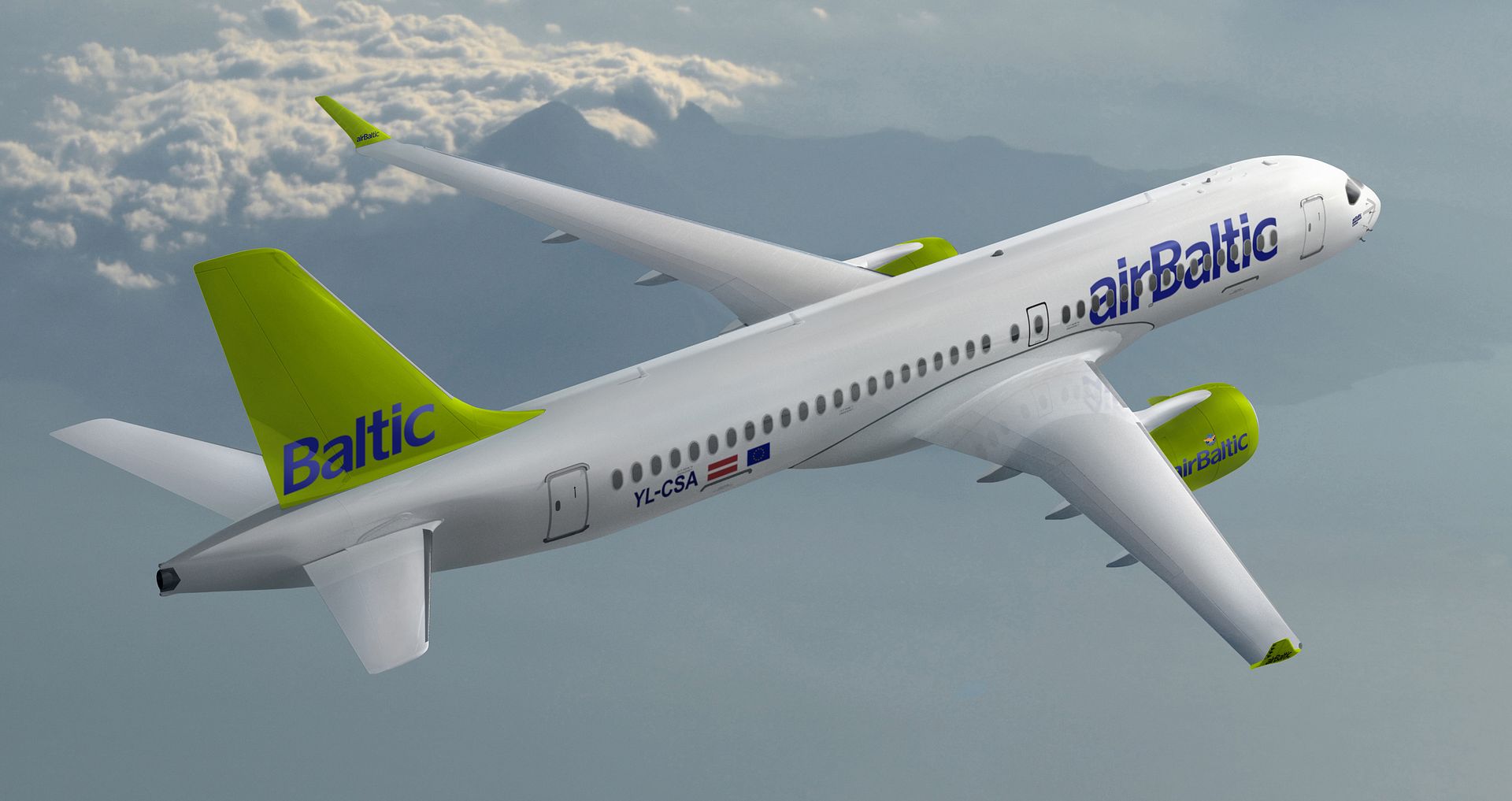
-
 Main AdminPACIFIC OCEAN (Nov. 27, 2016) - An EA-18G Growler, from the Gray Wolves of Electronic Attack Squadron (VAQ) 142, prepares to launch from a catapult on board the aircraft carrier USS Nimitz (CVN 68). Nimitz is currently underway conducting Tailored Ship's Training Availability and Final Evaluation Problem (TSTA/FEP), which evaluates the crew on their performance during training drills and real-world scenarios. Once Nimitz completes TSTA/FEP they will begin Board of Inspection and Survey (INSURV) and Composite Training Unit Exercise (COMPTUEX) in preparation for an upcoming 2017 deployment. (U.S. Navy photo by Petty Officer 3rd Class Weston A. Mohr/Released)
Main AdminPACIFIC OCEAN (Nov. 27, 2016) - An EA-18G Growler, from the Gray Wolves of Electronic Attack Squadron (VAQ) 142, prepares to launch from a catapult on board the aircraft carrier USS Nimitz (CVN 68). Nimitz is currently underway conducting Tailored Ship's Training Availability and Final Evaluation Problem (TSTA/FEP), which evaluates the crew on their performance during training drills and real-world scenarios. Once Nimitz completes TSTA/FEP they will begin Board of Inspection and Survey (INSURV) and Composite Training Unit Exercise (COMPTUEX) in preparation for an upcoming 2017 deployment. (U.S. Navy photo by Petty Officer 3rd Class Weston A. Mohr/Released)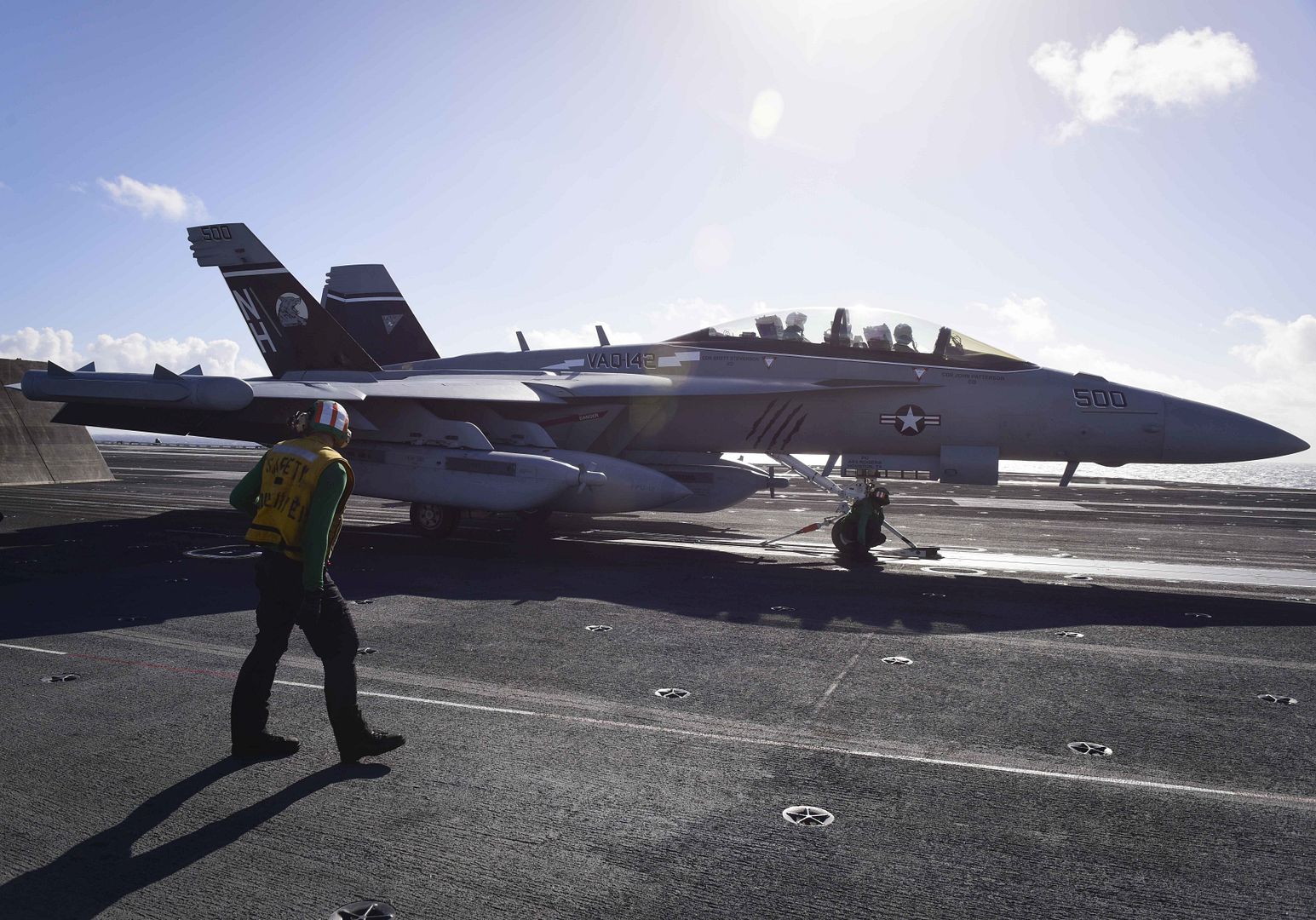
PACIFIC OCEAN (Nov. 27, 2016) An F/A-18F Super Hornet, from the Black Knights of Strike Fighter Squadron (VFA) 154, lands on the flight deck of the aircraft carrier USS Nimitz (CVN 68). The ship is currently underway conducting Tailored Ship's Training Availability and Final Evaluation Problem (TSTA/FEP), which evaluates the crew on their performance during training drills and real-world scenarios. Once Nimitz completes TSTA/FEP they will begin Board of Inspection and Survey (INSURV) and Composite Training Unit Exercise (COMPTUEX) in preparation for an upcoming 2017 deployment. (U.S. Navy photo by Petty Officer 3rd Class Weston A. Mohr/Released)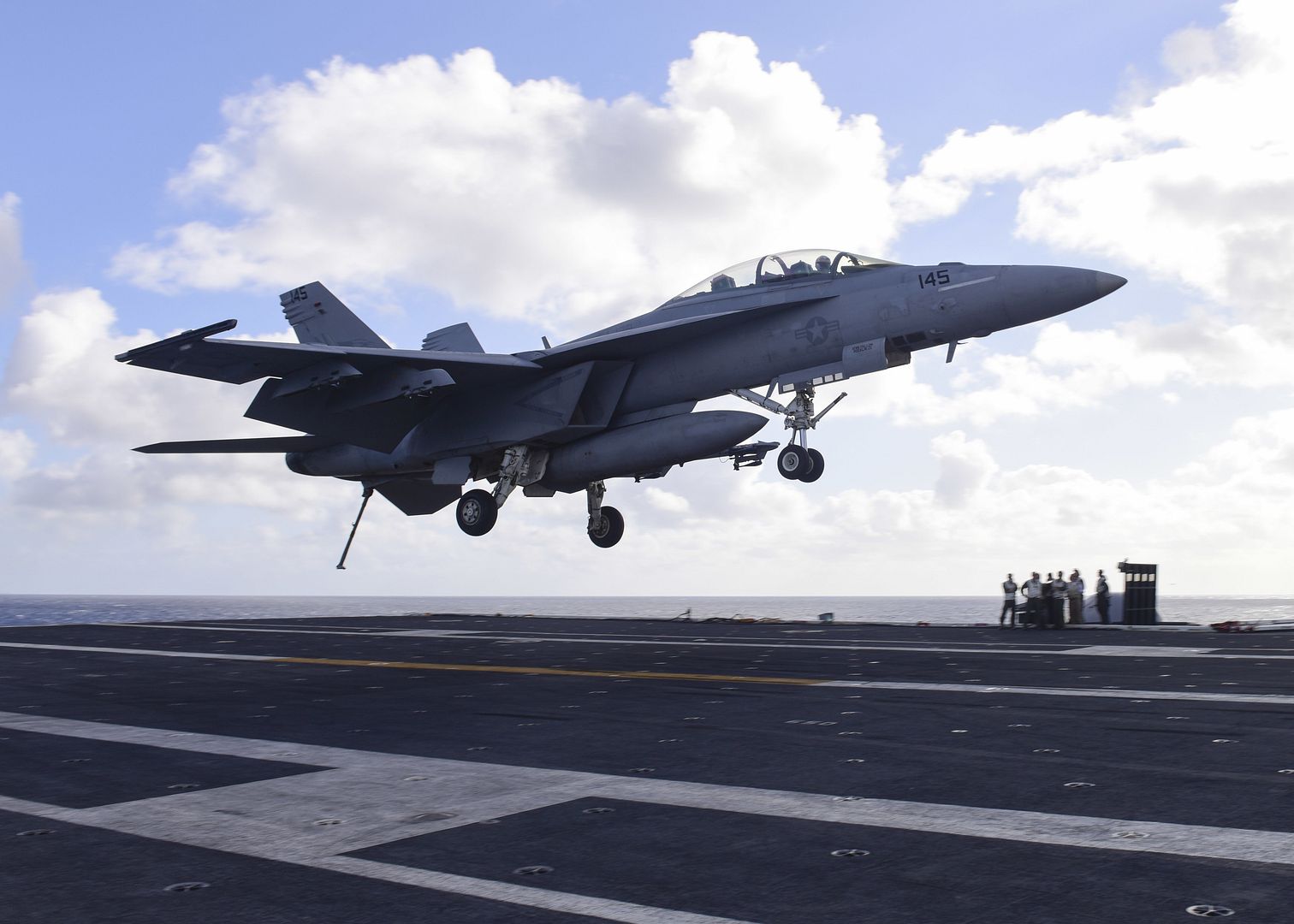
EDWARDS AIR FORCE BASE, Calif. --
When it comes to aviation fuel, the C-17 Globemaster III utilization rate makes it stand out as the largest consumer in the U.S. Air Force. This is why a team at the 418th Flight Test Squadron has been working for the past year on the Air Force Research Laboratory?s C-17 Drag Reduction Program.
The 418th FLTS is currently wrapping up testing with the final three phases ? out of five total ? using 3-D printed parts by Lockheed Martin. The Lockheed Martin installations use a combination of laser positioning for locating and sealant to bond the parts to the aircraft. The laser positioning allowed the team to skip the design and build of installation tooling that would only be used during flight testing according to test managers. The bonding simplifies the installation and more importantly leaves the aircraft in its pre-test condition after removal at the end of the flight test program.
The squadron is testing parts in various configurations to see if the external structure modifications can improve airflow around the airplane. During computational fluid dynamics simulations and wind tunnel tests, areas on the C-17 were identified that showed excessive drag and were targeted for optimization.
In the spring, the first two phases of testing were completed. Those tests were conducted with two different configurations of parts made by Vortex Control Technologies.
The placement of the parts and the different configurations all have the same goal of reducing drag and improving fuel efficiency.
?A one-percent improvement in drag reduction will result in 7.1 million gallons of fuel reduction per year,? said Bogdan Wozniak, 418th FLTS, project engineer. ?One-to-two percent drag reduction could translate to $24-48 million dollars in fuel savings per year.?
Currently, the team is preparing to test the fifth and final configuration using the Lockheed Martin parts. They have recently tested the third and fourth phases, which consisted of placing 12 microvanes toward the aft of the C-17 for phase three and then adding three fairings to each wing for phase four.
The fifth phase will keep the 12 microvanes and six-total fairings with the addition of two fairings on each winglet.
At least three flight tests are conducted with each phase ? a flying qualities regression flight and cruise performance flights at .74 and .77 mach. The team will also conduct airdrop tests in December to ensure the microvanes do not interfere with the C-17?s airdrop mission.
The flights are always the same to make certain the data collected in each phase can be accurately compared to each other. The 418th FLTS is also using the same C-17 for all the flights. The plane is on loan from Joint Base Lewis-McChord, Washington, along with four maintenance Airmen.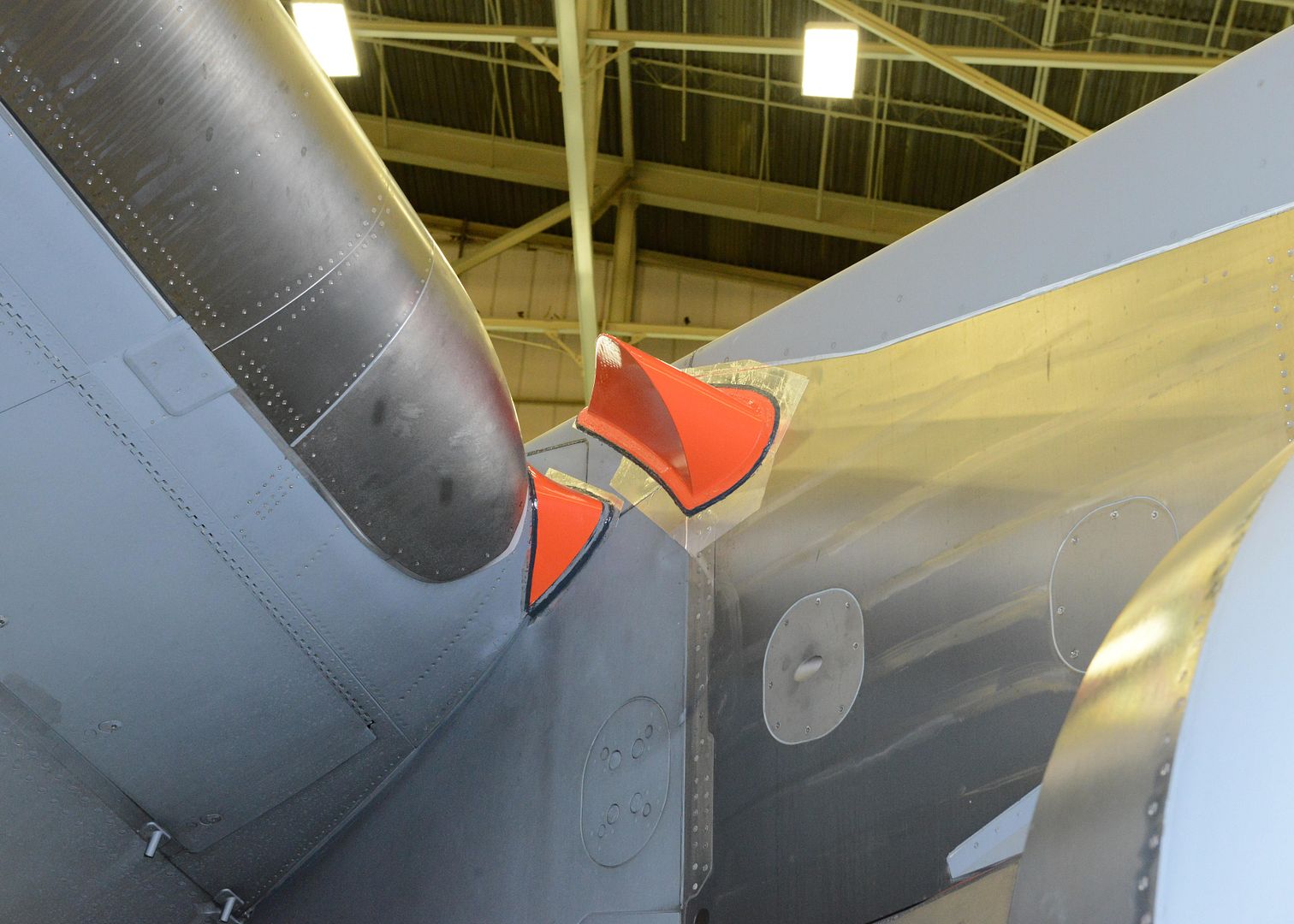
?Aircraft and atmospheric data are collected with the aircraft flying straight and level at a constant airspeed and constant altitude with low winds and low air turbulence at 90 degrees to the wind to mitigate head- and tailwind effects. Each flight at a constant airspeed and altitude requires eight hours to acquire sufficient data for the analysis,? said Wozniak.
Flight data is collected and put into a computer program developed by Boeing that puts out parameters for lift and drag and then compares everything to see how much drag is reduced.
The flight tests here are the final stage of AFRL's program following computational fluid dynamics simulations and wind tunnel tests with a scale model. The data collected will be sent to AFRL at Wright-Patterson Air Force Base, Ohio, to see if any of the modifications increase streamlining and reduce drag. After that, Air Force leaders will ultimately decide whether or not any of the modifications should be implemented throughout the C-17 fleet.
The test team at Edwards consists of 412th Test Wing personnel, Lockheed Martin and Boeing contractors along with representatives from Canada, the United Kingdom and Australia, who have a stake in the program.
The final flight for the C-17 Drag Reduction Program is expected to happen in December.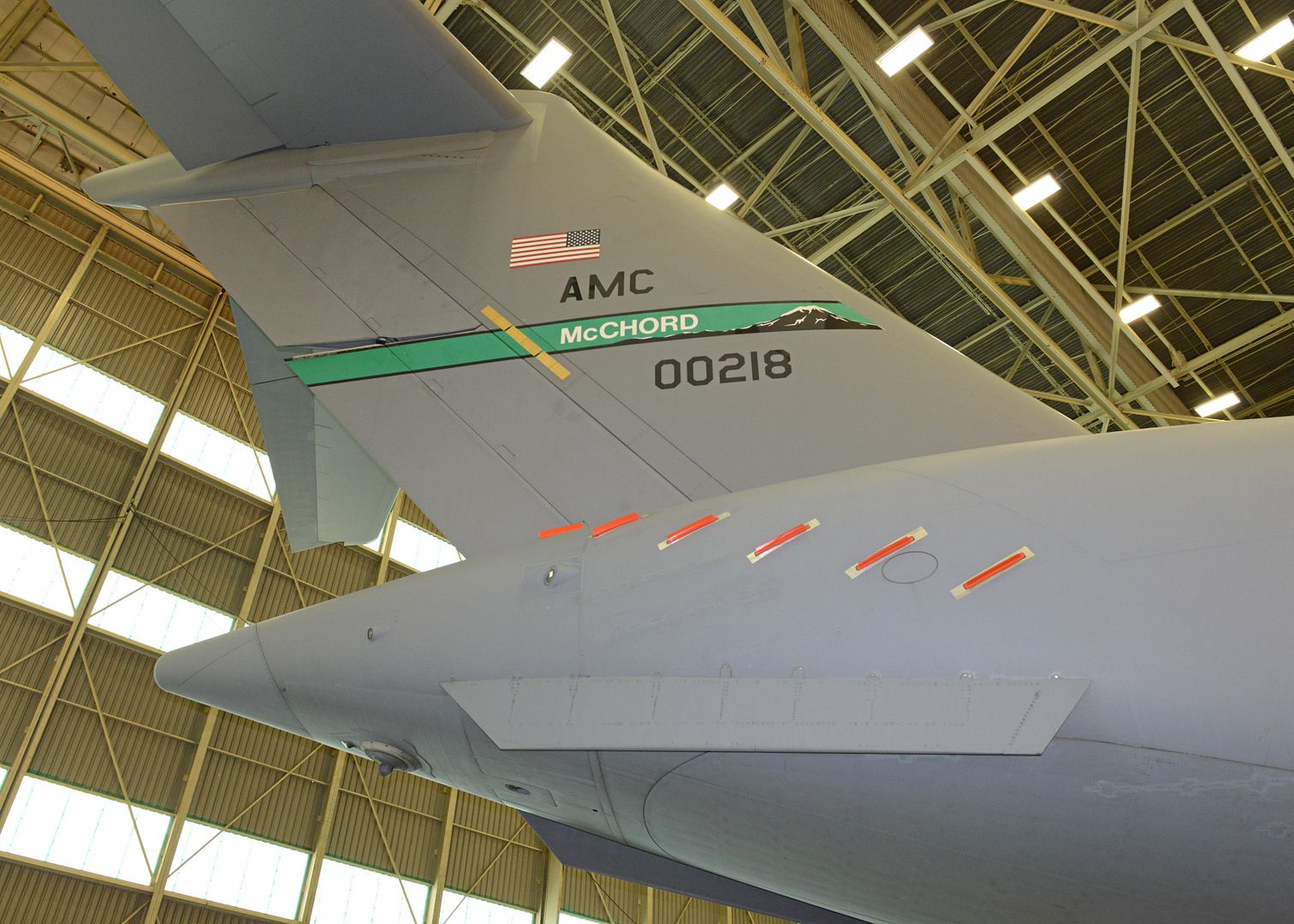
STRATFORD, Conn., Nov. 29, 2016 /PRNewswire/ -- Colombia's civil aviation authority Unidad Administrativa Especial de Aeron?utica Civil (UAEAC) has approved the Offshore and Utility Type Certificate for Sikorsky's S-76C? series (C, C+, C++), S-76D? and S-92A? helicopters. The certificate enables Colombia's commercial aviation operators to add the multi-role helicopters for transportation of workers or cargo to offshore oil and gas rigs, as well as regional airline passenger service, and VIP transportation.
Colombia's civil aviation authority Unidad Administrativa Especial de Aeronautica Civil has approved the Offshore and Utility Type Certificate for Sikorsky's S-76C(tm) series, S-76D(tm) and S-92A(R) helicopters.
UAEAC signed the certificate Nov. 9, capping an intensive flight test program to introduce the commercial aircraft manufactured by Sikorsky, a Lockheed Martin Company (NYSE: LMT), to Colombia.
"The approval by UAEAC authorizing transportation companies across Colombia to operate the S-76D and S-76C medium helicopters and heavy lift S-92 in Colombia is an exciting development," said Dana Fiatarone, vice president, Sikorsky Commercial Systems & Services. "These multi-role aircraft will provide profitable, high reliability flight operations to local operators."
"Colombians know the robustness, reliability and industry leading safety record of Sikorsky products thanks to the history of Black Hawks in Colombia, where more than 100 have operated for over 20 years," said Adam Schierholz, Sikorsky Regional Executive for Latin America. "As Colombia moves to a peacetime footing, with infrastructure development and oil exploration as priorities, it is a natural progression to have Sikorsky commercial products introduced to the country."
In Colombia, Sikorsky maintains training and support facilities in Melgar that employ more than 40 Colombian national employees. These facilities operate as Sikorsky's regional hub for support in Latin America.
Sikorsky has delivered more than 800 S-76 helicopters to customers globally since 1979. More than four million of the fleet's nearly seven million total flight hours have been flown in support of offshore oil transportation, and the aircraft boasts low operating costs and an accident rate that is half that of the industry's average.
Sikorsky has delivered nearly 300 S-92 helicopters since 2004. With a best-in-class safety record, the multi-mission S-92 aircraft is the preferred aircraft of its size class for offshore oil worker transportation. These helicopters perform search and rescue missions, head of state missions, and a variety of transportation missions for utility and airline passengers.
-
 Main AdminLUKE AFB, ARIZ. --- The F-35 program hit another milestone Nov. 28 with the arrival of the first Foreign Military Sales F-35 at Luke Air Force Base.
Main AdminLUKE AFB, ARIZ. --- The F-35 program hit another milestone Nov. 28 with the arrival of the first Foreign Military Sales F-35 at Luke Air Force Base.
The arrival marked the next step for the international F-35 training program as Japan took ownership of the first FMS aircraft to arrive at Luke.
?Today is a great day for the U.S. Air Force Reserve Command, Luke AFB, the 944th Fighter Wing, and the Japanese Air Self-Defense forces,? said Col. Kurt J. Gallegos, 944 FW commander. ?We have a great team of Airmen who have worked hard to set up an outstanding training program and are ready to train our FMS counterparts.?
The aircraft was welcomed by a joint delegation from the 944 FW, 56th Fighter Wing, Lockheed Martin, and Japanese staff.
?Today I am thrilled for the Japan Air Self-Defense Force and Team Luke,? said Lt. Col. Sean Holahan, 944th Operations Group Detachment 2 commander. ?The arrival of Japan?s first F-35A marks another important milestone in the steadfast relationship between our two nations, and the beginning of training for an elite cadre of JASDF fighter pilots and maintainers. We put an incredible amount of thought and effort into building the world?s first F-35 Foreign Military Sales training program from the ground up. To see Japan?s first jet on our flightline, surrounded by the men and women who have made this mission possible, is humbling.?
The arrival of the first FMS aircraft is the culmination of years of planning and hard work.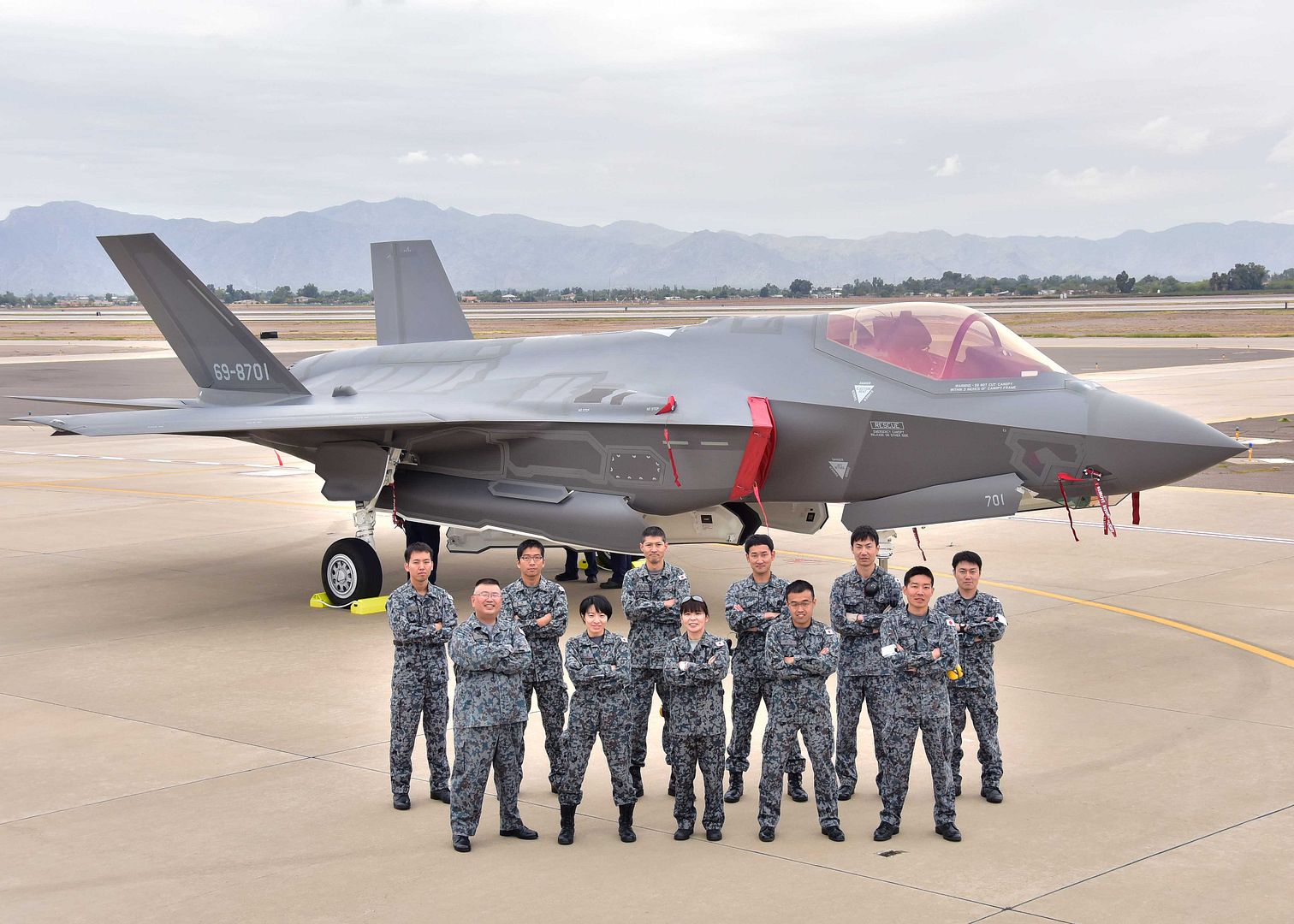
?The jet arrival marks the beginning of a new and exciting mission at Luke AFB to train our allies to fly the F-35A,? explained Lt. Col. Joe Bemis, 944 OG Det. 2 executive officer and resource advisor. ?We have been preparing for this program for years. We have remodeled buildings, built a huge team of professional pilots, maintainers, and administration staff, and created specialized syllabus. We are hopeful that this mission will strengthen relationships between the US and nations that participate in the training.?
Over the next several years, Luke AFB will be training FMS pilots from Japan, Israel and South Korea along with partner nations including Australia, Italy, Norway, Turkey, Netherlands, Denmark, and Canada.
?This is such an important time in our wing?s history as we pick up the mission to train all FMS F-35 pilots,? said Gallegos. ?It?s been almost 10 years since our wing has seen aircraft on our flightline. It is an amazing feeling to look outside and see the F-35s out there and know that we are playing such an important and critical role as we build relationships that will enhance our future partnership.?
In addition to the Foreign Military Sales mission led by the 944 OG/Det 2 Ninjas, Luke is scheduled to have six fighter squadrons and 144 F-35s.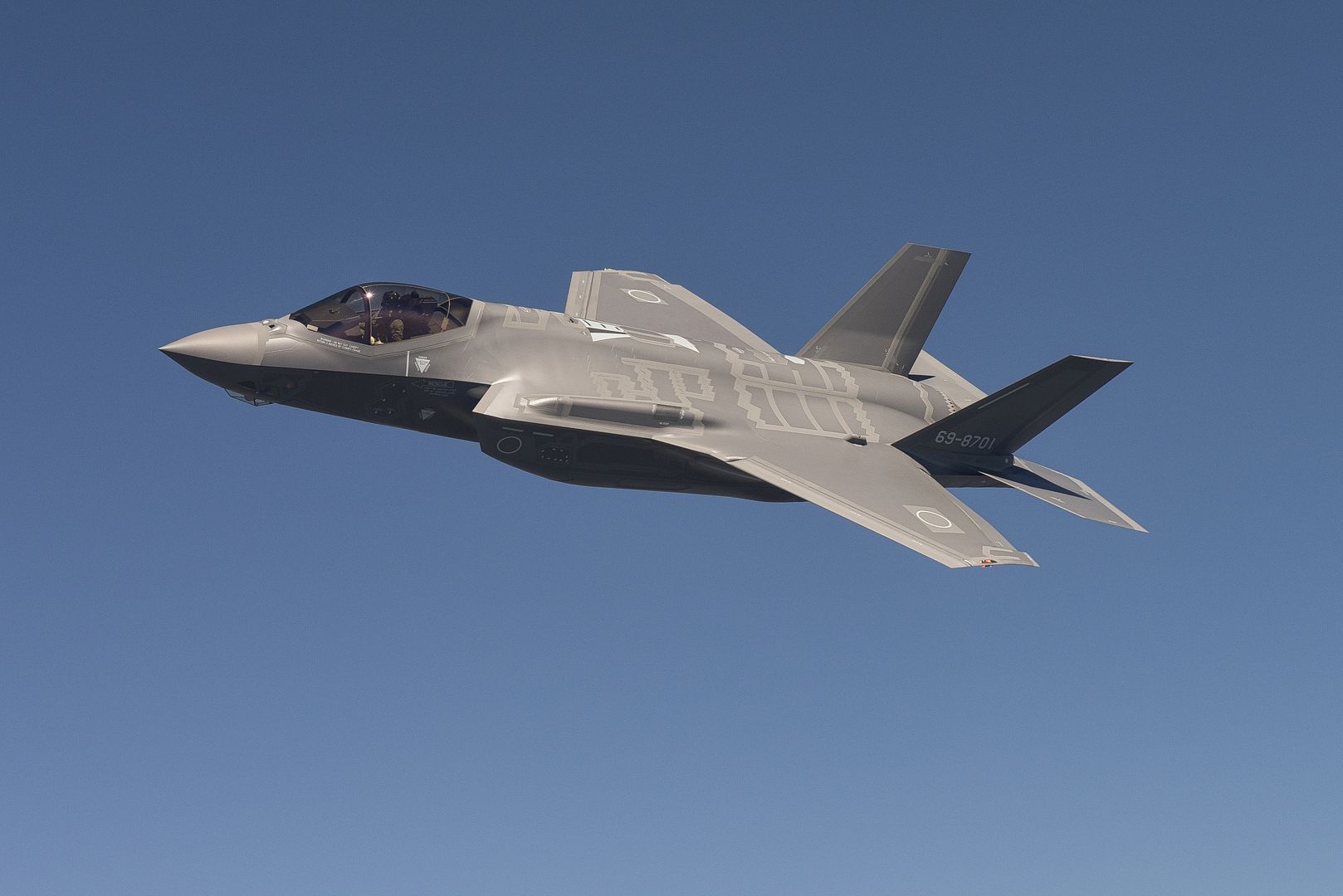
A Marine EA-6B Prowler peels off after refueling from a 340th Expeditionary Air Refueling Squadron KC-135 Stratotanker over Iraq, Nov. 29, 2016. The 340th EARS extend the fight against Da'esh by delivering 60,000 pounds of fuel to USAF A-10 Thunderbolts, F-15 Strike Eagles and U.S. Marine EA-6B Prowlers. (U.S. Air Force photo by Senior Airman Jordan Castelan)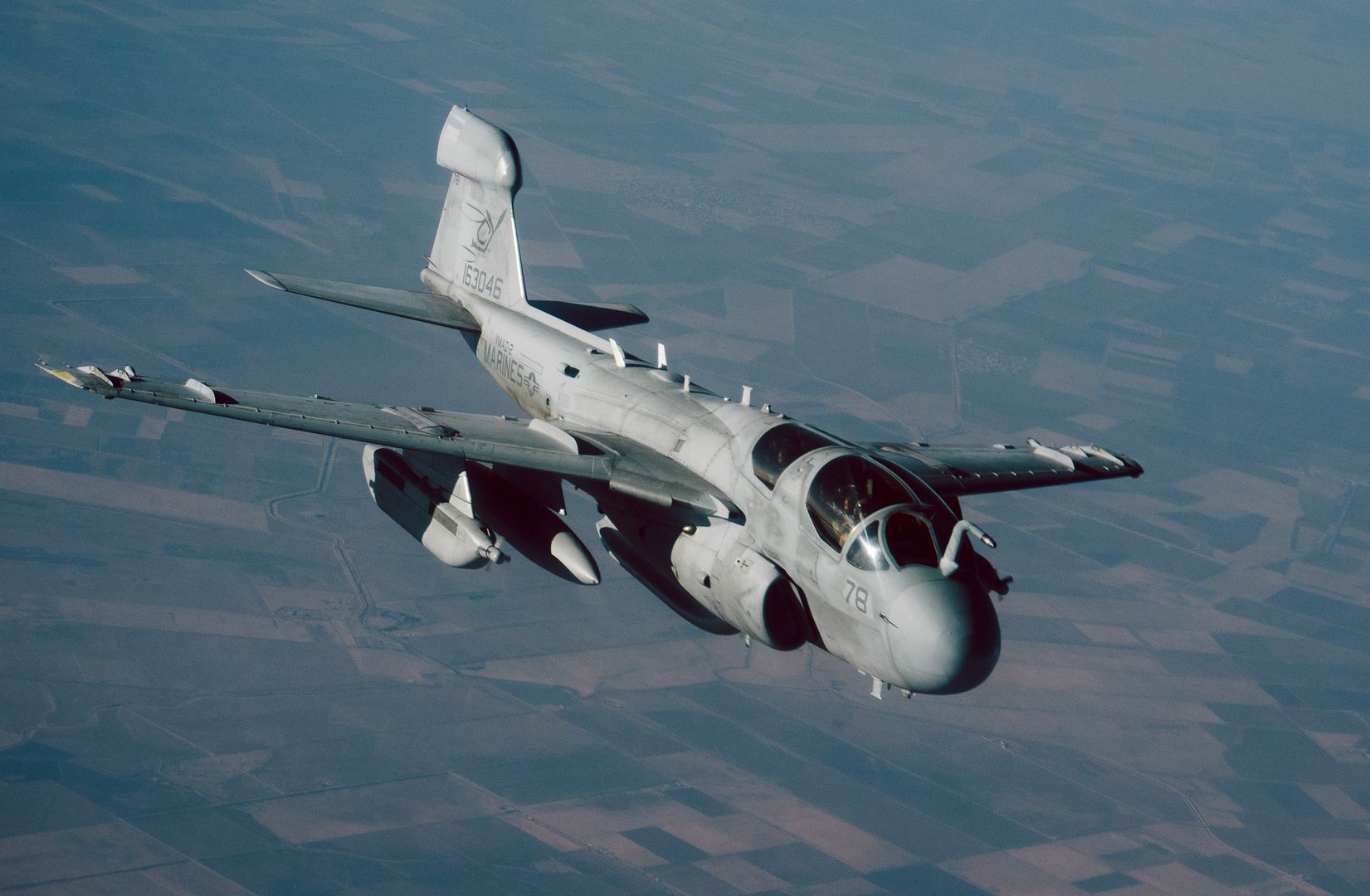
A U.S. Air Force F-15 Strike Eagle approaches to refuel from a 340th Expeditionary Air Refueling Squadron KC-135 Stratotanker over Iraq, Nov. 29, 2016. The 340th EARS extend the fight against Da'esh by delivering 60,000 pounds of fuel to USAF A-10 Thunderbolts, F-15 Strike Eagles and U.S. Marine EA-6B Prowlers. (U.S. Air Force photo by Senior Airman Jordan Castelan)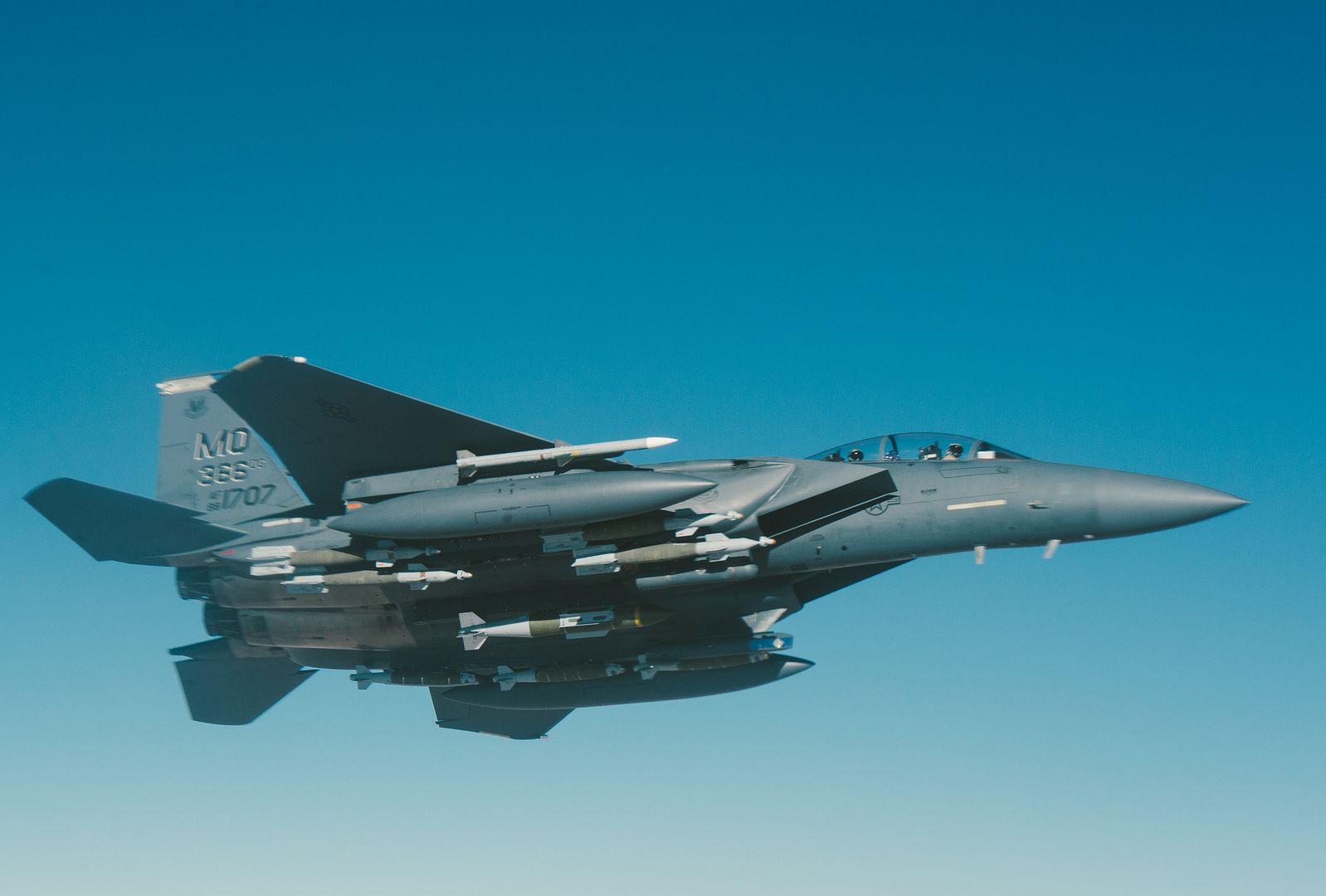
A U.S. Air Force A-10 Thunderbolt prepares to peel off after refueling from a 340th Expeditionary Air Refueling Squadron KC-135 Stratotanker over Iraq, Nov. 29, 2016. The 340th EARS extend the fight against Da'esh by delivering 60,000 pounds of fuel to USAF A-10 Thunderbolts, F-15 Strike Eagles and U.S. Marine EA-6B Prowlers. (U.S. Air Force photo by Senior Airman Jordan Castelan)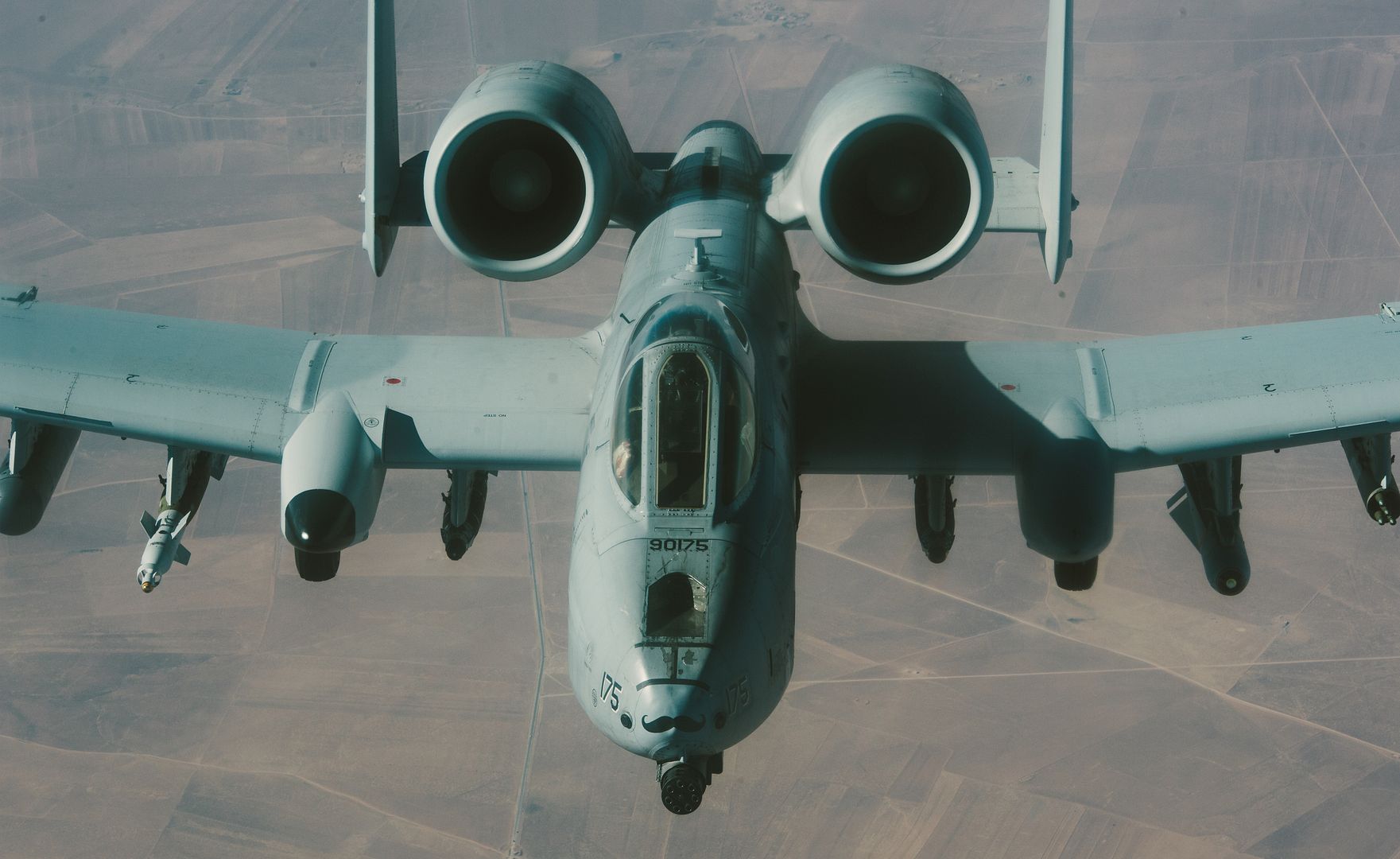
PACIFIC OCEAN (Nov. 29, 2016) An F/A-18E Super Hornet from the Blue Diamonds of Strike Fighter Squadron (VFA) 146 launches from the flight deck of the aircraft carrier USS Nimitz (CVN 68). Nimitz is currently underway conducting Tailored Ship's Training Availability and Final Evaluation Problem (TSTA/FEP), which evaluates the crew on their performance during training drills and real-world scenarios. Once Nimitz completes TSTA/FEP they will begin Board of Inspection and Survey (INSURV) and Composite Training Unit Exercise (COMPTUEX) in preparation for an upcoming 2017 deployment. (U.S. Navy photo by Seaman Cole Schroeder/Released)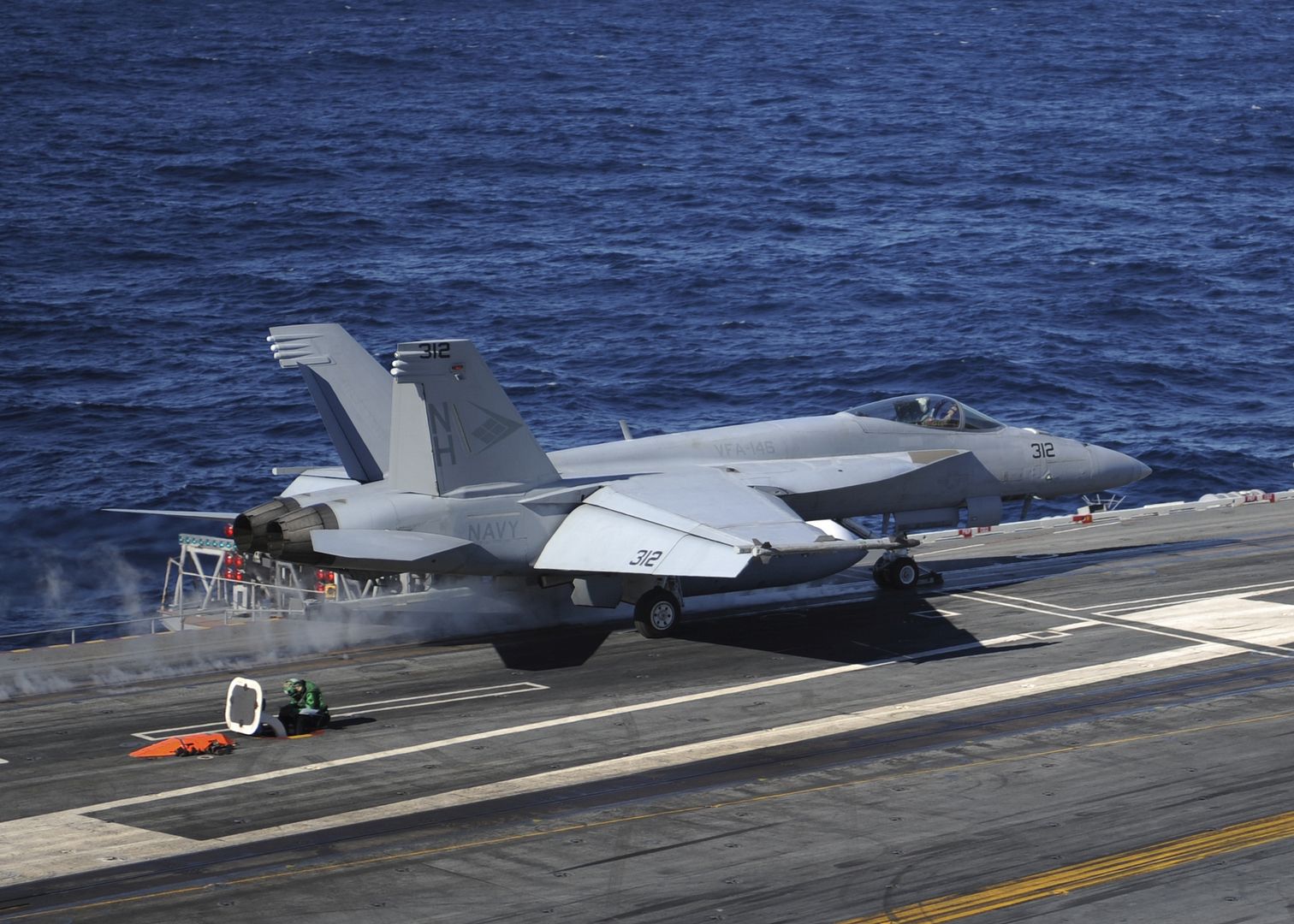
5TH FLEET AREA OF OPERATIONS (Nov. 29, 2016)
Petty Officer 2nd Class Michael Gendron, center, takes photographs from an MH-60S Sea Hawk helicopter assigned to the Dusty Dogs of Helicopter Sea Combat Squadron (HSC) 7 as it prepares to land on the flight deck of the aircraft carrier USS Dwight D. Eisenhower (CVN 69). The ship and its carrier strike group are deployed in support of Operation Inherent Resolve, maritime security operations and theater security cooperation efforts in the U.S. 5th Fleet area of operations. U.S. Navy photo by Petty Officer 3rd Class Cole Keller (Released)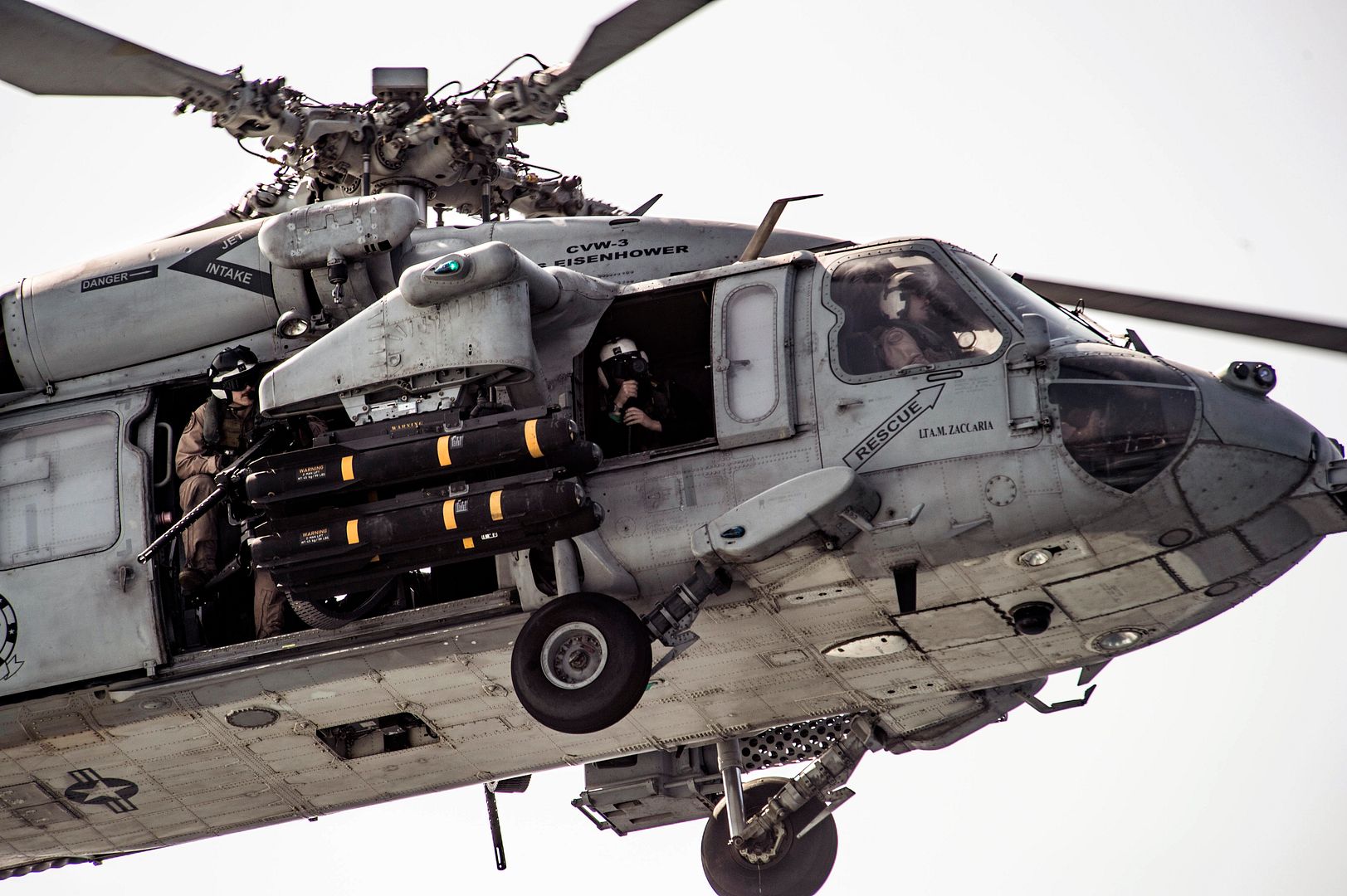
Amsterdam, The Netherlands, November 30, 2016 ? Embraer announced today that Eastern Airways, the most recent operator to join the E-Jet family, has signed a Flight Hour Pool Program contract. The pool agreement, for up to six years, covers more than 300 part numbers for Eastern Airways? two recently acquired E170 jets. The airline, based in the UK, also operates three Embraer ERJ 145 jets.
?We have demonstrated to Eastern Airways that the Embraer Pool Program is the most complete solution to support their new E-Jets operation, ensuring availability and competitive operating costs?, said Johann Bordais, Vice President, Services & Support, Embraer Commercial Aviation. ?Whatever the fleet size, the Pool Program is the perfect low investment solution to support airline operations 24/7.?
Tony Burgess, Eastern Airways? Chief Operating Officer, said: ?The addition of the E170 jets gives us tremendous flexibility as the only airline in Europe offering this modern aircraft type dedicated to the charter market. The introduction of these latest aircraft has enhanced our capabilities, offering superb range and additional flexibility to meet the charter market?s requirements, and the Pool Program will help support our aircraft operations. We will continue to look at opportunities to further enhance our fleet.?
Embraer's Flight Hour Pool Program, which is currently supporting more than 65% of E-Jets customers worldwide, is designed to minimize airlines? up-front investment in high-value repairable inventories and resources, while taking advantage of Embraer's technical expertise and its vast component service provider network. The results are significant savings on repair and inventory carrying costs, reduction in warehousing space requirements that virtually eliminates the need for repair management resources, and ultimately, guaranteed performance levels.
Embraer is the world?s leading manufacturer of commercial jets with up to 130+ seats. The Company has 100 customers from all over the world operating the ERJ and the E-Jet families of aircraft. For the E-Jets program alone, Embraer has logged more than 1,700 orders and over 1,200 deliveries, redefining the traditional concept of regional aircraft by operating across a range of business applications.
About Eastern Airways
Eastern Airways is the UK?s leading provider of air services for the offshore industry, providing more flights from Aberdeen than any other carrier. The airline also flies from a comprehensive range of airports spanning Europe to the neighbouring continents. Private charter services are a particular speciality of Eastern Airways, offering a wide range of aircraft availability as part of its award winning service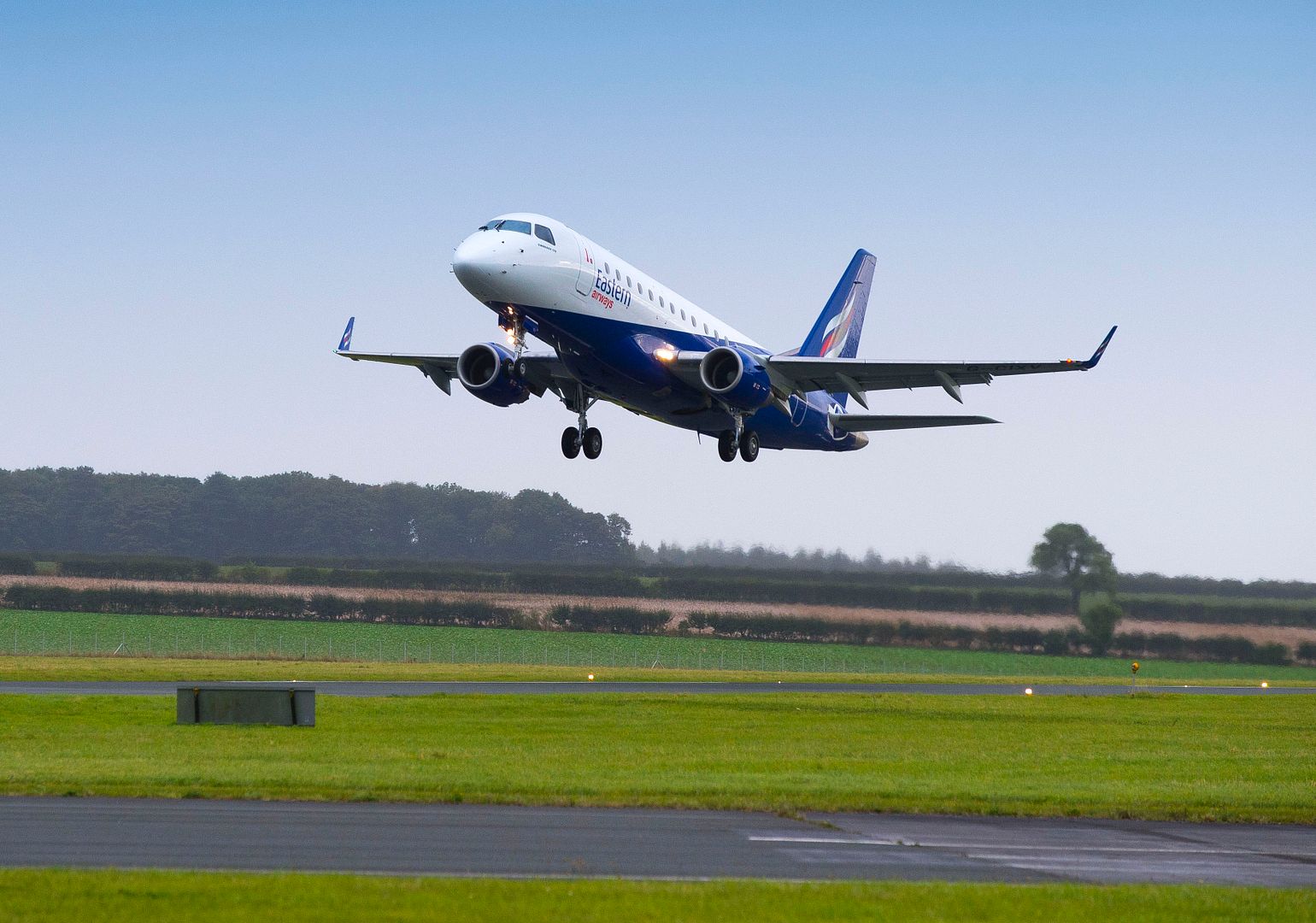
News Article / November 30, 2016
By Lieutenant-General Michael J. Hood
The following is a message from the Commander of the Royal Canadian Air Force.
?Royal Canadian Air Force capabilities are primordial to the defence of Canada, the protection of North America in partnership with the United States, and essential to the Government of Canada?s contribution to international peace and security through the projection of air power abroad. The RCAF is the guarantor of Canadian sovereignty.
?With its distinctive characteristics of agility, integration, reach and power, the RCAF is positioned to prevail over Canada?s geographic and climatic challenges and deliver rapid air power effects over every square metre of our immense territory.
?In this context, as you know, the Government has just announced that it is investing in the RCAF, and that we will grow to meet their policy direction regarding the availability of our fighter capability.
?The Government has now directed that we be ready to meet our daily NATO and NORAD commitments simultaneously. The Government has committed to delivering those resources, in part through an open and transparent competition to replace the fighter fleet. Meanwhile, they will enter into discussion with the United States Government and Boeing to augment our present CF-188 fleet.
?We will also be provided the additional resources required to continue to fly the CF-188 and a potential interim fleet through to transition to the ultimate replacement aircraft. This will include recruiting and training additional pilots and aircraft technicians.
?I am confident that the aircraft ultimately selected through competition will provide the operational advantage that RCAF pilots will require to be successful well into the future. This aircraft will also provide the interoperability we need to defend North America in a NORAD context and excel in a complex and digitized world that is quickly evolving, alongside NATO and our other Allies.
?We will continue to deliver on our operational commitments ? at home, within NORAD, as a leading NATO partner, and in any other missions with which the Government of Canada may task us. We will do so thanks to our most treasured asset: The airmen and airwomen of the RCAF.?
A CF-188 Hornet refuels from a CC-130 Hercules aircraft during Exercise Maple Flag in Alberta on June 21, 2016. PHOTO: Corporal Manuela Berger.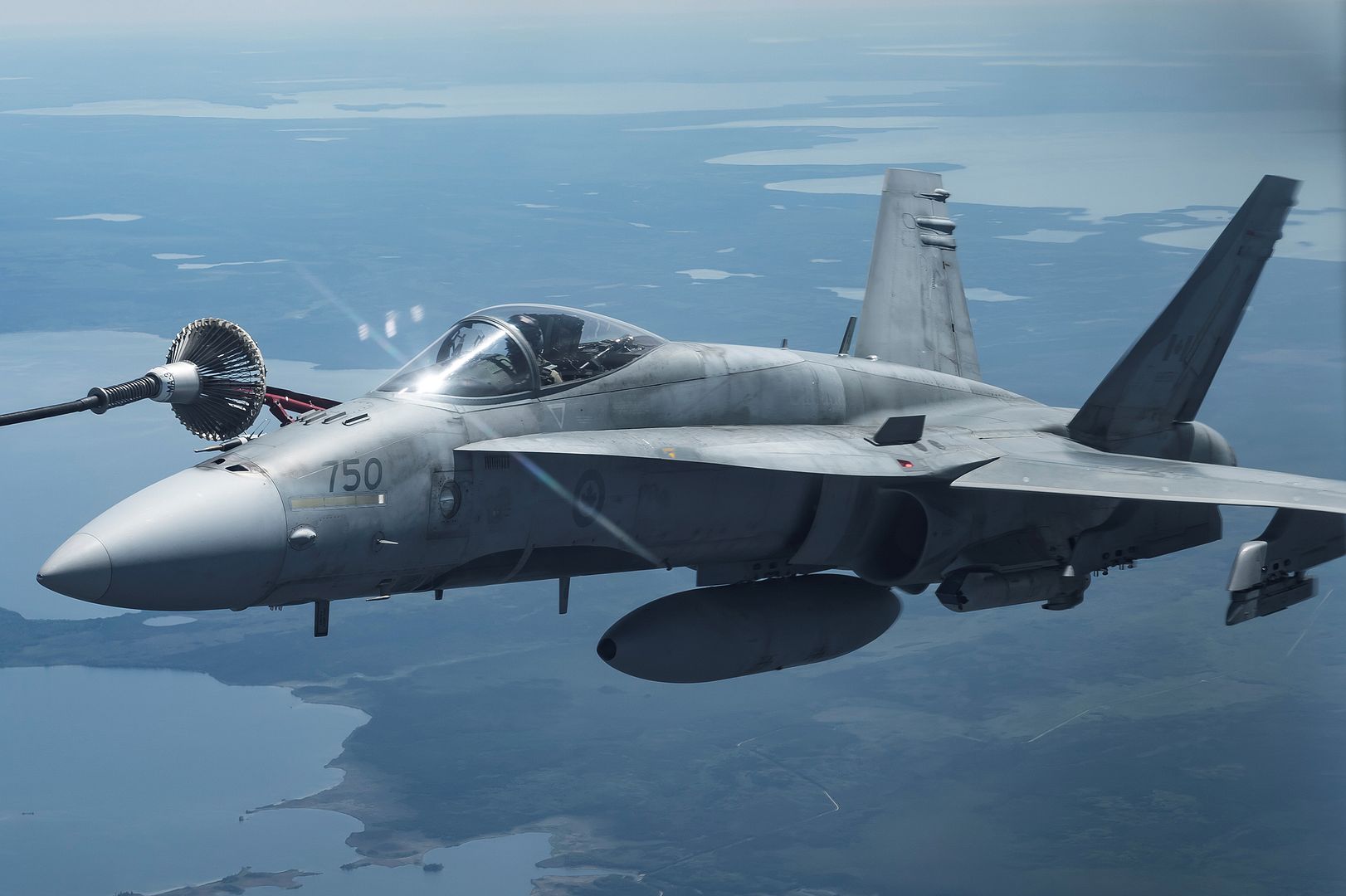
Royal Australian Air Force
November 29
Low-level Hercules training over RAAF Base Richmond
From November 30 until December 9, trainee pilots and loadmasters will face the final test of learning to fly the C-130J Hercules, conducting tactical transport training over the Hawkesbury area and rural New South Wales.
This will include a controlled dispensing of flares in airspace over RAAF Base Richmond on November 30, from an altitude of 600 metres. This is well within the safe burnout height of the flares.
Flights are subject to variables including weather, air traffic control, and aircraft availability, and sorties may be delayed or cancelled.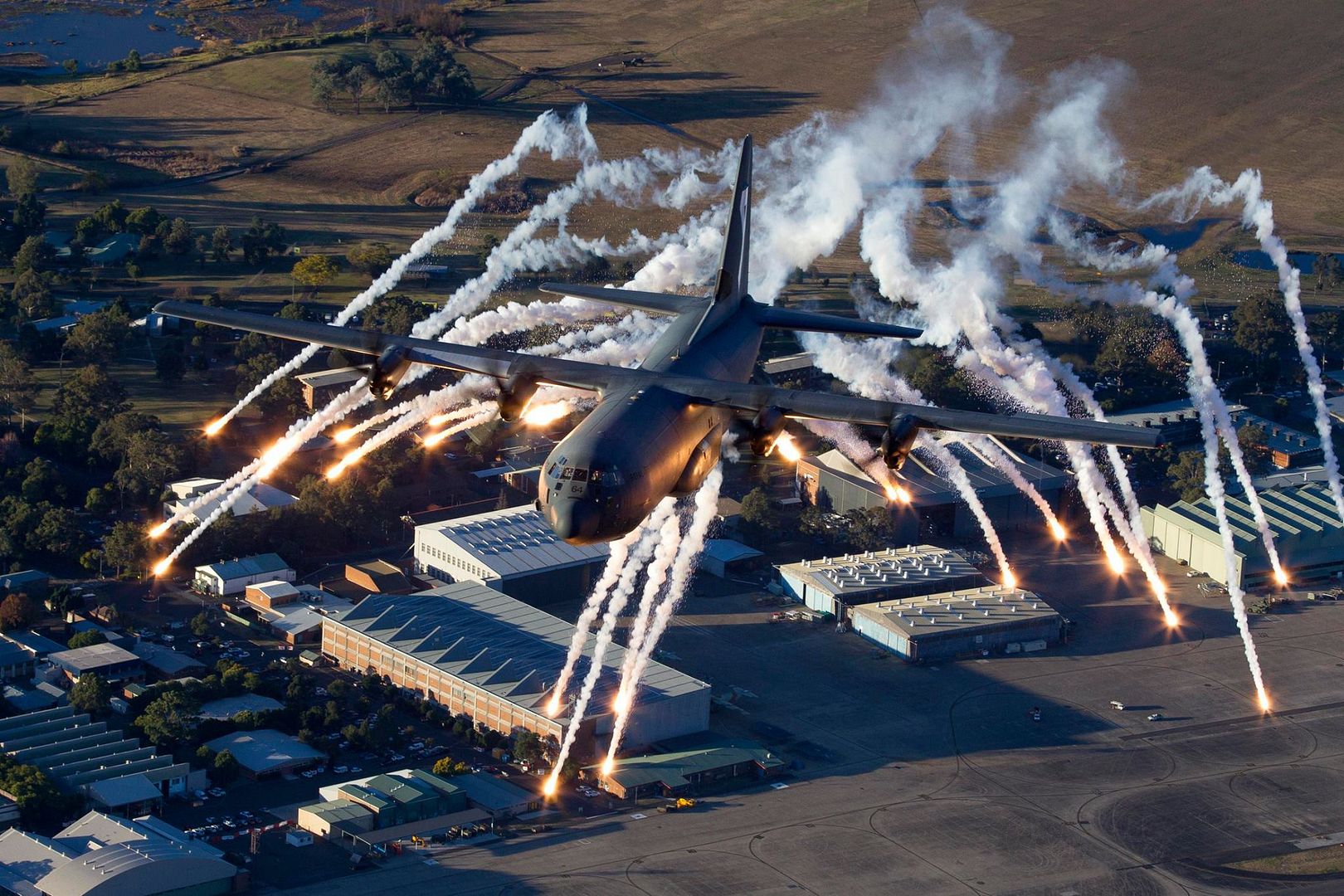
-
 Main AdminA U.S. Army AH-64 Apache helicopter from 1st Battalion, 3rd Aviation Regiment (Attack Reconnaissance) conducts a traffic pattern training flight Nov. 30, 2016, at Katterbach Army Airfield in Ansbach, Bavaria, Germany. During traffic pattern training flights, pilots perform multiple important maneuvers and tasks, including taking off, making coordinated turns, managing airspeed and landing. (U.S. Army photo by Training Resource Specialist Charles Rosemond/released)
Main AdminA U.S. Army AH-64 Apache helicopter from 1st Battalion, 3rd Aviation Regiment (Attack Reconnaissance) conducts a traffic pattern training flight Nov. 30, 2016, at Katterbach Army Airfield in Ansbach, Bavaria, Germany. During traffic pattern training flights, pilots perform multiple important maneuvers and tasks, including taking off, making coordinated turns, managing airspeed and landing. (U.S. Army photo by Training Resource Specialist Charles Rosemond/released)
RED SEA (Dec. 1, 2016) Capt. Jeffrey Anderson, commander, Carrier Air Wing (CVW) 3, pilots an F/A-18E Super Hornet assigned to the Sidewinders of Strike Fighter Squadron (VFA) 86 as he makes his final arrested landing on the flight deck of the aircraft carrier USS Dwight D. Eisenhower (CVN 69) (Ike). Ike and its carrier strike group are deployed in support of Operation Inherent Resolve, maritime security operations and theater security cooperation efforts in the U.S. 5th Fleet area of operations. (U.S. Navy photo by Petty Officer 3rd Class Nathan T. Beard)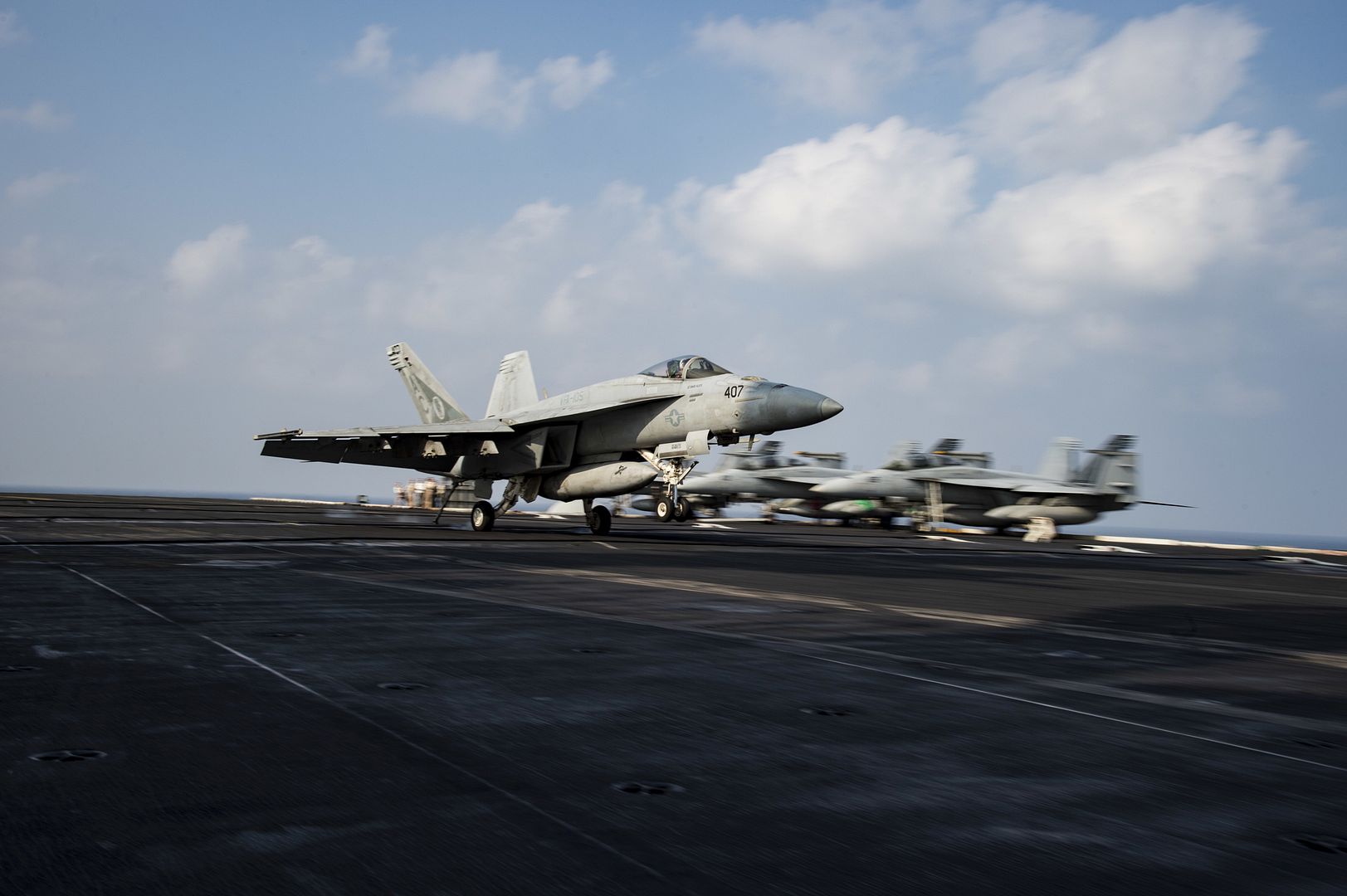
U.S. Army paratroopers assigned to 1st Squadron, 91st Cavalry Regiment, 173rd Airborne Brigade, conduct an airborne operation from U.S. Air Force C-130 Hercules from the 86th Air Wing at Cerklje Drop Zone in Slovenia during the Exercise Mountain Shock, Dec. 1, 2016. Exercise Mountain Shock is a bilateral training exercise with the Solvenian Armed Forces focused on the rapid deployment and assembly of forces and team cohesion with weapon systems tactics and procedures. Exercises such as this build a foundation of teamwork and readiness between allied NATO countries. The 173rd Airborne Brigade is the U.S. Army Contingency Response Force in Europe, capable of projecting ready forces anywhere in the U.S. European, Africa or Central Commands' areas of responsibility within 18 hours. (U.S. Army photo by Visual Information Specialist Paolo Bovo/Released)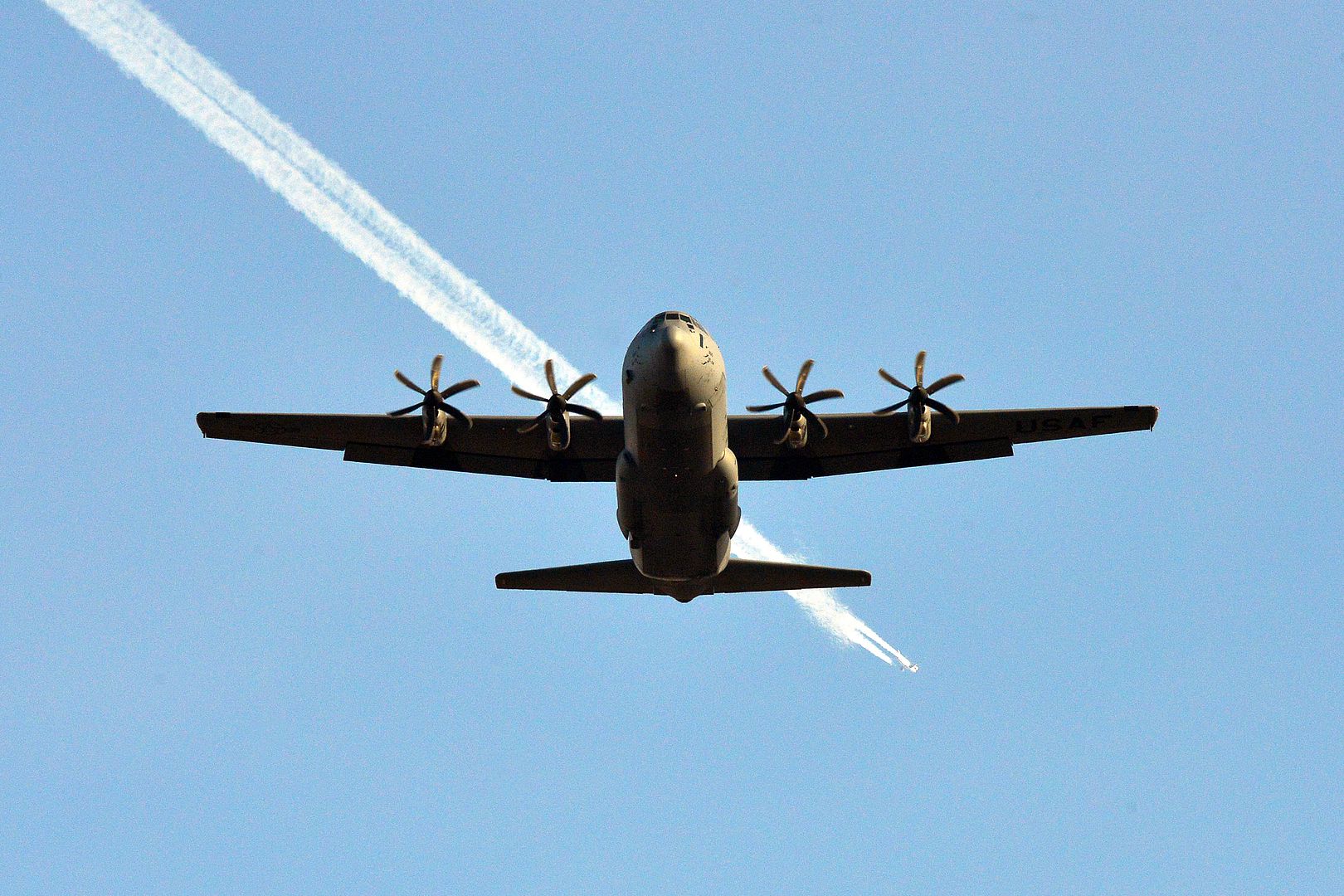
Greenville, SC., Dec. 1, 2016 ? The Lockheed Martin T-50A is soaring over Greenville, South Carolina with flight operations now underway. The initial test flight took place Nov. 19.
The T-50A was announced as the official Lockheed Martin/Korea Aerospace Industries (KAI) offering for the U.S. Air Force?s Advanced Pilot Training (APT)/T-X competition in February, and Greenville was announced as the final assembly and checkout facility (FACO).
The T-50A is purpose-built around 5th Generation thinking, and will train the F-22 Raptor and F-35 Lightning II pilots of tomorrow, as well as pilots for frontline 4th Generation aircraft. Building on the proven heritage of the T-50, the T-50A has more than 100,000 flight hours in its repertoire, training more than 1,800 pilots.
Lockheed Martin?s accompanying T-50A Ground-Based Training System features innovative technologies that deliver an immersive, synchronized ground-based training platform. The T-50A team also brings extensive experience in world-class, worldwide logistics support.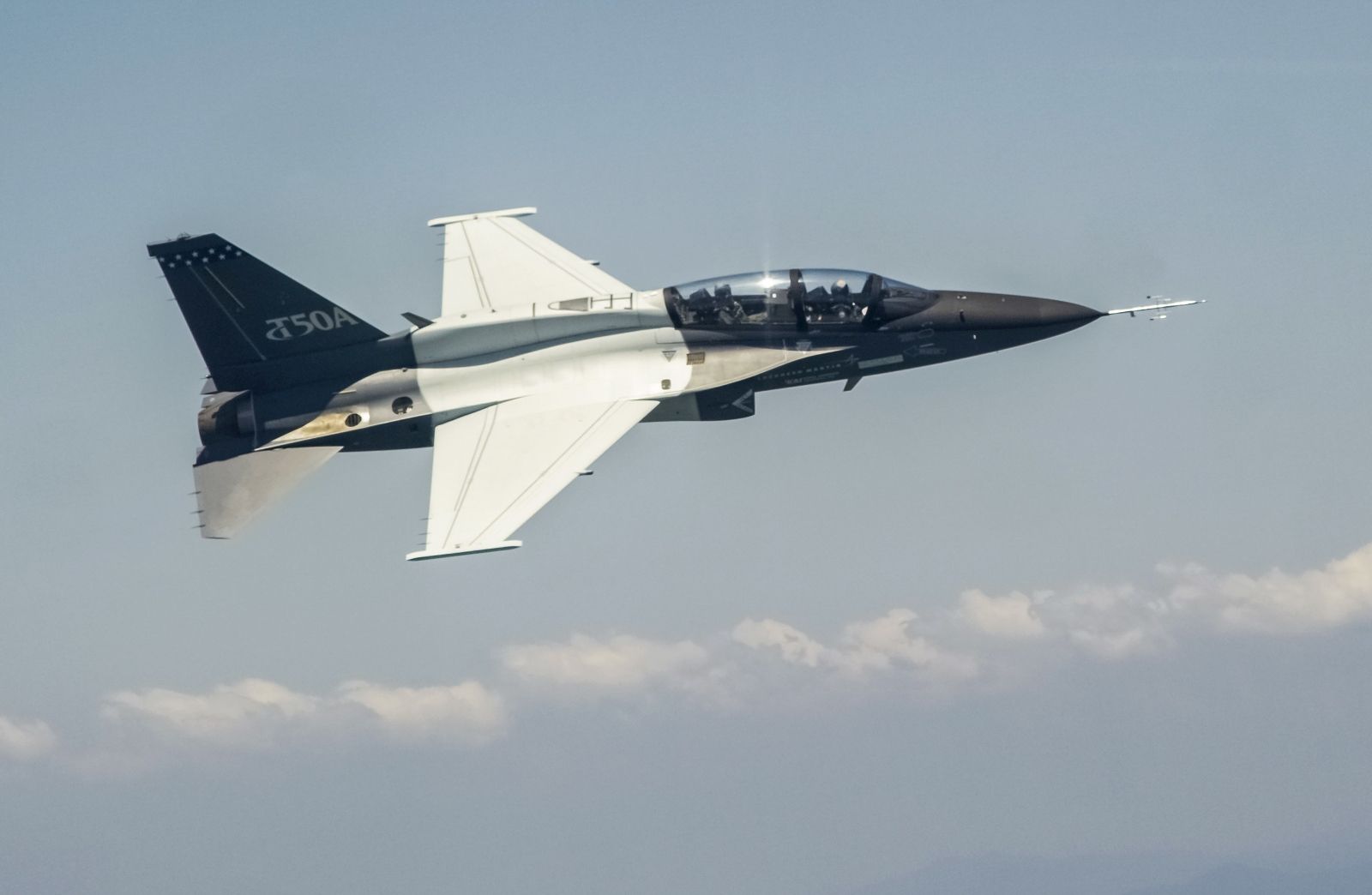
RAAF KC-30A Multi-Role Tanker Transports refuelling trials with the United States Air Force.
Conducted in late October and early November, the trials involved seven flights during which 100,000 litres of fuel were transferred. Our Aircraft Research and Development Unit will now work with the United States Air Force towards releasing an operational clearance for the KC-30A to refuel the B-1B.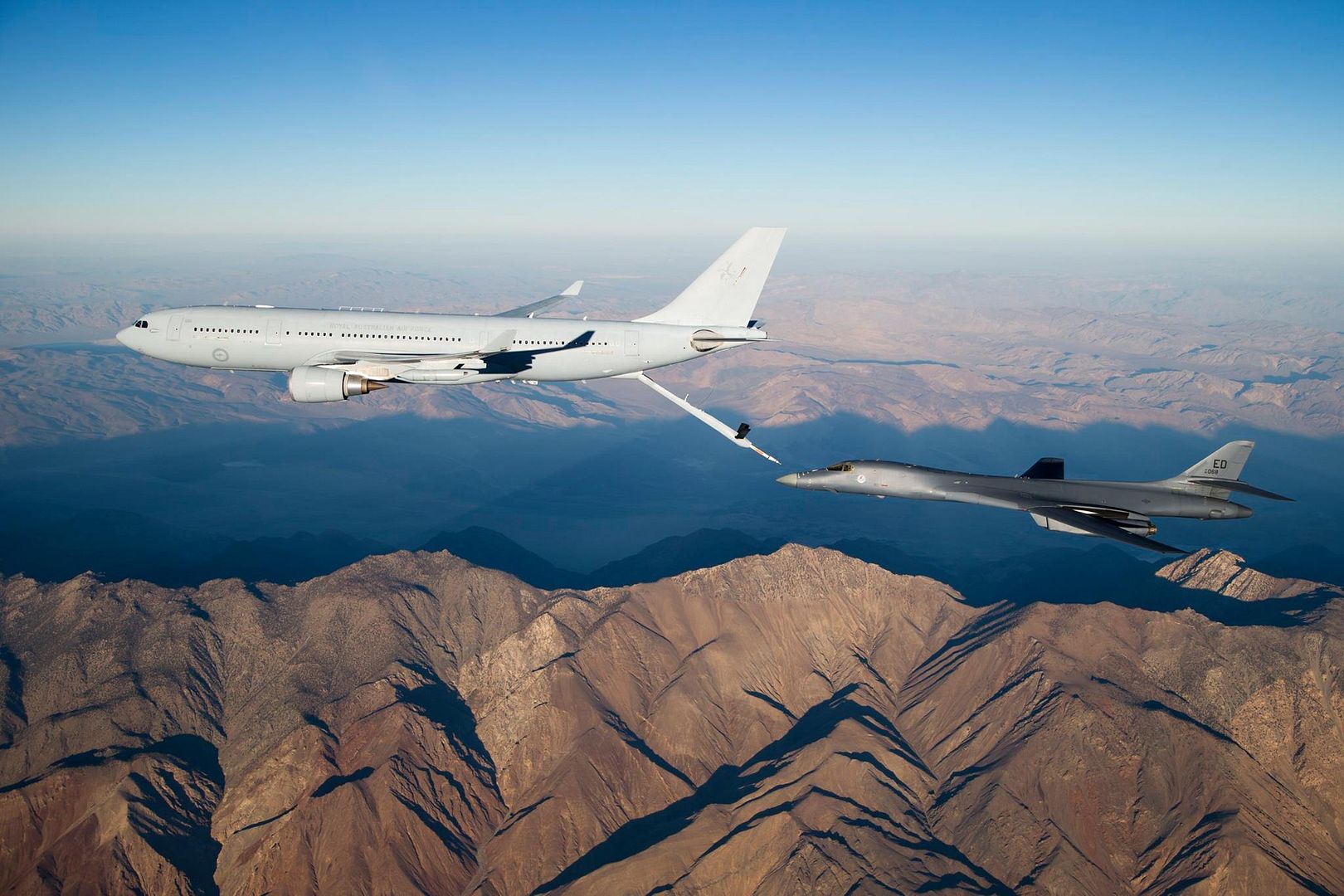
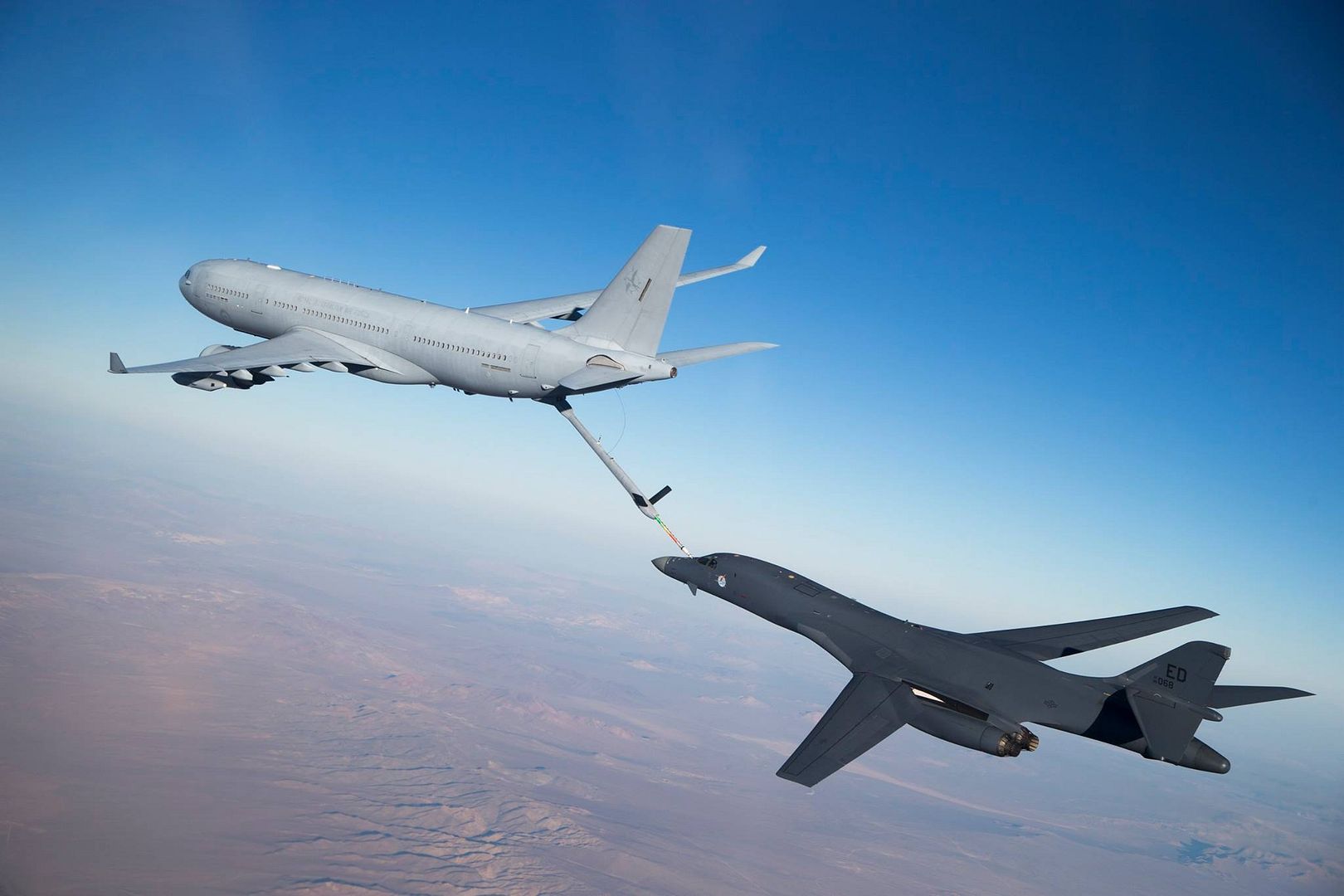
-
 Main AdminPACIFIC OCEAN (Dec. 1, 2016) Capt. Warren Sisson, commander, Carrier Air Wing (CVW) 9, lands aboard the flight deck of USS John C. Stennis (CVN 74) completing the 1,000th carrier landing of his naval career. John C. Stennis is underway to conduct routine training and participate in National Pearl Harbor Remembrance Day events in Hawaii. (U.S. Navy photo by Petty Officer 3rd Class Andre T. Richard/ Released)
Main AdminPACIFIC OCEAN (Dec. 1, 2016) Capt. Warren Sisson, commander, Carrier Air Wing (CVW) 9, lands aboard the flight deck of USS John C. Stennis (CVN 74) completing the 1,000th carrier landing of his naval career. John C. Stennis is underway to conduct routine training and participate in National Pearl Harbor Remembrance Day events in Hawaii. (U.S. Navy photo by Petty Officer 3rd Class Andre T. Richard/ Released)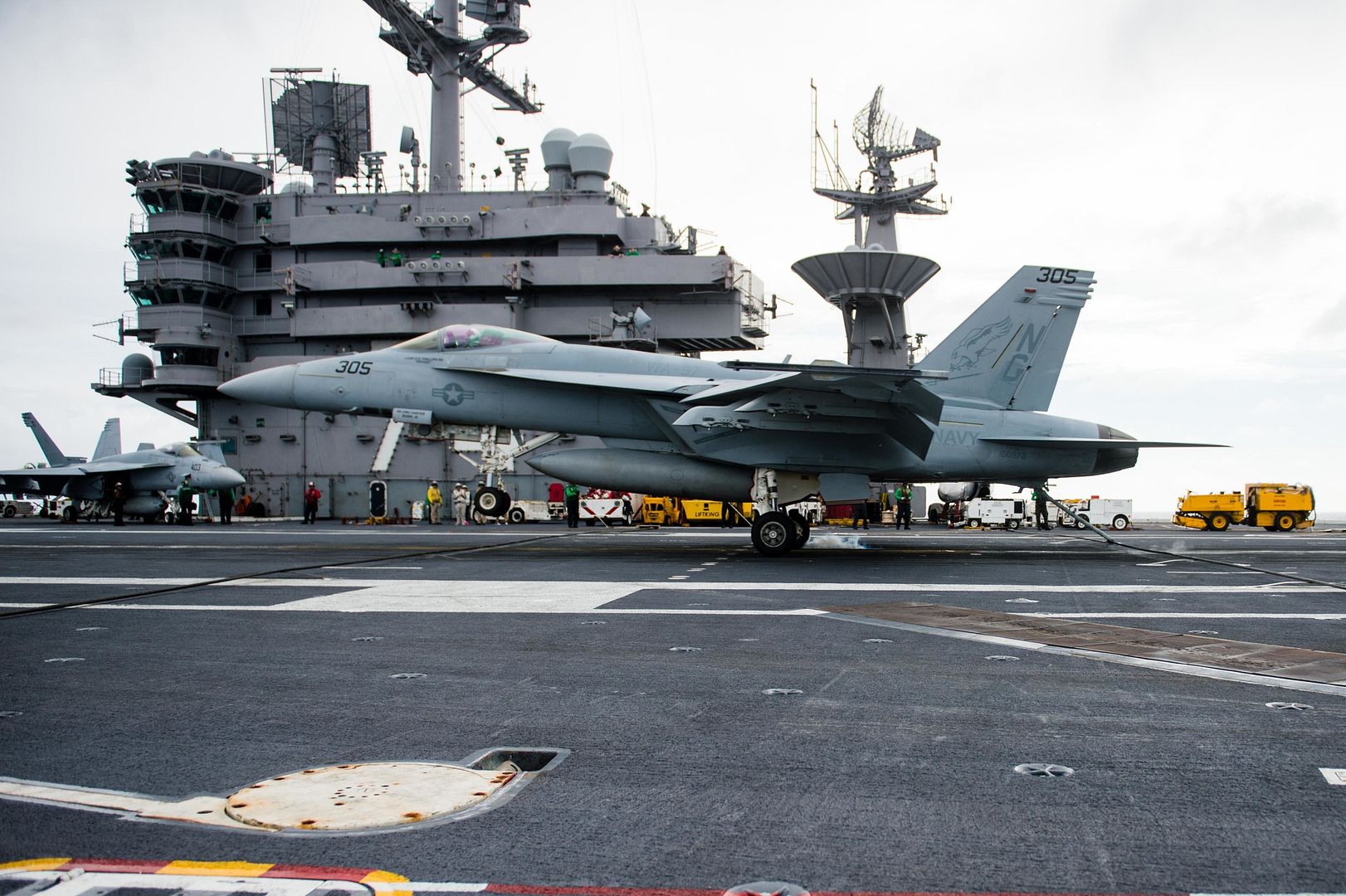
A CH-53E Super Stallion helicopter with the 24th Marine Expeditionary Unit takes off from the deck of the USS Mesa Verde (LPD-19) during flight operations for Amphibious Ready Group/Marine Expeditionary Unit exercises Dec. 2, 2016. ARGMEUEX, or Amphibious Ready Group Marine Expeditionary Group Exercise, is a three-week training evolution intended to build upon previous relationships, thereby enhancing Navy and Marine Corps' interoperability and amphibious warfare capabilities to tackle a wide range of operations during their upcoming deployment. During the exercise, sailors and Marines work together to conduct flight operations, noncombatant evacuation exercises, simulated raids and visit, board, search, and seizure drills. The 24th MEU and Bataan Amphibious Ready Group is committed to executing realistic and relevant training in partnership as the nation?s premier crisis response force. (U.S. Marine Corps photo by Cpl. Brianna Gaudi)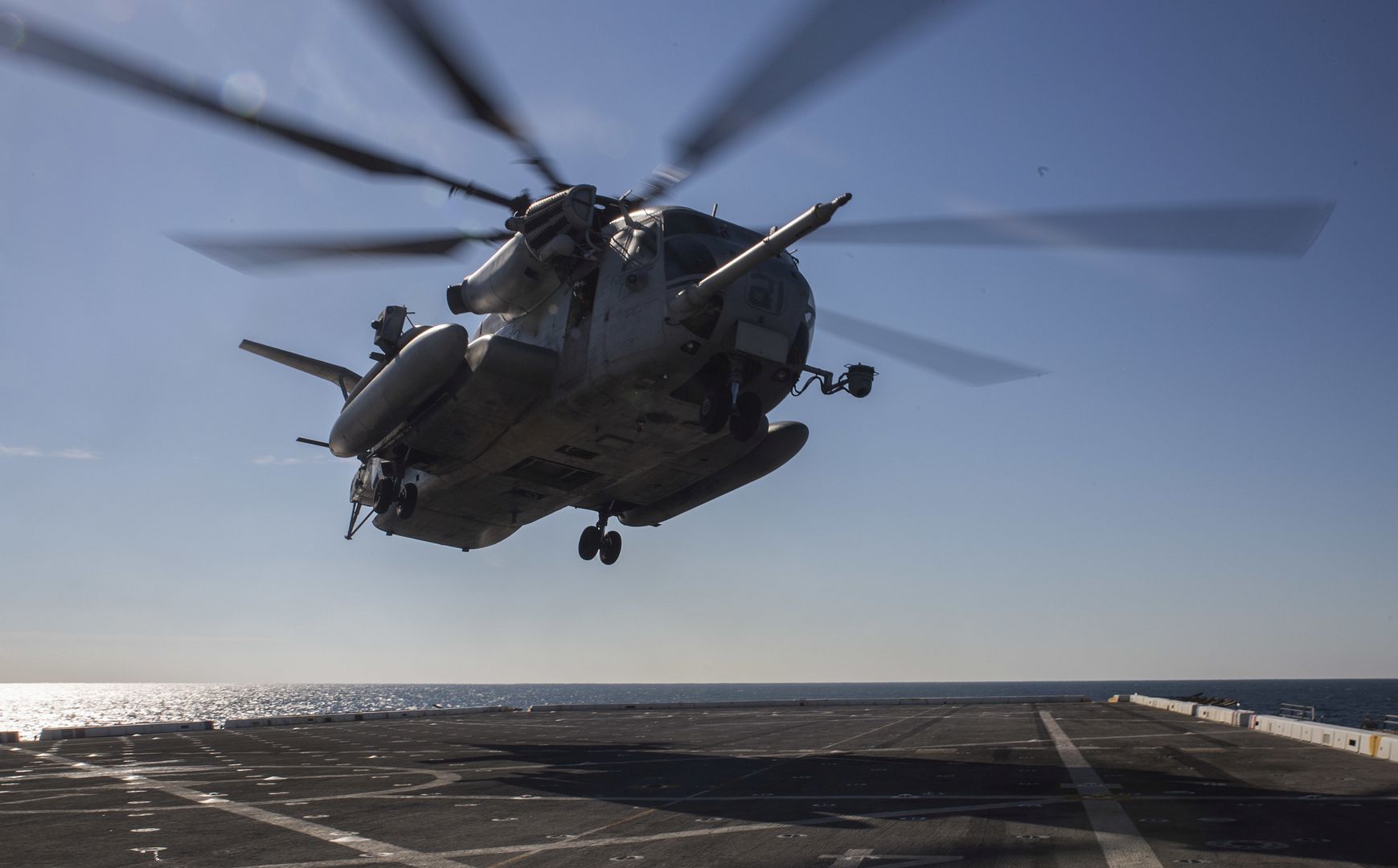
A U.S. Air Force F-15 Strike Eagle approaches to refuel from a 340th Expeditionary Air Refueling Squadron KC-135 Stratotanker over Iraq, Dec. 1, 2016. The 340th EARS extended the fight against Da'esh by delivering 34,600 pounds of fuel to USAF F-15 Strike Eagles. (U.S. Air Force photo by Senior Airman Jordan Castelan)
Three B-52 Stratofortresses from Minot Air Force Base, North Dakota, deployed to Andersen Air Force Base, Guam, Dec. 2.
This short-term deployment will ensure bomber crews maintain a high state of readiness and crew proficiency, and will provide opportunities to integrate capabilities with regional partners in the Indo-Asia-Pacific region.
During the deployment, the B-52s will conduct local training sorties in the U.S. Pacific Command area of responsibility, allowing the crews to hone skills in several key capabilities including command and control, air refueling and long-range navigation.
U.S. Strategic Command regularly tests and evaluates the readiness of strategic assets to ensure it is able to honor all security commitments.
PARIS, Dec. 2, 2016 /PRNewswire/ -- Boeing (NYSE: BA) and AerCap, a global leader in aircraft leasing, celebrated the delivery of the first 787 for Air France. The airplane, a 787-9, signifies the delivery of AerCap's 50th Dreamliner and will be deployed on Air France's Paris to Cairo route starting in January. The airplane is also the 500th 787 produced on Boeing's production lines.
"It is with great pride and honor that Air France is taking delivery of its first Boeing 787, the 9th for Air France-KLM," said Jean-Marc Janaillac, CEO, Air France-KLM. "Air France's first e-enabled aircraft, the Dreamliner, marks a new stage in the modernization of our fleet. It will offer customers the best of Air France's products and services."
"We are delighted to be a part of this significant milestone for both Air France and Boeing," said AerCap CEO Aengus Kelly. "AerCap is the world's largest lessor of the Boeing 787 Dreamliner aircraft, with over 80 aircraft owned and on order. We wish our friends and partners at Boeing and Air France continued success."
The Air France-KLM Group has ordered a total of 18 787-9s and seven 787-10s, with an additional 12 787-9s leased through AerCap. The arrival of Air France's first 787-9 in Paris today is part of the carrier's continued renewal of its long-haul fleet.
"We're proud that Air France will be flying this milestone airplane, which shows they are an industry leader in customer service and passenger innovation," said Boeing Vice Chairman Ray Conner. "We also congratulate AerCap on its milestone 50th 787 and appreciate their continued confidence in the Dreamliner."
The 787-9 leverages the visionary design of the 787-8, offering passenger-pleasing features such as the industry's largest windows, large overhead bins with room for everyone's bag, modern LED lighting, air that is cleaner, more humid and at a higher pressure for greater comfort and technology that senses and counters turbulence for a smoother ride.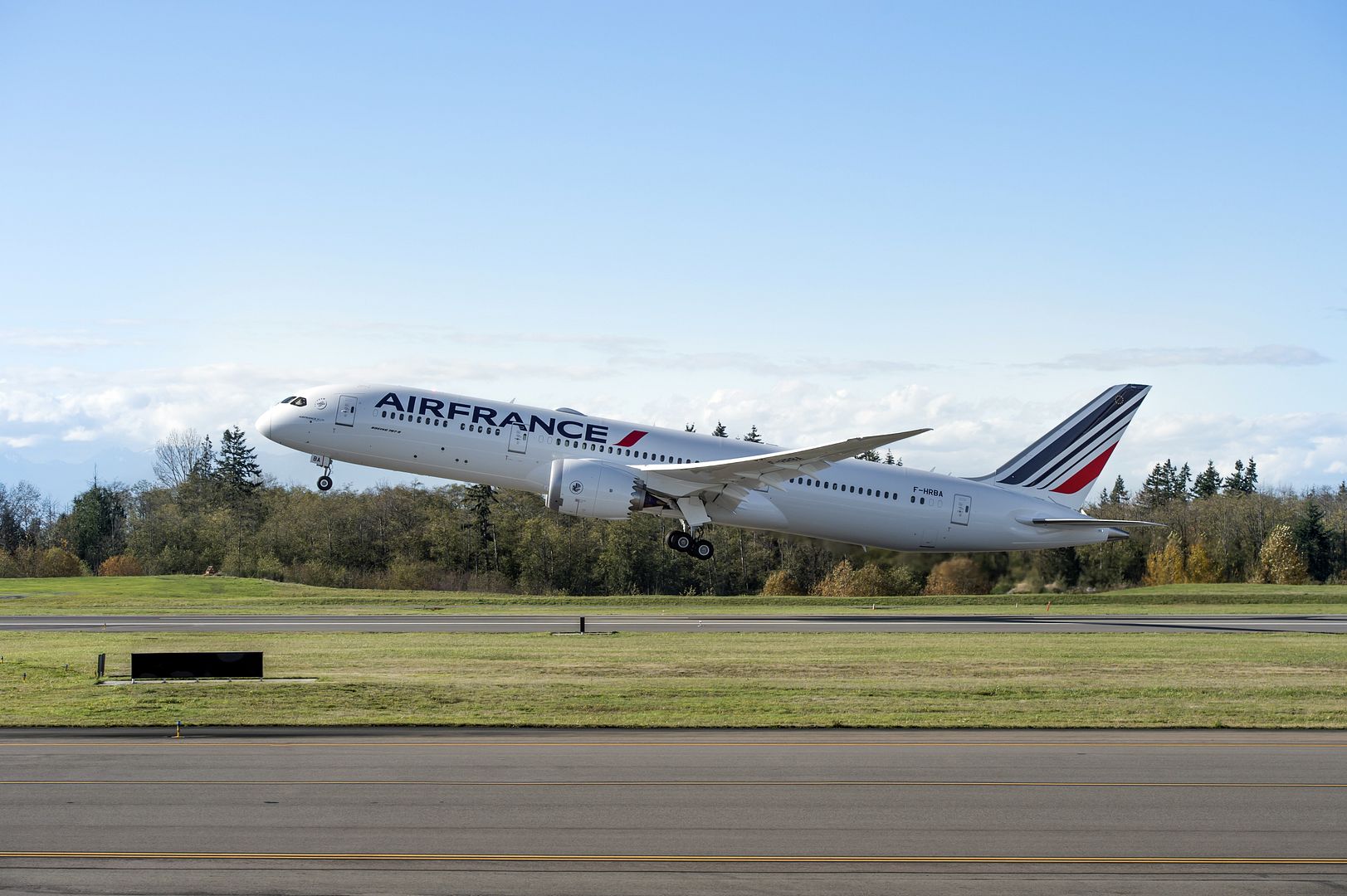
2 December 2016 Press Release
SAA?s A330-300 are configured in a comfortable two-class cabin layout with 46 seats in Business Class and 203 in Economy class seats. The aircraft will introduce new levels of onboard comfort, including connectivity for SAA?s passengers and enhanced operating efficiencies for the airline.
SAA has selected the latest 242-tonne Maximum Take-Off Weight variant of the A330-300, which incorporates a new aerodynamic packages enabling the aircraft to cover distances of up to 6,350 nautical miles (11,750km) in flights up to 15 hours in duration. This payload/range capability allows the aircraft to be deployed across SAA?s long-haul, intra-Africa and peak domestic routes.
The A330-300s share the same cockpit configuration, operating philosophy and procedures with SAA?s existing fleet of Airbus widebody jetliners. This high degree of commonality across the fleet is fundamental to achieving low operating, maintenance and training costs.
The A330 Family, which spans 250 to 300 seats, has attracted over 1,630 orders, with over 1,300 aircraft delivered to more than 100 operators worldwide, including SAA. The A330 is one of the world?s most efficient aircraft with best-in-class operating economics and average on-time dispatch reliability above 99 percent.
2 December 2016 Press Release
The first delivery of an A321 aircraft from the Airbus U.S. Manufacturing Facility to Delta Air Lines took place today, in Mobile, Alabama. On hand for the occasion were executives from Airbus and Delta Air Lines, a team of Delta employees from the airline?s Minneapolis-St. Paul station, and representatives of the more than 370 employees at the facility.
Bob Lekites, Executive Vice President-Customers, Airbus Americas said, ?Airbus is committed to giving our customers the right products for a marketplace that needs modern, efficient and passenger-friendly aircraft. Delta has recognized our commitment to our customers, and has determined we were the right partner for them. Delta already operates 137 A320 family aircraft and 40 A330 and have another 123 aircraft on order?including A320 family, A330 and A350 aircraft. Just this year, Delta placed its third A321 ceo order in three years. So this is definitely the first of many deliveries Delta will take from Mobile in the next few years.?
?The first Delta A321 produced in Mobile will be our 12th overall for Delta. We look forward to taking many more A321s in the years ahead to safely and comfortably get our customers to their destinations,? said Greg May, Delta?s Senior Vice President - Supply Chain Management and Fleet. ?We appreciate our partnership with Airbus and the great manufacturing work produced at the Mobile facility.?
Airbus announced its commitment to build a single-aisle assembly line in Mobile, Alabama in 2012, and less than one year later, broke ground on the $600 million facility. The ceremonial inauguration of the plant took place in September 2015. The aircraft delivered today is the 15th aircraft delivered from the Mobile facility.
Airbus anticipates delivering four aircraft per month from the Mobile plant by the end of 2017. The initial deliveries will all be A320 Family aircraft with the Current Engine Option (CEO), but will begin transitioning to New Engine Option (NEO) derivatives in late 2017.
In addition to hundreds of new Airbus jobs the project has brought to the local community, the Mobile area has seen many Airbus suppliers open new facilities in the region, providing even more employment and a parallel boost to the local economy. Airbus is proud to boast that more than 85 percent of its employees are from the Gulf Coast region, with nearly one third being U.S. military veterans.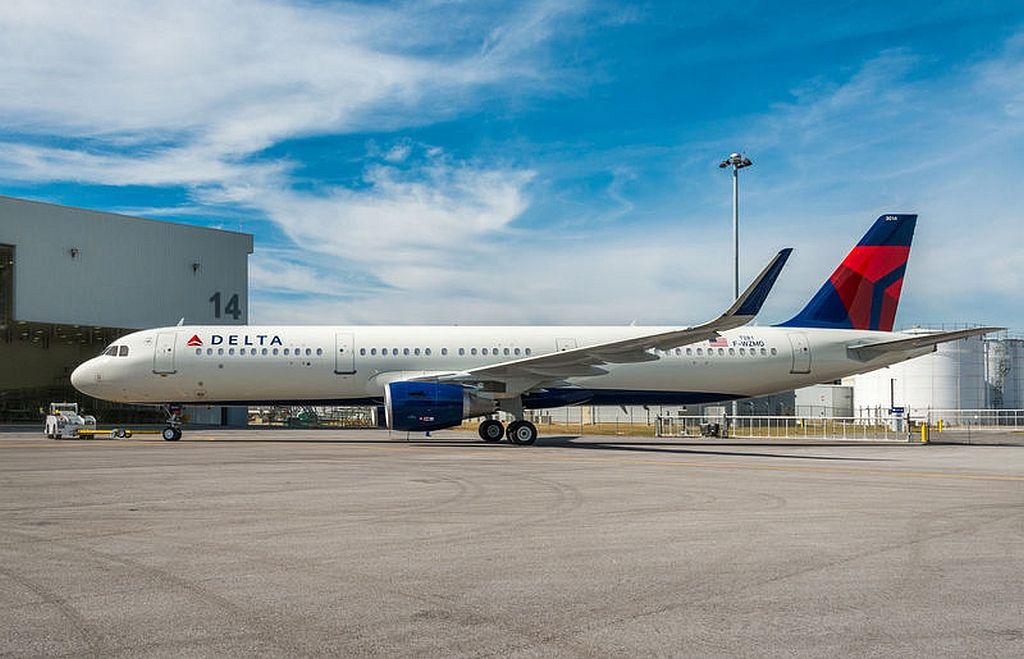
S?o Jos? dos Campos, Brazil, December 2nd, 2016 ? Embraer reached another milestone today with its E-Jets program - the delivery of the 1,300th aircraft. The E-Jet, an E195, was handed over to China?s Tianjin Airlines in a ceremony at the factory in S?o Jos? dos Campos. This delivery brings the Tianjin Airlines E-Jet fleet to 45, the largest in Asia.
?We dedicate this milestone to all our customers who have embraced the E-Jets philosophy. Without each of them, we would never have achieved such success with the program,? said John Slattery, President & CEO, Embraer Commercial Aviation. ?It?s a great pleasure to share this exciting moment with Tianjin. We?ve been partners for many years and we look forward to many more decades, as the airline grows with the E2.?
During Chinese President Xi Jinping?s 2014 state visit to Brazil, Embraer and Tianjin Airlines signed an agreement for up to 20 E195s and 20 E190-E2s. The first E2 is scheduled to be delivered to Tianjin Airlines in 2018.
Tianjin Airlines is among Embraer?s earliest customers in China. In 2008, it became the first airline to operate an E-Jet in the country. It is also the Embraer Authorized Service Center in the region.
Liu Lu, Executive Chairman and President of Tianjin Airlines, said this is another milestone for Tianjin Airlines. ?Tianjin Airlines started as a regional carrier, and E-Jets have played a crucial role in our fleet optimization and route expansion. Tianjin Airlines is also the largest E-Jets operator in Asia with 62 aircraft, which redefined the operation model of regional aviation in China. We are proud to receive the 1,300th E-Jet of Embraer and we look forward to the new E-Jets E2 to bring us even more value.?
Embraer has been leading the Chinese regional aviation industry with a market share around 80% of regional jet orders. To date, the company has logged orders for 190 commercial aircraft, 21 of which are pending government approval.
Embraer is the world?s leading manufacturer of commercial jets up to 130 seats. More than 100 customers around the world fly the ERJ and E-Jet families of aircraft. For the E-Jets program alone, Embraer has logged more than 1,700 orders and 1,300 deliveries, redefining the traditional concept of regional aircraft by operating across a range of business application.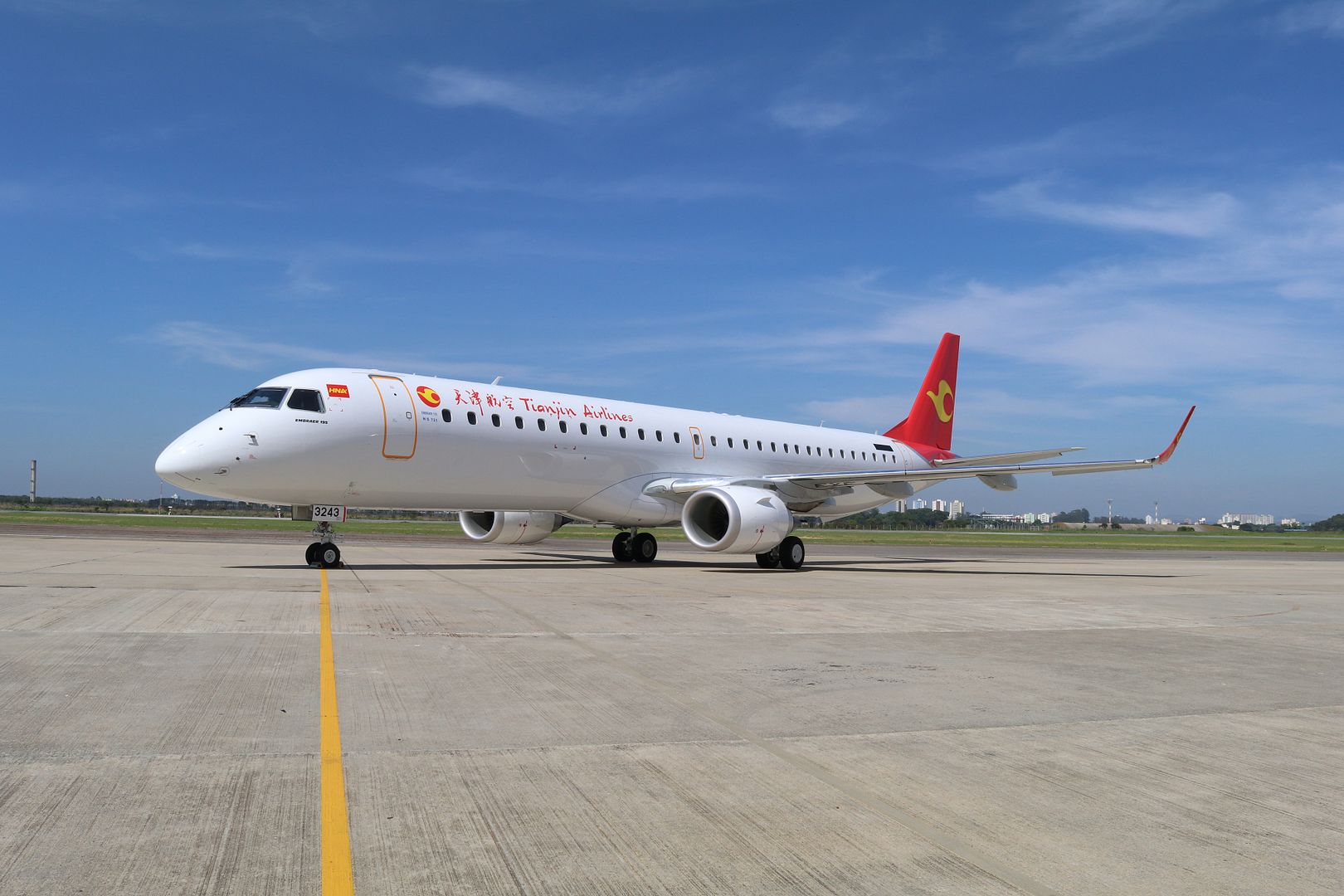
December 2, 2016 Montr?al Commercial Aircraft, Press Release
Bombardier Commercial Aircraft announced today that the United Republic of Tanzania represented by the Tanzanian Government Flight Agency (TGFA) has signed firm purchase agreements for two CS300 jetliners and one Q400 turboprop aircraft. The aircraft will be leased to and operated by Air Tanzania (The Wings of the Kilimanjaro) based in Dar es Salaam.
Based on the list prices of the CS300 and Q400 aircraft, the combined value of the purchase agreements is approximately $200 million US.
Like the two Q400 turboprop aircraft delivered to the TGFA for lease and operation by Air Tanzania in September 2016, the third announced today will have an all-economy, 76-seat interior with two lavatories. The two CS300 airliners will be configured in a dual-class layout, and will be equipped with WiFi internet and in-flight entertainment.
?The domestic market in Tanzania as well as the regional market are becoming more competitive as both business and leisure travel are steadily increasing,? said Dr. Leonard Chamuriho, Permanent Secretary at Tanzania?s Ministry of Works, Communications and Transport. ?Therefore it is vital to operate aircraft that offer superb passenger comfort and amenities. Of course, high reliability, operational flexibility, as well as excellent fuel efficiency and economics are also necessary. Both the Q400 and CS300 aircraft more than satisfy these parameters.?
?We are delighted that the Q400 aircraft which entered service with Air Tanzania earlier this year are proving their superior economics and versatility. The CS300 aircraft will allow Air Tanzania to expand both its domestic and regional markets, and it has the range to open new international destinations such as the Middle East and India at the lowest cost. The C Series jet aircraft have the right attributes to develop these markets,? said Jean-Paul Boutibou, Vice President, Sales, Africa and the Middle East, Bombardier Commercial Aircraft.
Including the purchase agreement announced today, Bombardier has recorded firm orders for 566 Q400 and 360 C Series aircraft.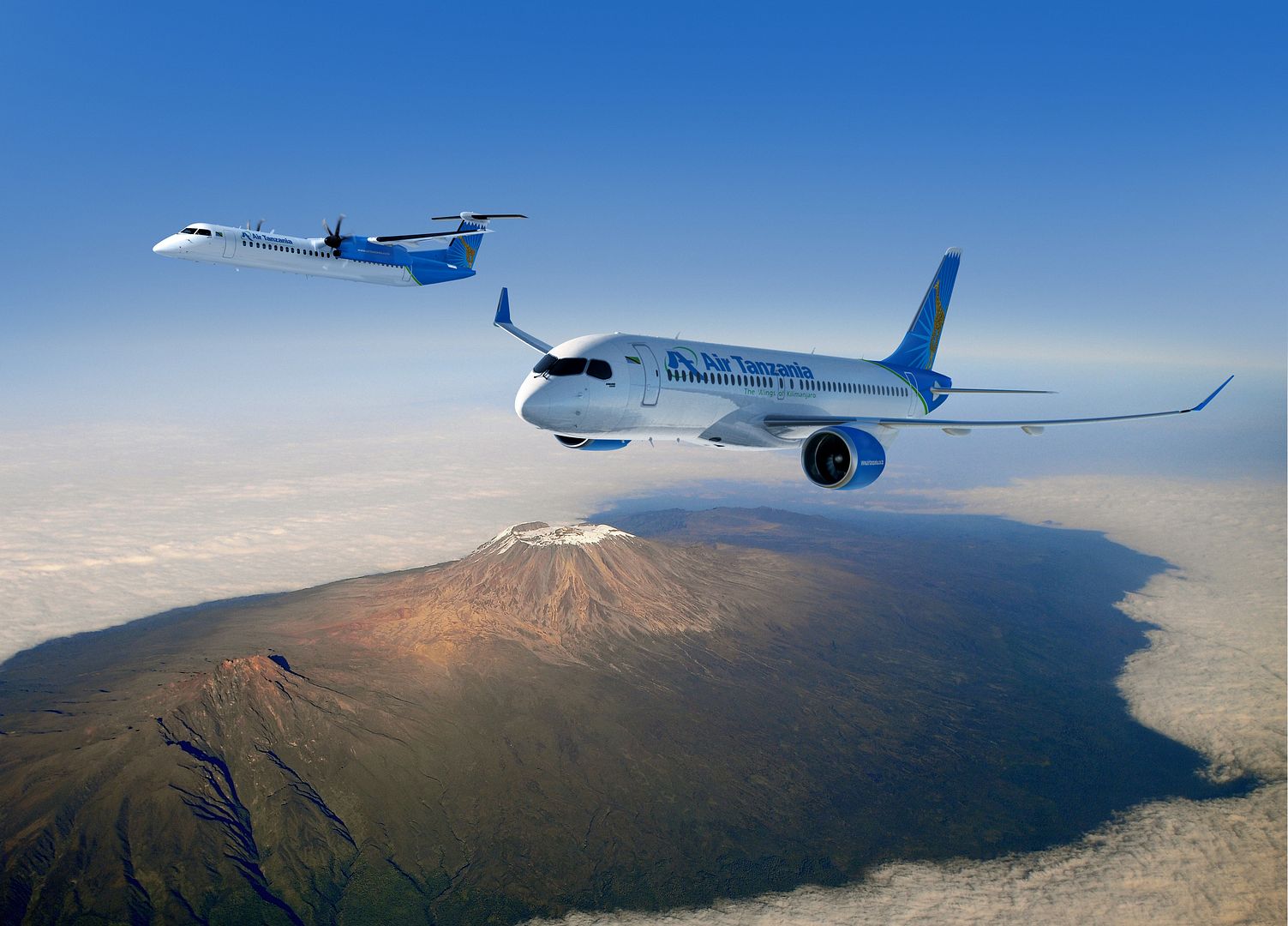
-
 Main AdminAn AH-1Z Viper sits on the Marine Corps Air Station Futenma flight line in Okinawa, Japan, Dec. 2, 2016. Marine Light Attack Helicopter Squadron 267 conducted aerial live-fire training utilizing the AH-1Z Viper for the first time in Okinawa. The Marines are with HMLA-267, assigned to Marine Aircraft Group 36, 1st Marine Aircraft Wing, III Marine Expeditionary Force. (U.S. Marine Corps photo by Lance Cpl. Nelson Duenas/Released)
Main AdminAn AH-1Z Viper sits on the Marine Corps Air Station Futenma flight line in Okinawa, Japan, Dec. 2, 2016. Marine Light Attack Helicopter Squadron 267 conducted aerial live-fire training utilizing the AH-1Z Viper for the first time in Okinawa. The Marines are with HMLA-267, assigned to Marine Aircraft Group 36, 1st Marine Aircraft Wing, III Marine Expeditionary Force. (U.S. Marine Corps photo by Lance Cpl. Nelson Duenas/Released)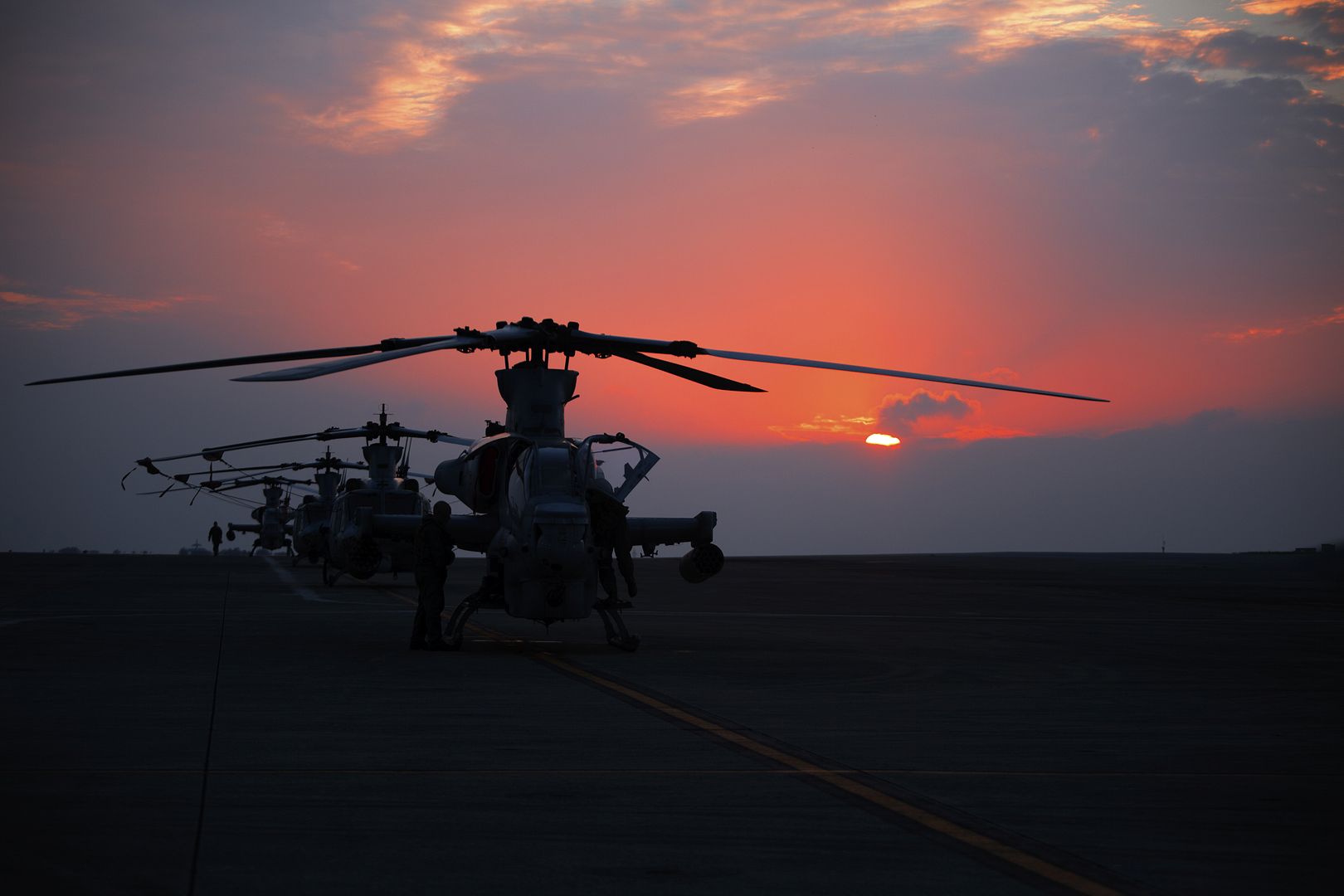
HONOLULU (Dec. 3, 2016) An Airbus carrying more than 100 World War II veterans, including Pearl Harbor survivors, receives a water salute as it arrives at Honolulu International Airport. The more than 100 WWII veterans arrived in Honolulu to participate in the remembrance events throughout the week to honor the courage and sacrifices of those who served during Dec. 7, 1941, and throughout the Pacific Theater. Dec. 7, 2016, marks the 75th anniversary of the attacks on Pearl Harbor and Oahu. As a Pacific nation, the U.S. is committed to continue its responsibility of protecting the Pacific sea-lanes, advancing international ideals and relationships, well as delivering security, influence, and responsiveness in the region. (U.S. Navy photo by Petty Officer 1st Class Nardel Gervacio/Released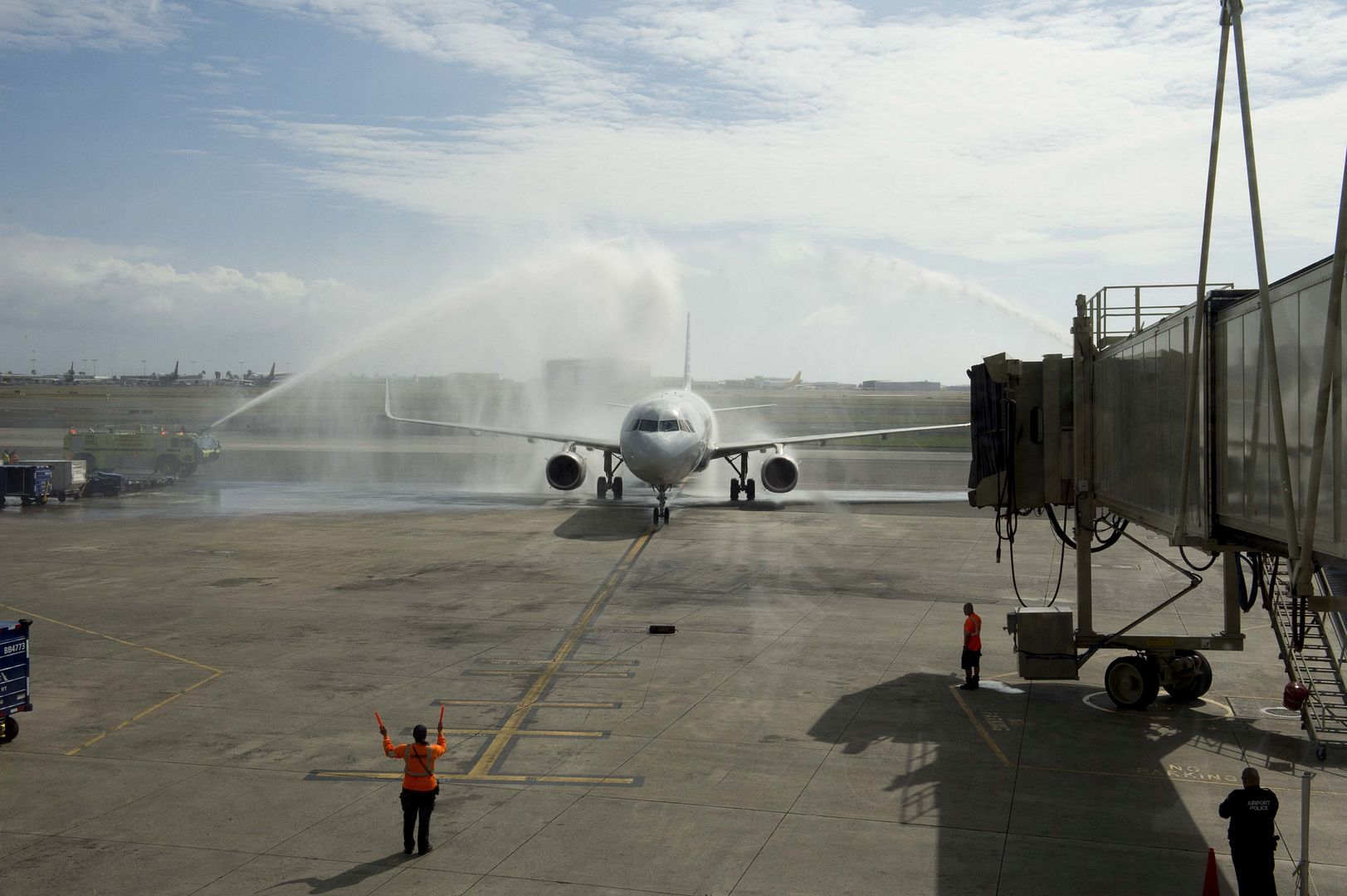
Four Utah Air National Guard KC-135R Stratotanker aircraft sit on the flight line at Roland R. Wright Air National Guard Base during a unit training assembly weekend on Dec. 3, 2016. The KC-135 Stratotanker provides the core aerial refueling capability for the United States Air Force and has excelled in this role for more than 50 years. This unique asset enhances the Air Force's capability to accomplish its primary mission of global reach. It also provides aerial refueling support to Air Force, Navy, Marine Corps and allied nation aircraft. The KC-135 is also capable of transporting litter and ambulatory patients using patient support pallets during aeromedical evacuations. (U.S. Air National Guard photo by Tech. Sgt. Amber Monio)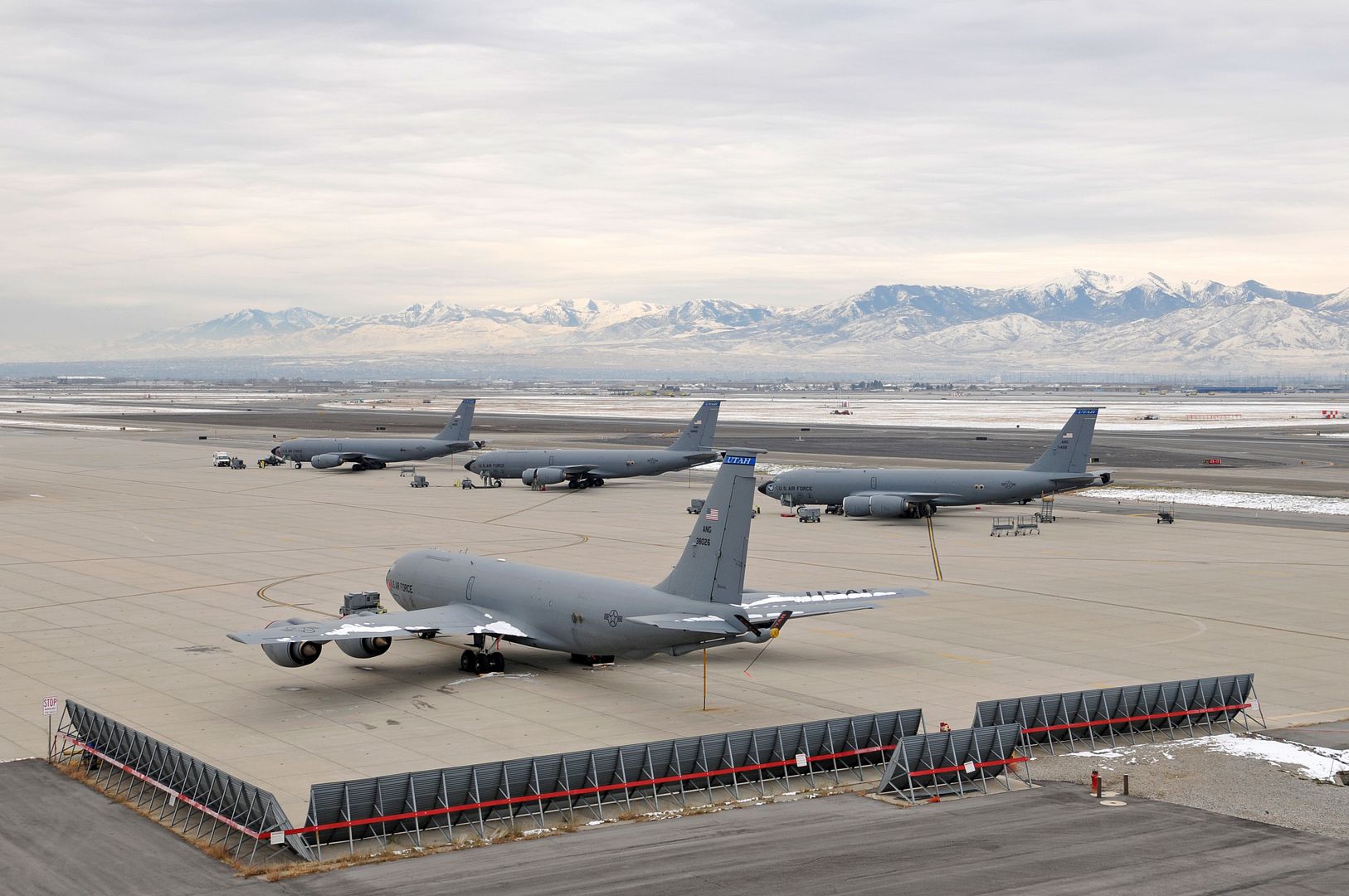
Post a reply
- Go to Next topic
- Go to Welcome
- Go to Introduce Yourself
- Go to General Discussion
- Go to Screenshots, Images and Videos
- Go to Off topic
- Go to Works in Progress
- Go to Skinning Tips / Tutorials
- Go to Skin Requests
- Go to IJAAF Library
- Go to Luftwaffe Library
- Go to RAF Library
- Go to USAAF / USN Library
- Go to Misc Library
- Go to The Ops Room
- Go to Made in Germany
- Go to Campaigns and Missions
- Go to Works in Progress
- Go to Juri's Air-Raid Shelter
- Go to Campaigns and Missions
- Go to Works in Progress
- Go to Skinpacks
- Go to External Projects Discussion
- Go to Books & Resources
